We recently traveled down to Everglades National Park in our van and loved every minute of our trip! Spanning a total of 1.5 million acres, the park can feel like a lot of ground to cover! To make it easy on you, we’re wrapping up our Everglades National Park series with this Ultimate Guide to the Everglades. We’ll be breaking down the best things to do in the Everglades, the ideal time of year to visit, tips for beating the bugs, and much more!
Note: We use affiliate links which provide us a little kickback each time you use one of our links and make a purchase, without any additional cost to you. We do not recommend products that we don’t already love or have heard great things about, so you can trust we’re only suggesting great products to you.
🚗 The Layout of Everglades National Park
Everglades National Park is best reached by car, which is what we did. There are three entry points to the park, each granting you access to a different area of the park. In total, there are four official sections of the park: Gulf Coast, Shark Valley, Royal Palm, and Flamingo. Except for Royal Palm and Flamingo, if you want to travel from one area to another area of the park, you must leave where you drove in and drive around as the entrances are not connected.
- Homestead Entrance – Grants you access to Royal Palm and Flamingo
- Shark Valley Entrance – Grants you access to Shark Valley
- Gulf Coast Entrance – Grants you access to Gulf Coast
⚠️ The Gulf Coast Area is currently under construction until Fall 2025, as the new Marjory Stoneman Douglas Visitor Center is being built. We didn’t visit this section of the park for this reason.
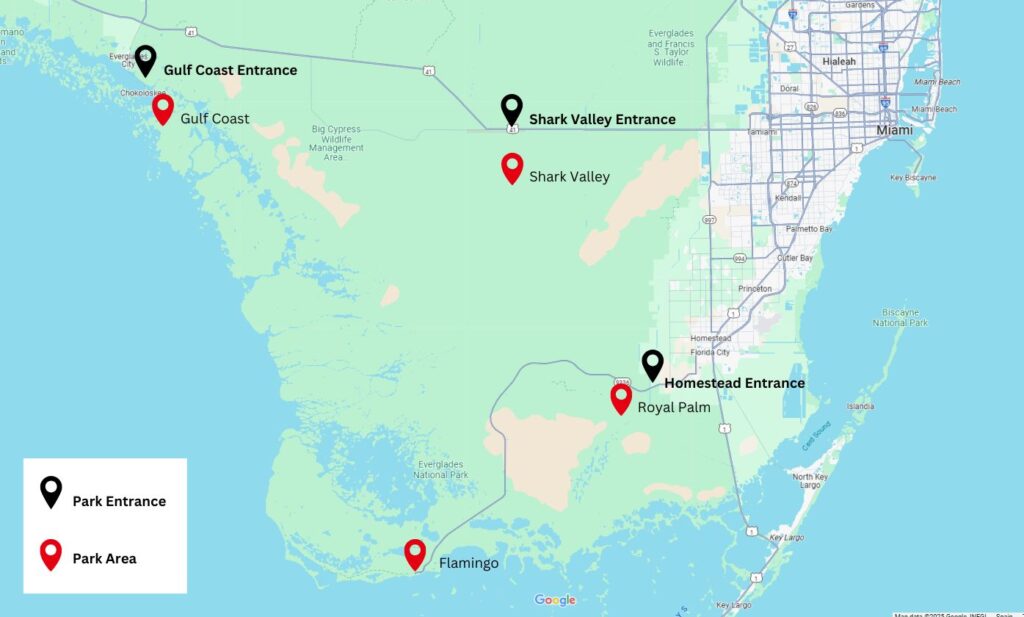
🥾 Best Things to Do in the Everglades—Organized by Park Section
As the four regions of the Everglades, Royal Palm, Flamingo, Shark Valley, and Gulf Coast aren’t interconnected, it’s best practice to hit one region per day to save on driving time. With this in mind, we’ve organized the best things to do in the Everglades into these four areas, starting off with Royal Palm!
🌴 Royal Palm
Royal Palm is the first area you’ll reach from the Homestead Entrance, the most popular entry point. Named after the Royal Palm Tree, which grows abundantly in this area, it’s best known for its abundance of wildlife, some of the most well-known trails in the park, a secret missile base from the Cold War, and more! Here are the top things to do in Royal Palm.
1. Visit the Ernest F. Coe Visitor Center
The Ernest F. Coe Visitor Center is the perfect first stop in Royal Palm. With educational exhibits, park maps, and up-to-date trail conditions, it’s a great way to get oriented before heading into the park. We stopped in to chat with the park rangers about trail conditions, inquire about any ranger-led programs happening that day, and check out the center’s educational displays.
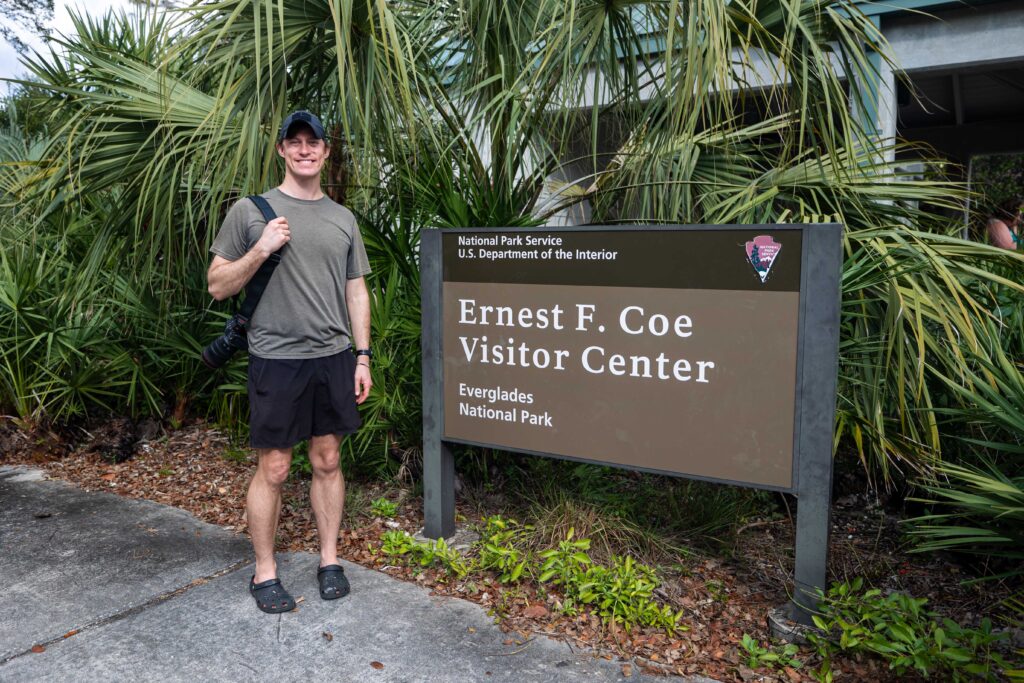
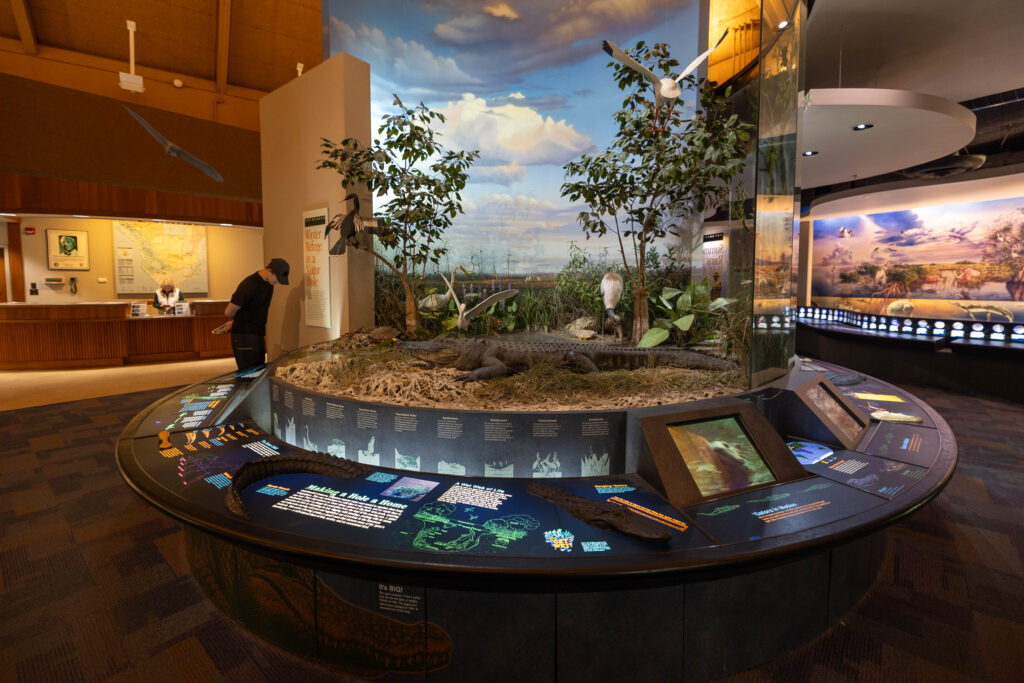
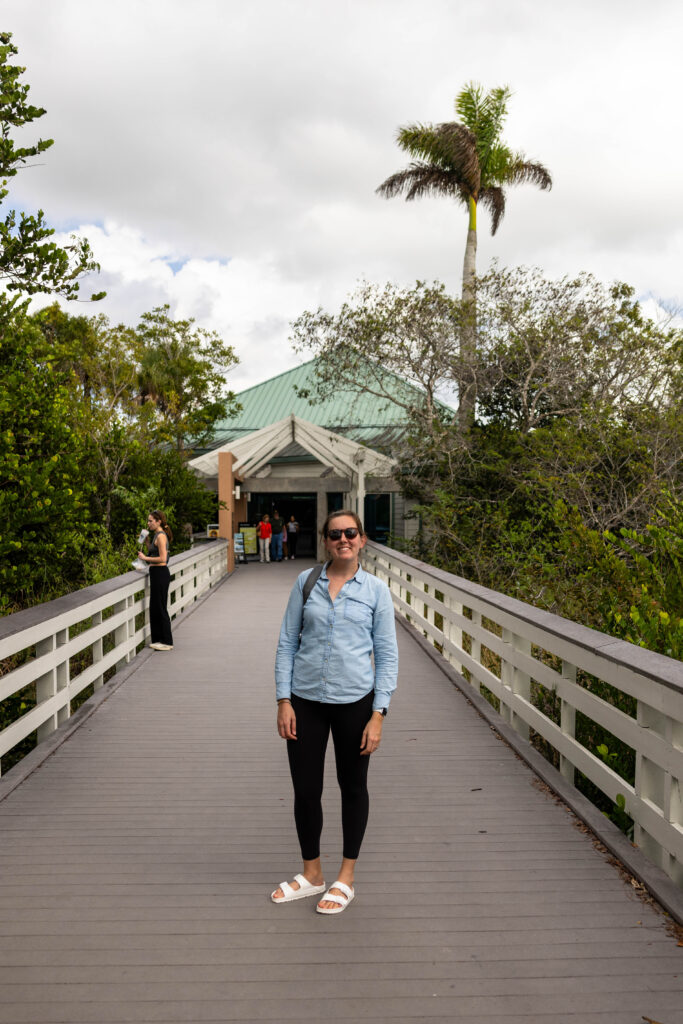
2. Go Hiking in Royal Palm
Royal Palm is home to some of the most accessible and wildlife-rich trails in the Everglades. The Anhinga Trail is a must, offering close-up views of alligators, turtles, and the famous anhinga along an easy boardwalk path. We enjoyed this trail during sunset which brought out beautiful colors and active wildlife.
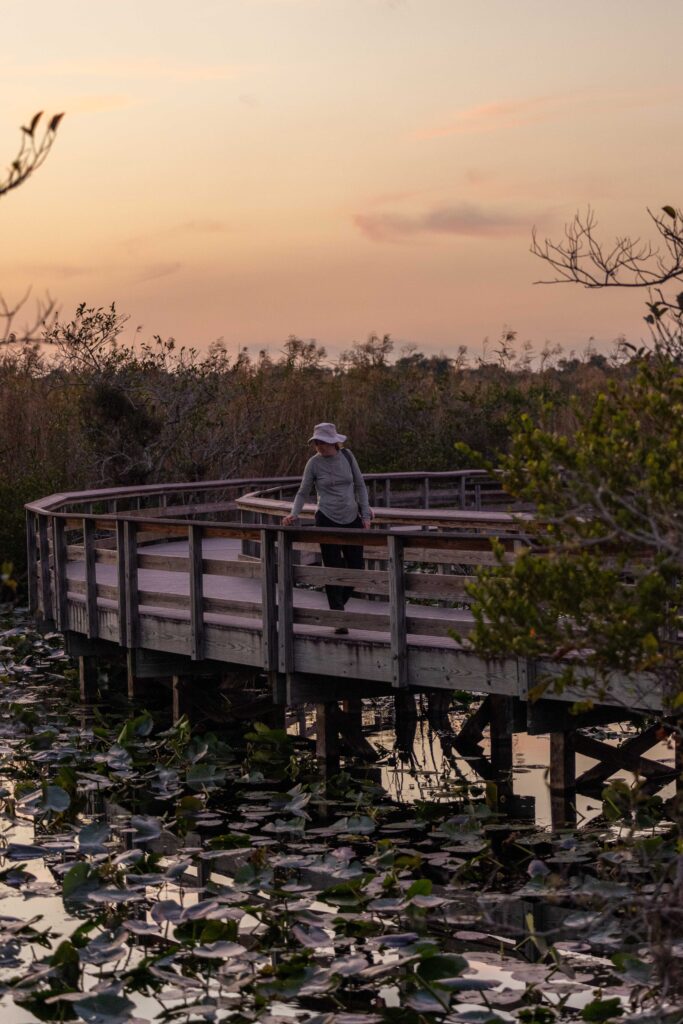
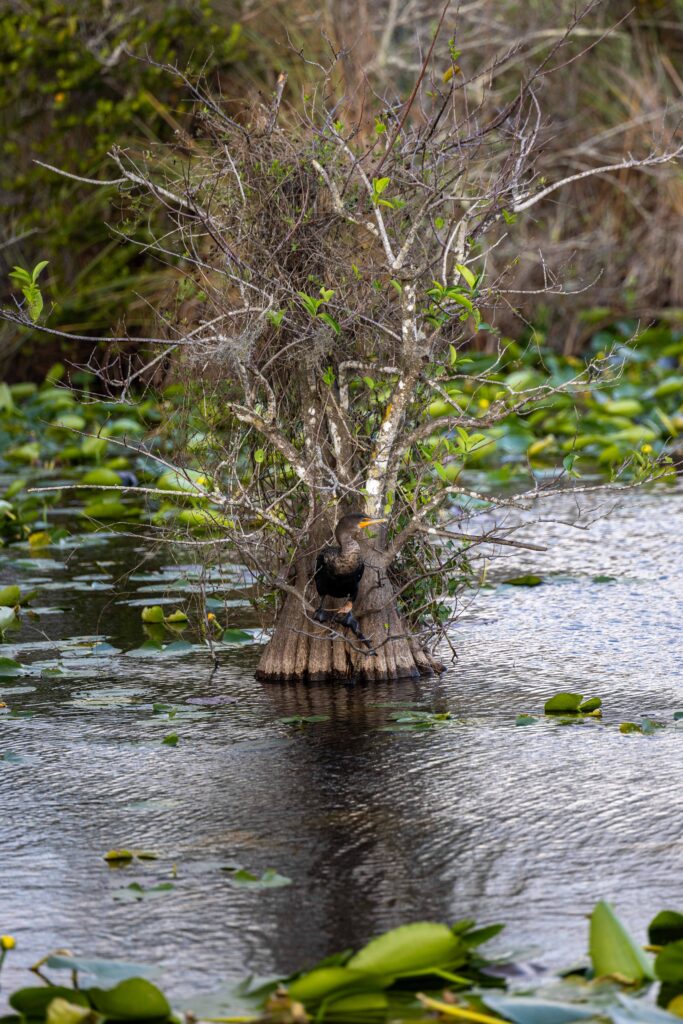
For a different side of the Everglades, the Gumbo Limbo Trail takes you through a lush, shaded hardwood hammock. These hikes are short but packed with wildlife, making them ideal for all visitors. We recommend visiting close to dawn or dusk, as that is when wildlife is most active.
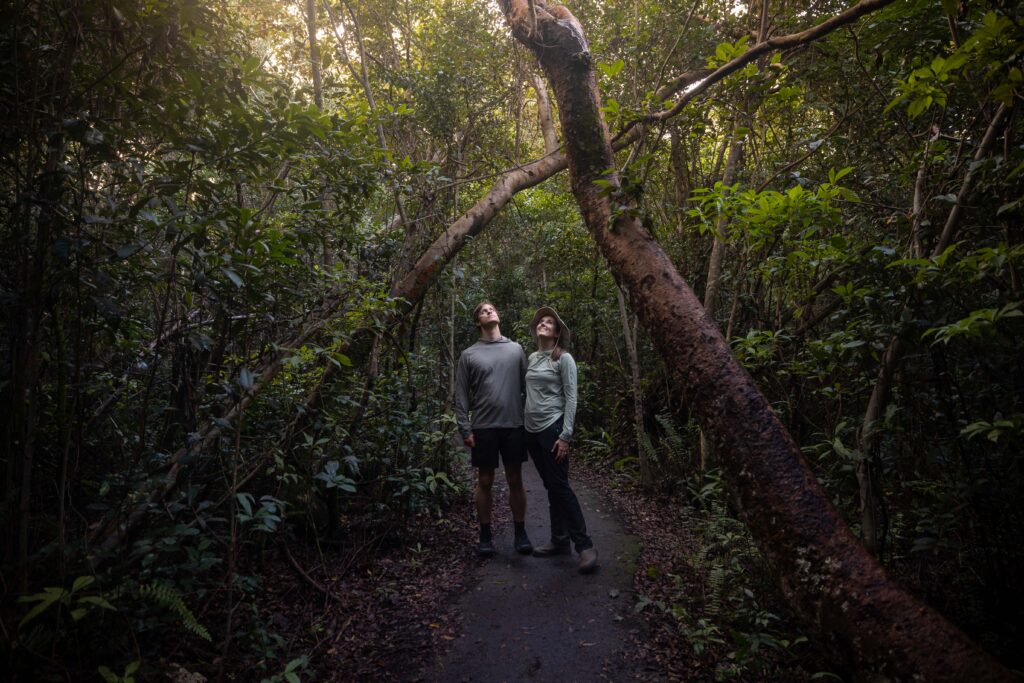

With offline maps, wrong-turn alerts, and extra planning features, make the most of every outside adventure with AllTrails Plus. Get 7 days of AllTrails Plus for free!
Royal Palm is one of the best places in the Everglades to see wildlife up close. We’ve spotted alligators, anhingas, great blue herons, turtles, and even the occasional barred owl while walking the trails here. The Anhinga Trail, in particular, is famous for its high concentration of wildlife, especially in the cooler months when water levels drop and animals gather around the deeper pools. Keep your camera ready—you never know what you might see!
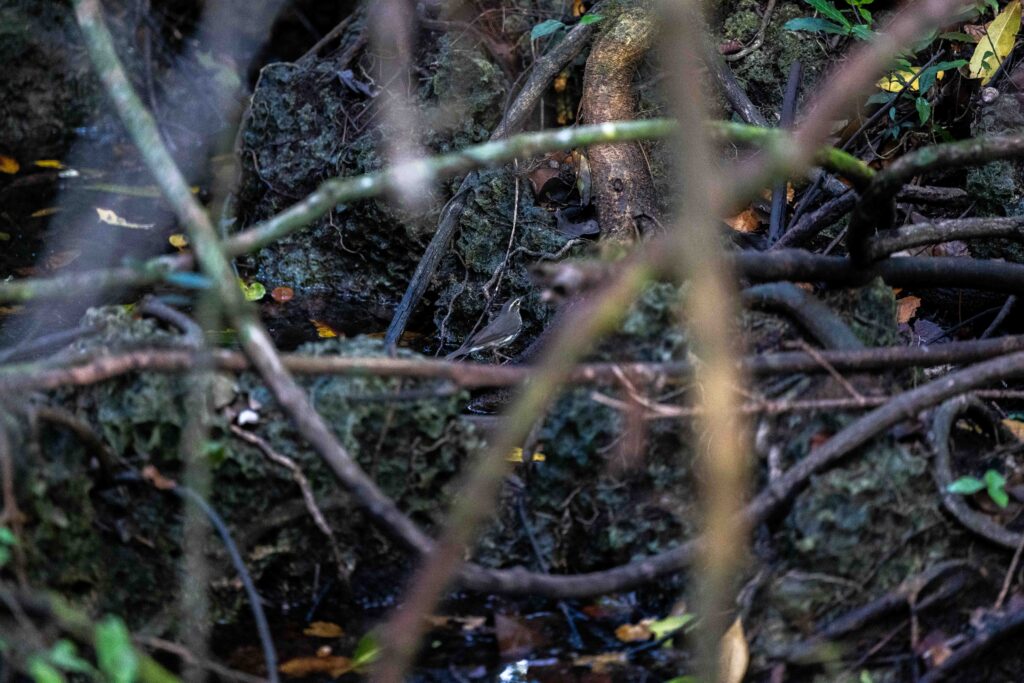
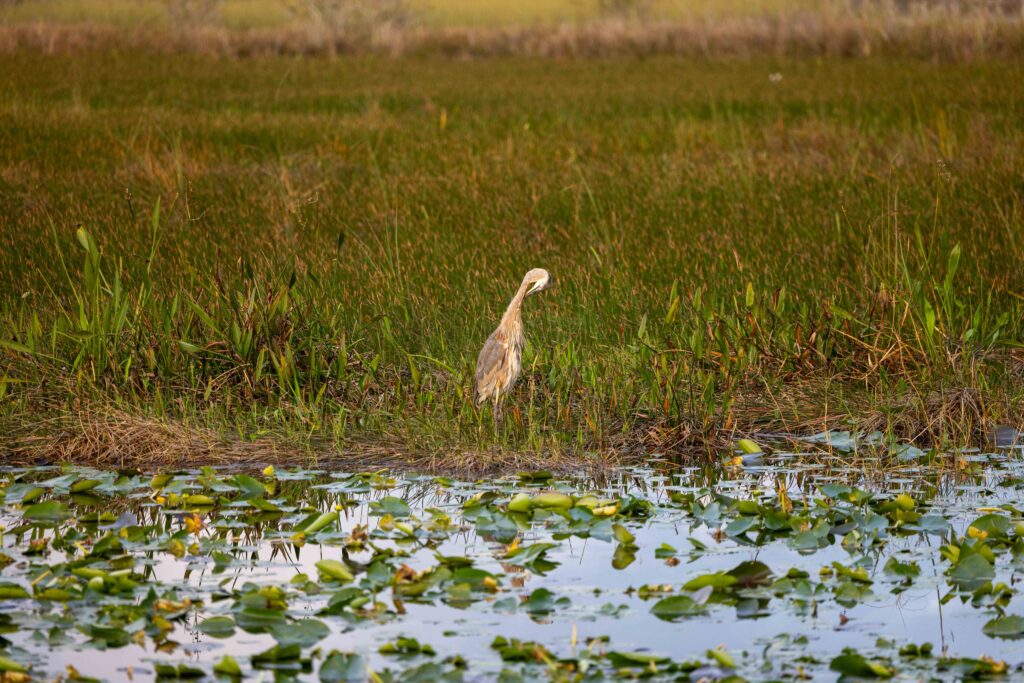
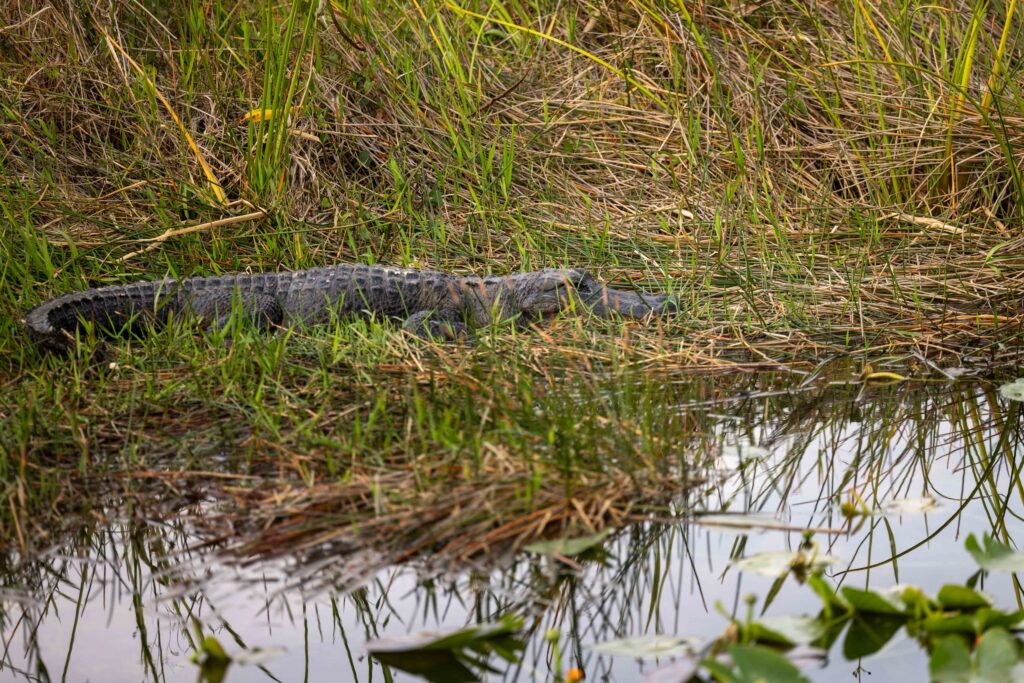
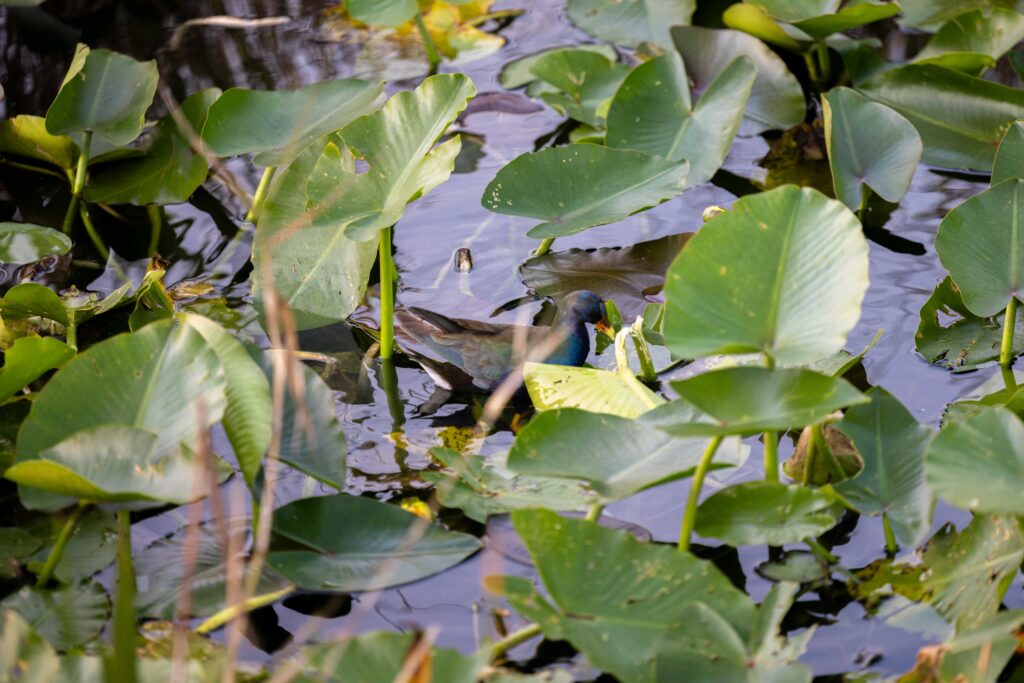
🥾 Check out our recent article, Our 9 Favorite Hikes in the Everglades, for a full list of our favorite hiking trails
3. Visit the HM69 Nike Missile Base
This Cold War-era missile site offers a glimpse into a lesser-known chapter of Everglades history. The site is hidden down a long and straight road, 15 minutes from the Royal Palm Visitor Center. It is staffed by volunteers who can tell you all about the history and purpose of the missiles. The site is only open on Saturdays from 10 AM – 2 PM, so plan accordingly if you want to visit.
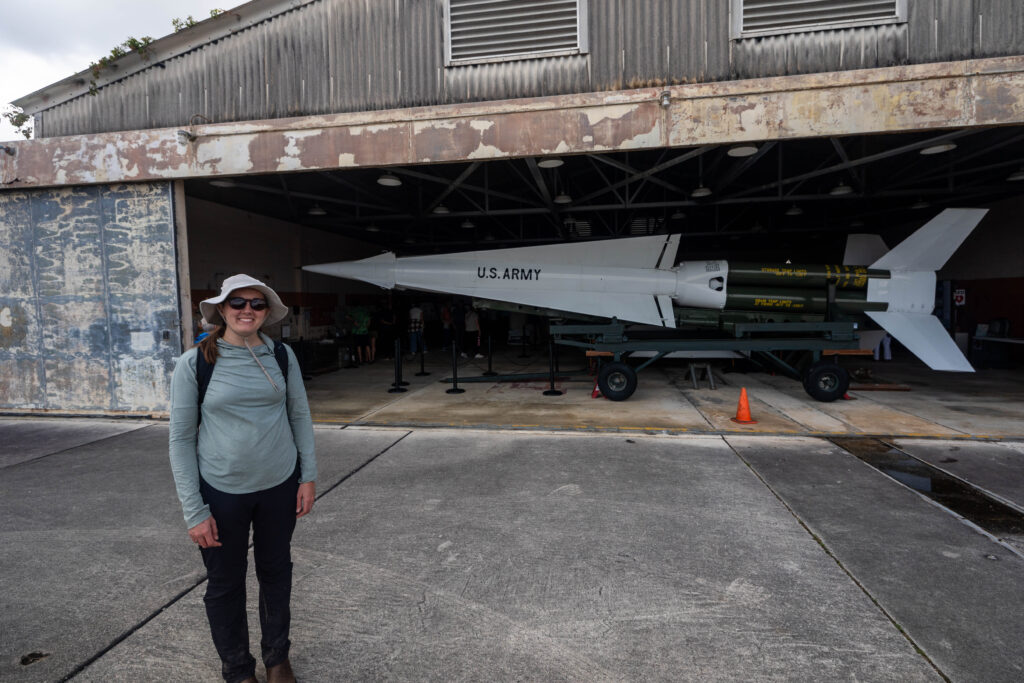
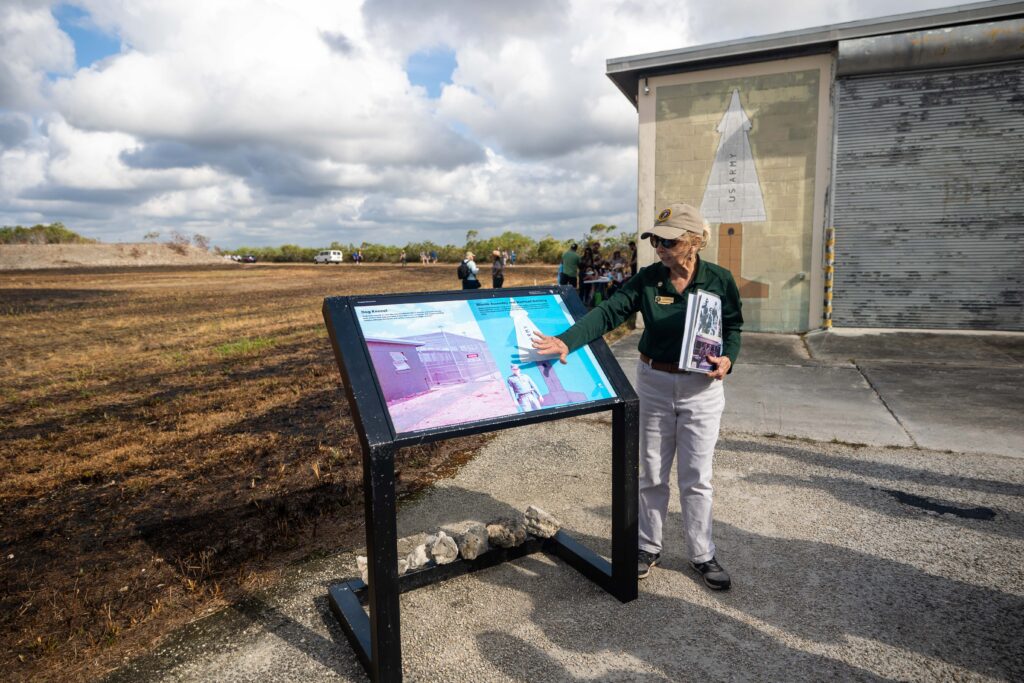
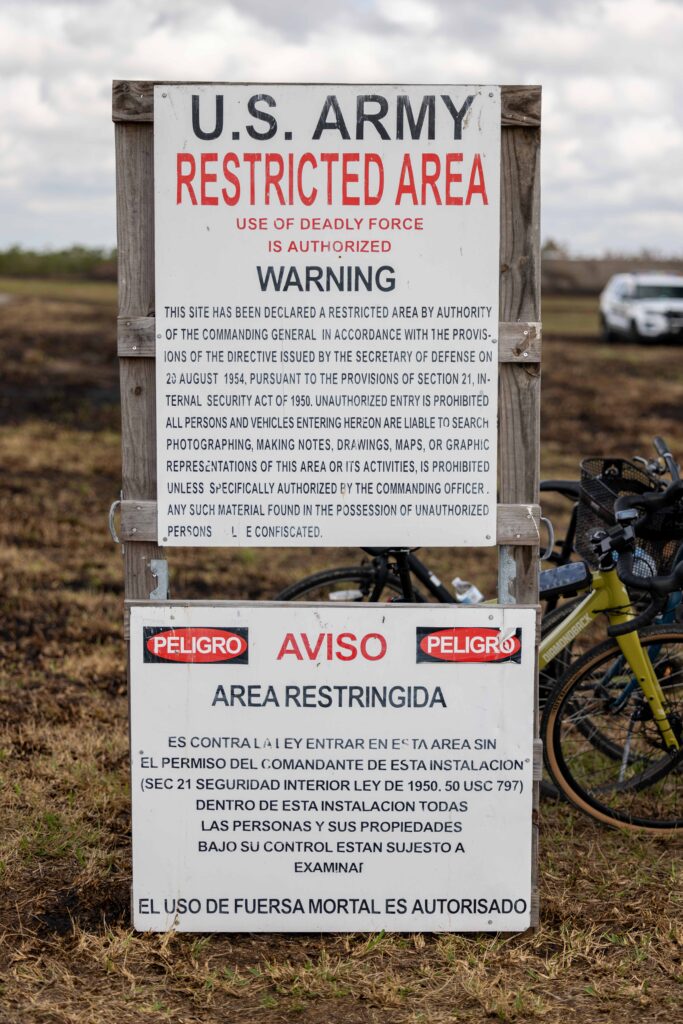
4. Go Camping at Long Pine Key Campground
If you’re looking to camp in the Everglades, Long Pine Key Campground is one of the best options. We weren’t able to reserve a spot in time, but we visited the campground during the day and loved how quiet and scenic the campground was. It’s a great alternative to Flamingo Campground if you prefer a campground with a bit more privacy (due to the pine trees) and proximity to Homestead for provisions like groceries and gas. Keep in mind that Long Pine Key is only open from November 1st to April 30th. Call 1-855-708-2207 or Reserve Here (we highly recommend reserving in advance).
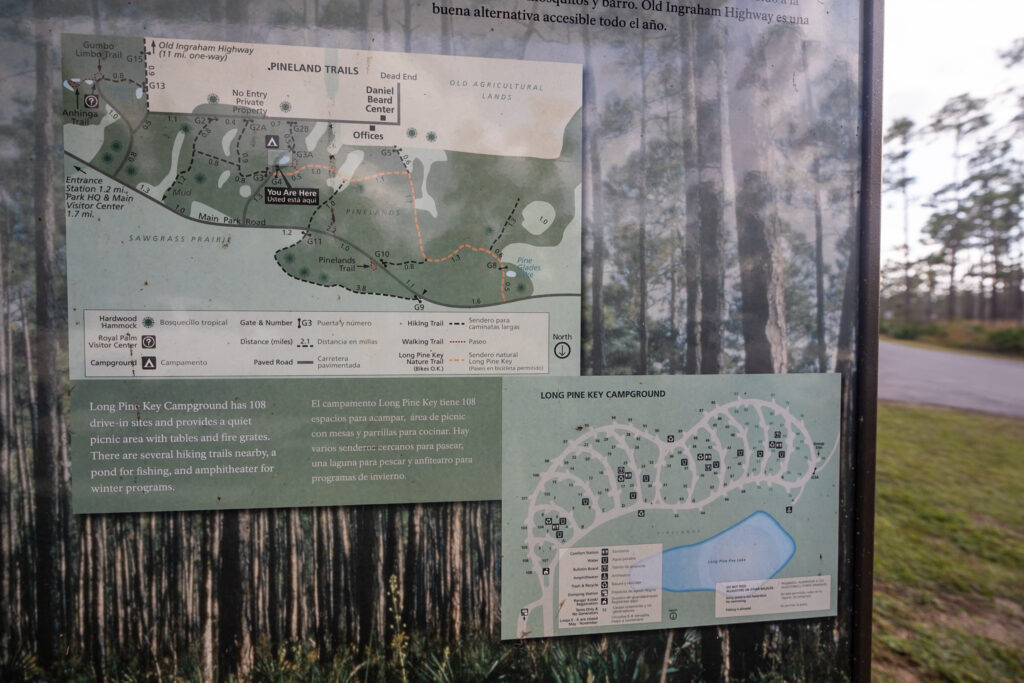
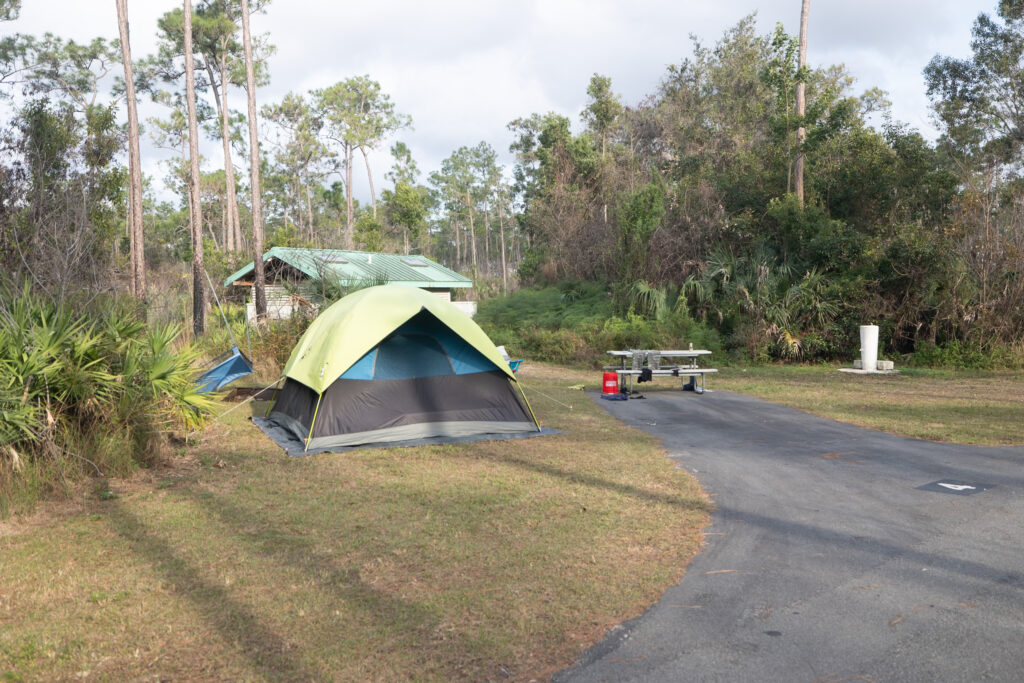
⛺ Check out our recent article, How to Camp in the Everglades: RV + Tent-Camping Guide,
for more information about scoring a campground!
5. Hop on a Ranger-Led Program
For a deeper dive into the Everglades, consider joining a ranger-led program. From guided walks to wildlife talks, these programs offer expert insight into the park’s ecosystem, history, and conservation efforts. We joined several throughout the park and were blown away by the value in each experience, especially given the fact that many are 100% free. Check the NPS website or stop by the visitor center to see what’s available during your visit.
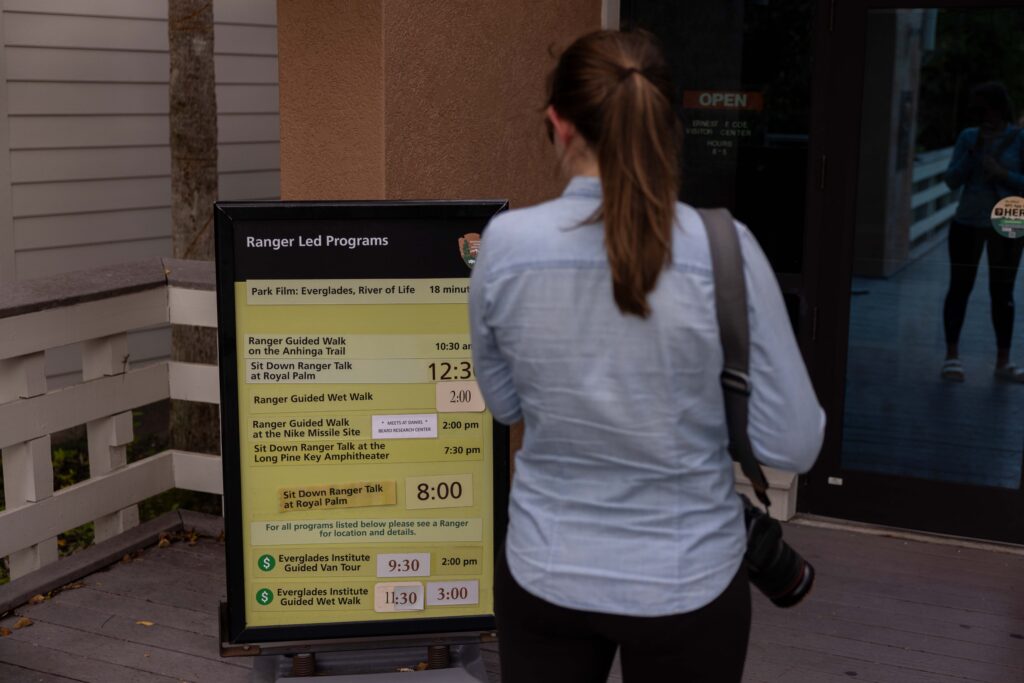
6. Explore the Hikes off of Main Park Road
Main Park Road connects the Royal Palm and Flamingo areas of Everglades National Park. Beyond being a means to travel between these two park areas, we stumbled upon several trails with gorgeous views and ample wildlife sightings. Here are the ones we went on, with a bit of information on each:
- Pa-Hay-Okee Trail – Quick, 5-minute loop trail that takes you to a gorgeous panorama of the “River of Grass.” Amazing photography spot!
- Mahogany Hammock Trail – 7-minute loop trail that takes you through a hardwood “hammock” full of gumbo-limbo trees, air plants, and mahogany trees
- West Lake Trail – 7-minute out-and-back boardwalk trail that takes you by mangroves and open water
- Pinelands Trail – 7-minute loop trail that takes you through a pineland forest
🥾 Check out our recent article, Our 9 Favorite Hikes in the Everglades, for a full list of our favorite hiking trails
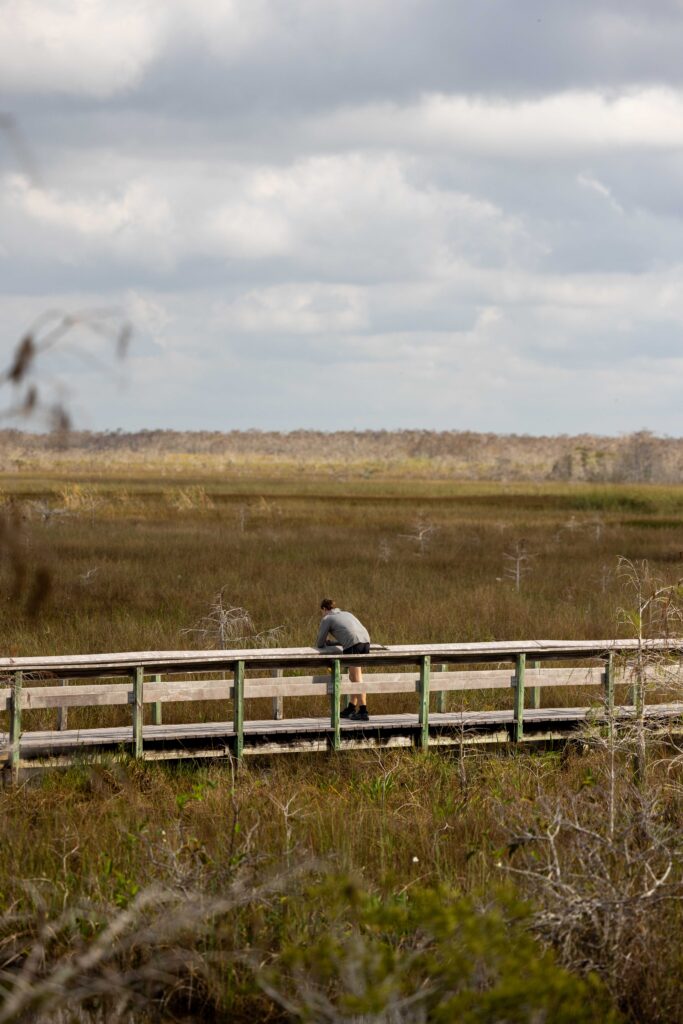
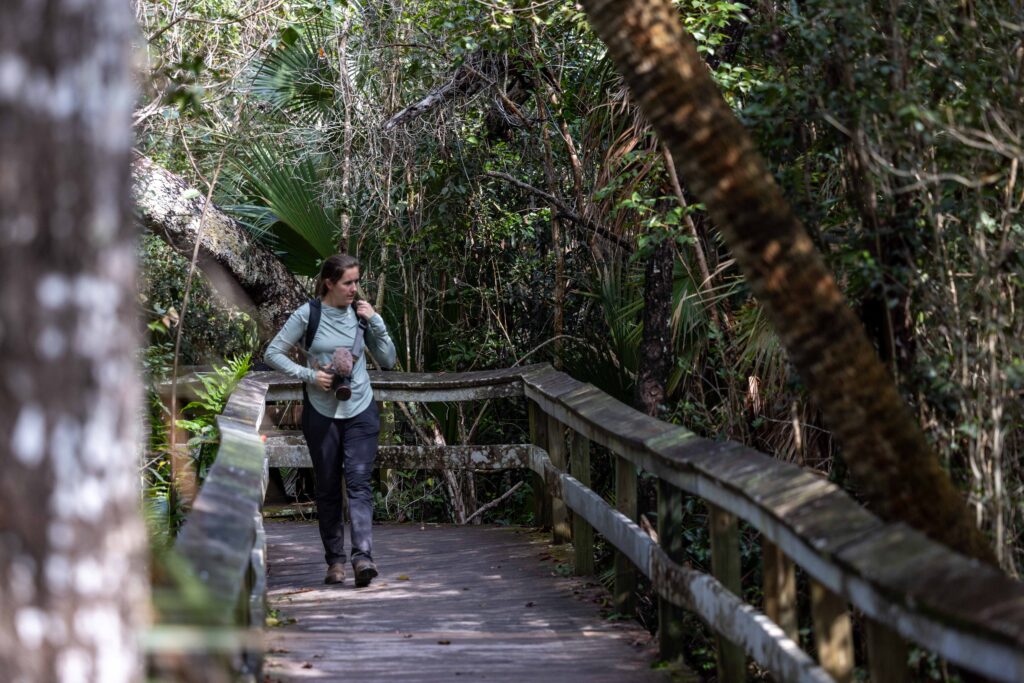
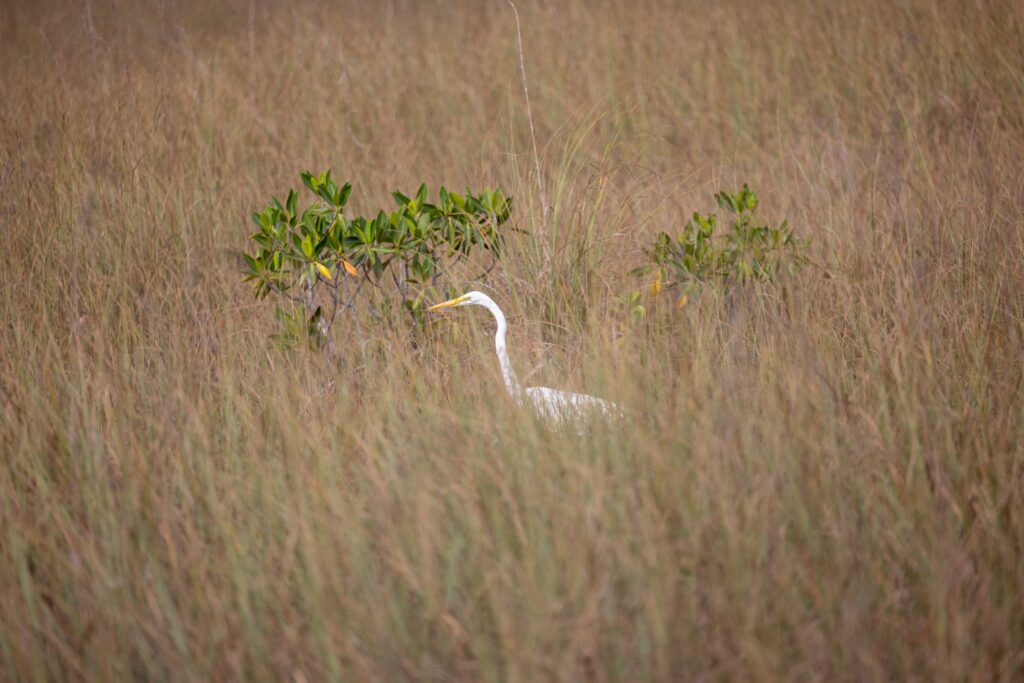
🦩 Flamingo
Flamingo is located 38 miles south of the Homestead entrance, down Main Park Road from Royal Palm. Since both regions share the same entrance, you don’t have to leave the park to get there. Flamingo is the ideal spot for seeing crocodiles and manatees, canoeing, kayaking, and taking boat tours. Here’s a breakdown of everything to do in Flamingo.
1. Visit Guy Bradley Visitor Center
The Guy Bradley Visitor Center is the perfect first stop when you arrive in Flamingo. It’s a smaller center compared to others in the park, but it’s packed with great information about the Everglades’ wildlife and ecosystems, plus maps and exhibits to help you plan your day. We loved getting an overview of the area here and hanging out by the water before heading out on our adventures!
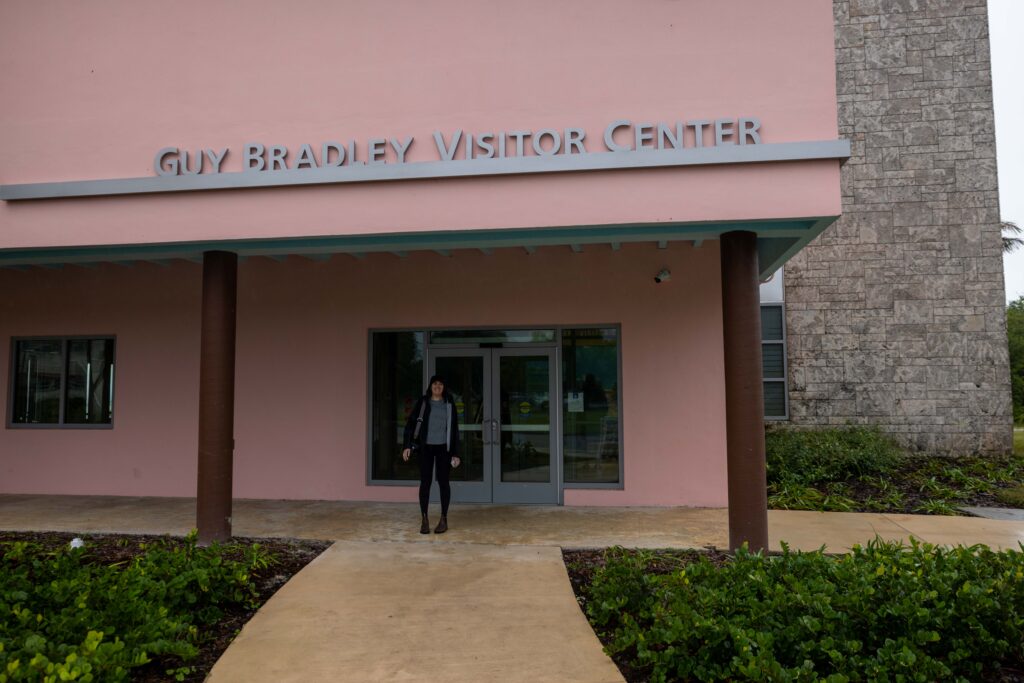
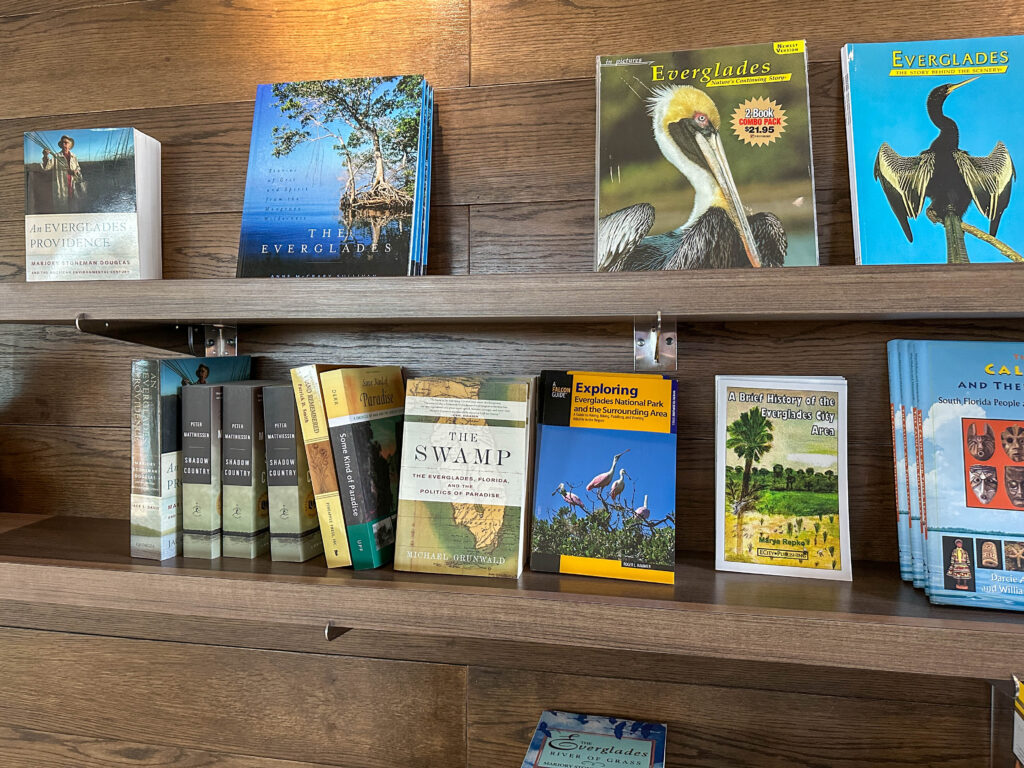
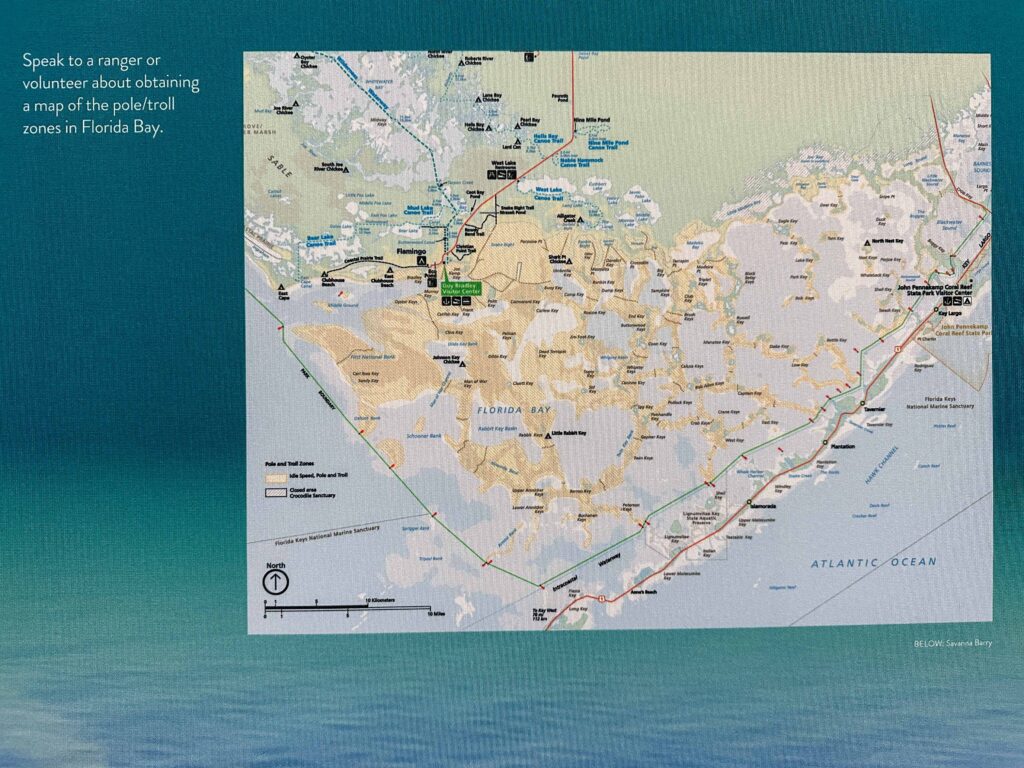
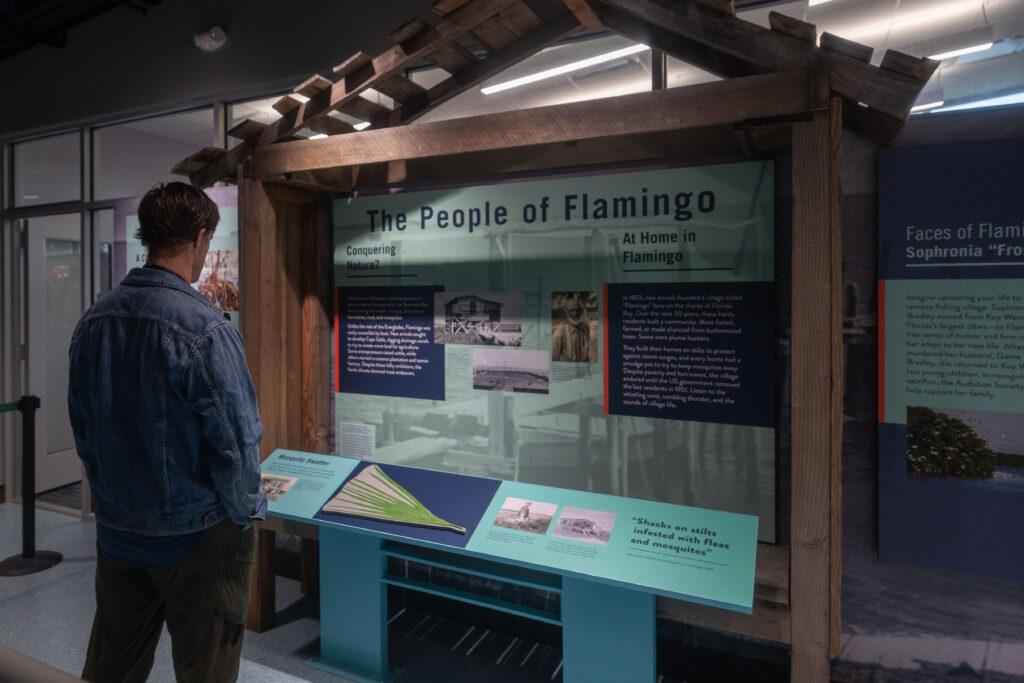
2. Rent Paddles, Canoes, or Kayaks
Flamingo is a prime spot to rent a canoe or kayak and get close to the park’s beautiful waterways. Rentals are available right at the Flamingo Marina, or there are also private canoe rental companies outside of the park for when canoes in Flamingo are sold out. Popular routes are the Florida Bay, the Buttonwood Canal, and 9 Mile Pond, located a few miles back up the Main Park Road. If you have a bit of paddling experience, you can ask rangers for recommendations of even more routes. If you’re hesitant about paddling on your own, there are guided tours with private companies and park rangers as well.
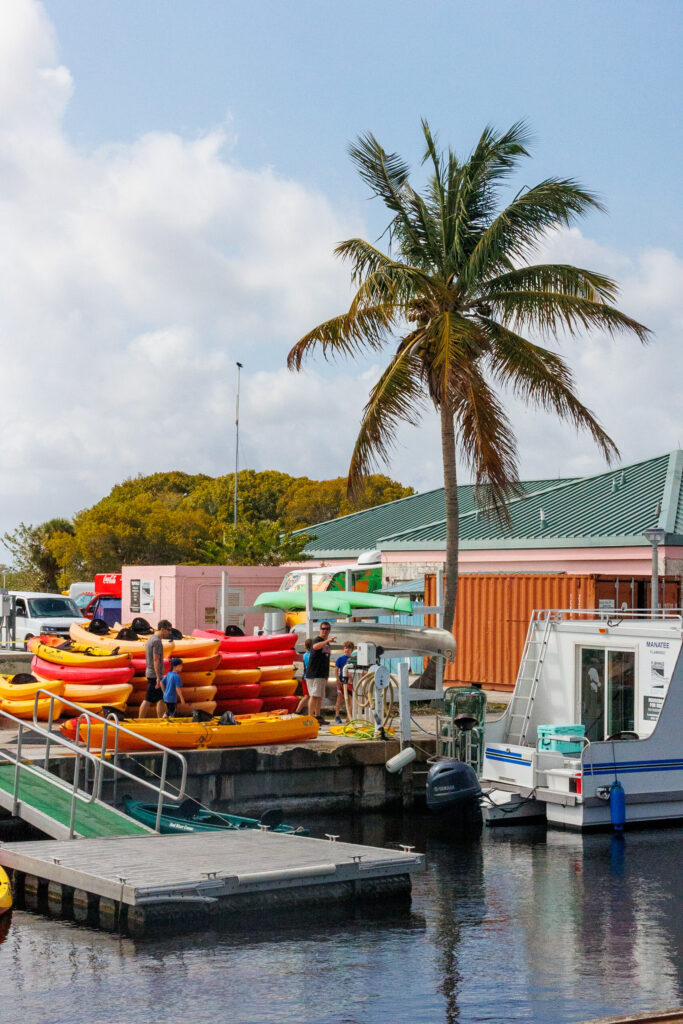
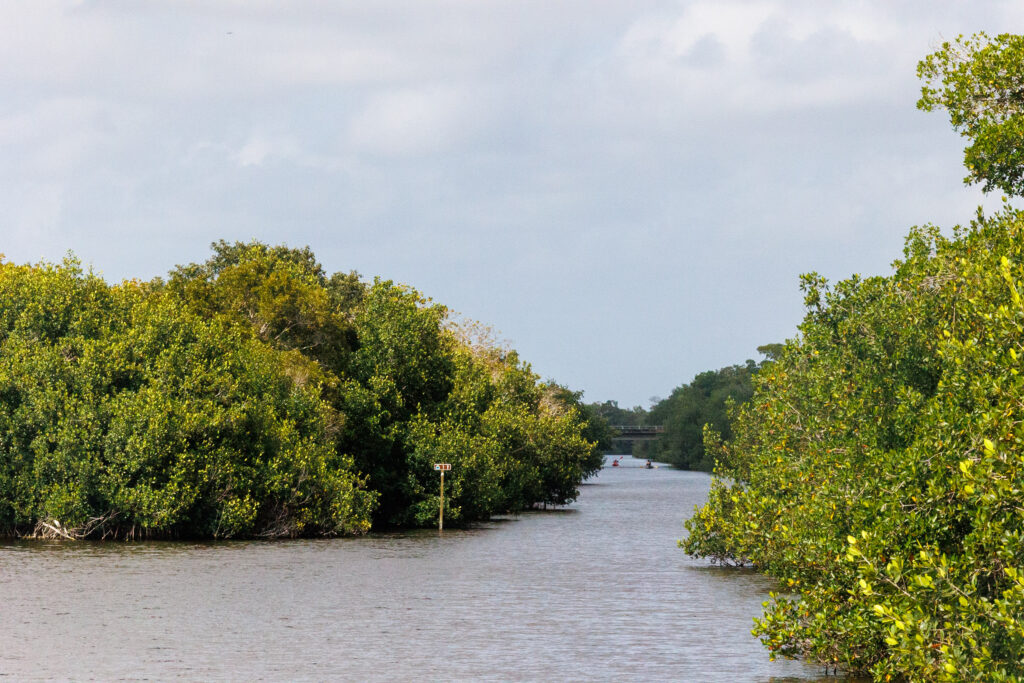
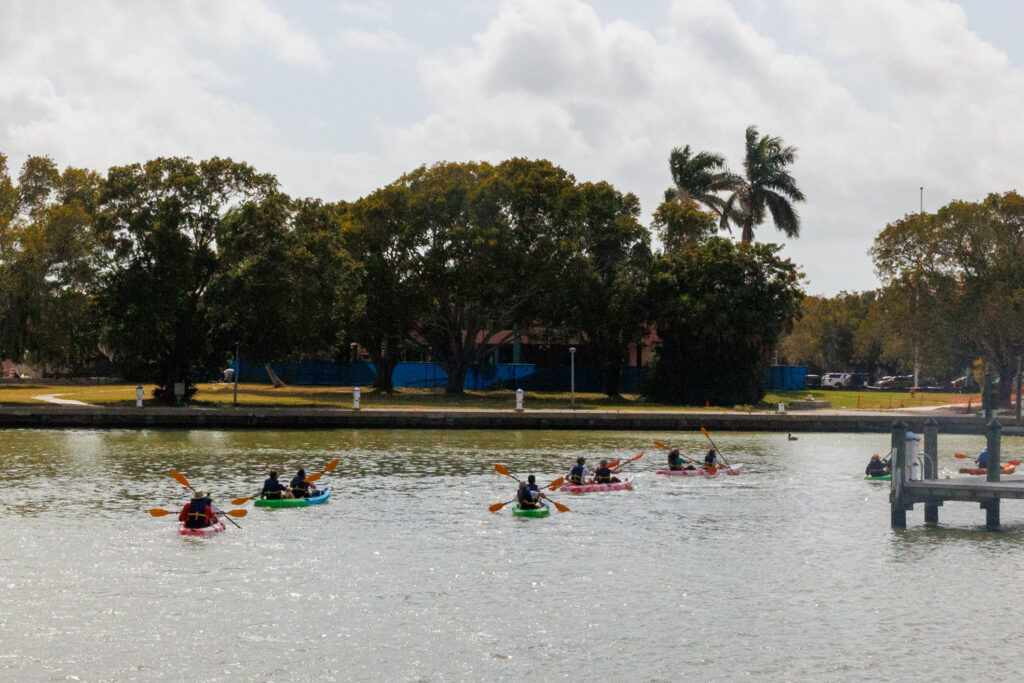
3. Reserve a Boat Tour
If you’re tired from hiking or just want to see more of the Everglades by water without paddling, booking a boat tour is a great option. From Flamingo Marina, you can hop on a guided boat tour through the area’s scenic waterways, including Buttonwood Canal, Coot Bay, and Whitewater Bay.
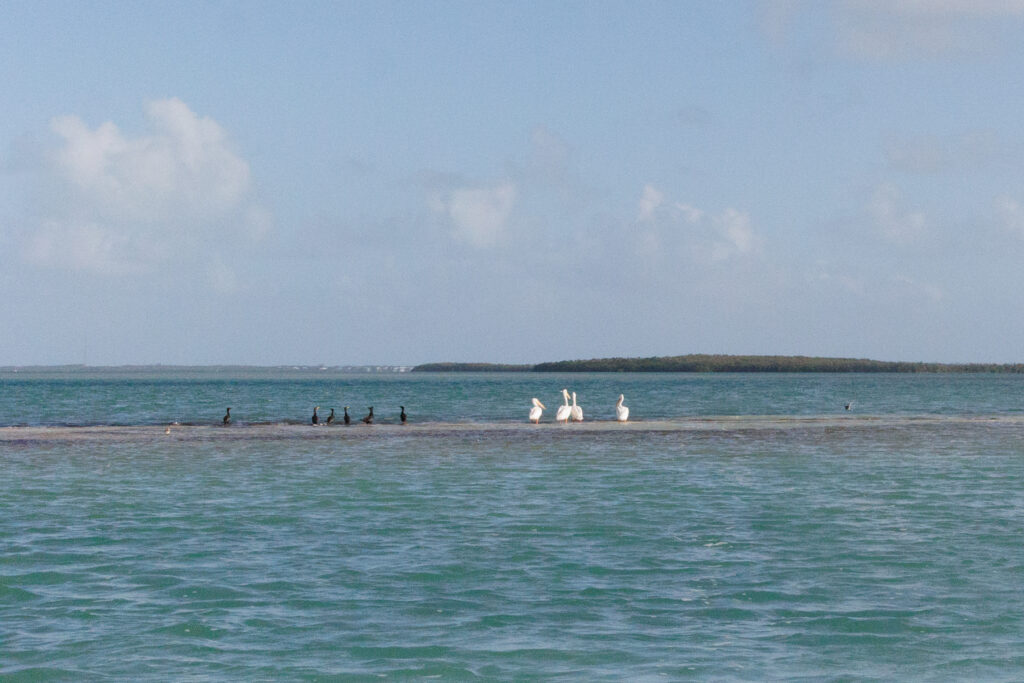

We found this 90-minute tour that is led by a naturalist guide who points out wildlife like birds and alligators and shares fascinating insights about the ecosystem. To ensure you get a spot during the busy season (dry season), we recommend booking in advance. Flamingo Adventures also runs several tours from Flamingo Marina!
4. Go Hiking in Flamingo
Flamingo offers several fantastic trails that take you through the park’s diverse ecosystems. Here are three that we did on our last trip. You can find maps for each of these on AllTraills.
- Snake Bight Trail – 1-hour shady out-and-back trail that takes you to Florida Bay
- Coastal Prairie Trail – 3.5-hour out-and-back trail on an old fishermen’s road
- Rowdy Bend Trail – 1.5-hour trail that takes you through shady buttonwoods and an open coastal prairie
🥾 Check out our recent article, Our 9 Favorite Hikes in the Everglades, for a full list of our favorite hiking trails
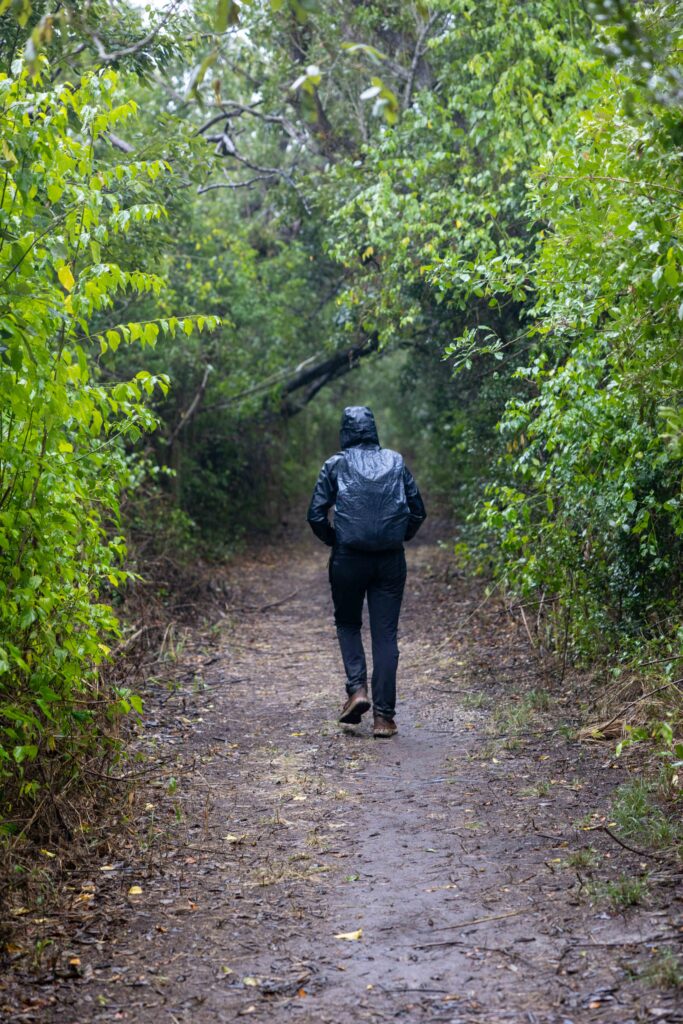
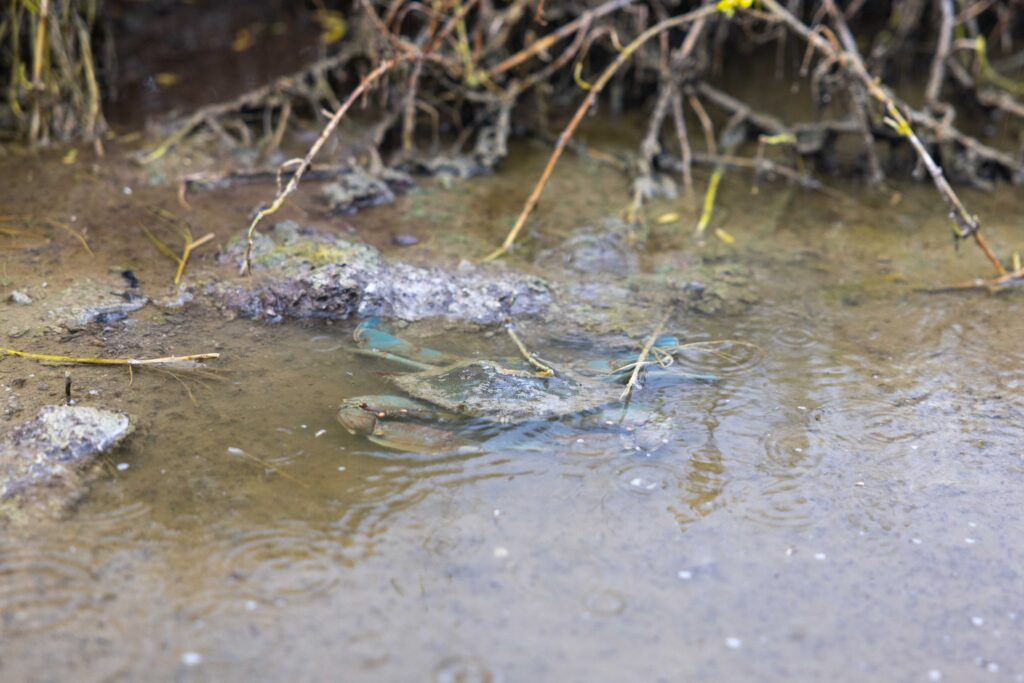
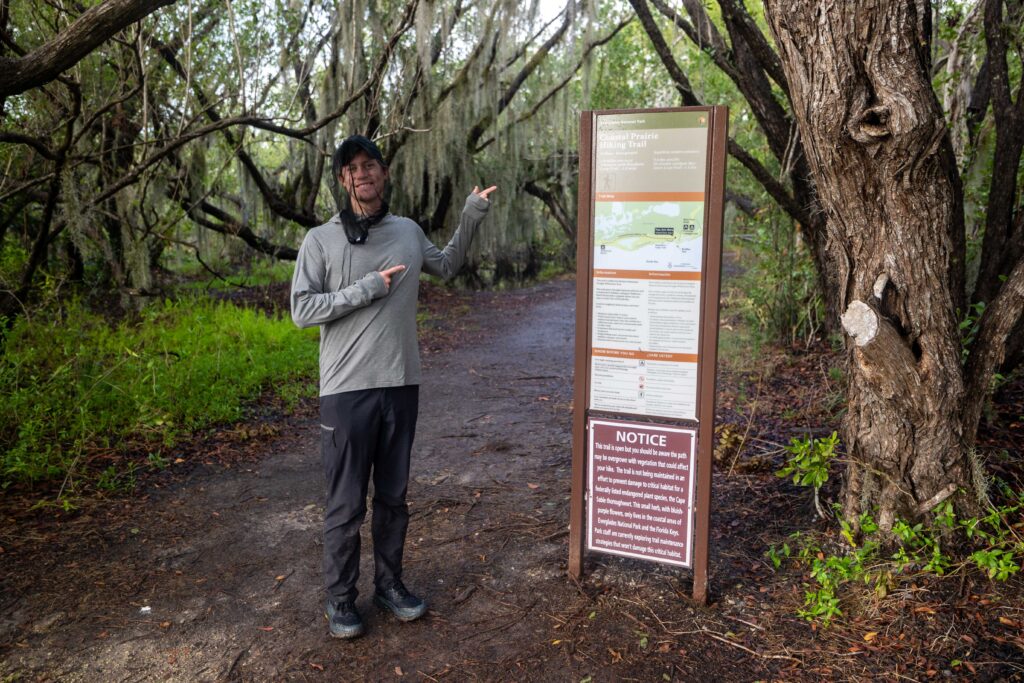
5. Wildlife Watch at Flamingo Marina
Flamingo is an incredible place for wildlife enthusiasts! We recommend posting up at the marina, where crocodiles and manatees are known to hang out. In particular, keep an eye out for a 14-foot-long crocodile named Freddy after Freddy Kruger. He earned this name when rangers realized he wasn’t just fighting and killing male crocodiles, but females as well—something male crocs don’t normally do!
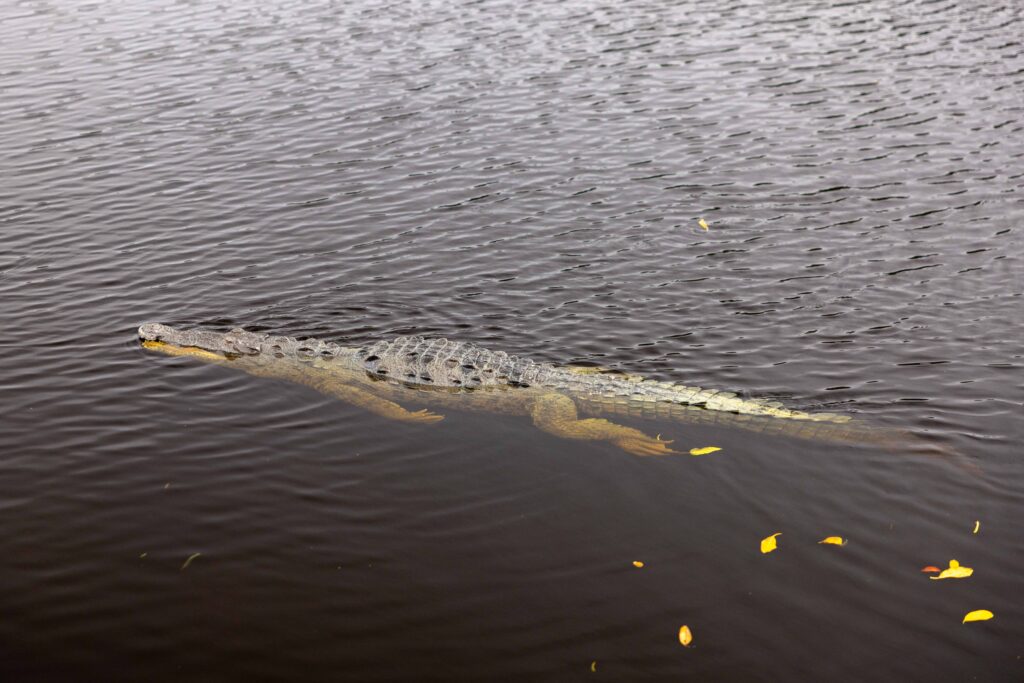
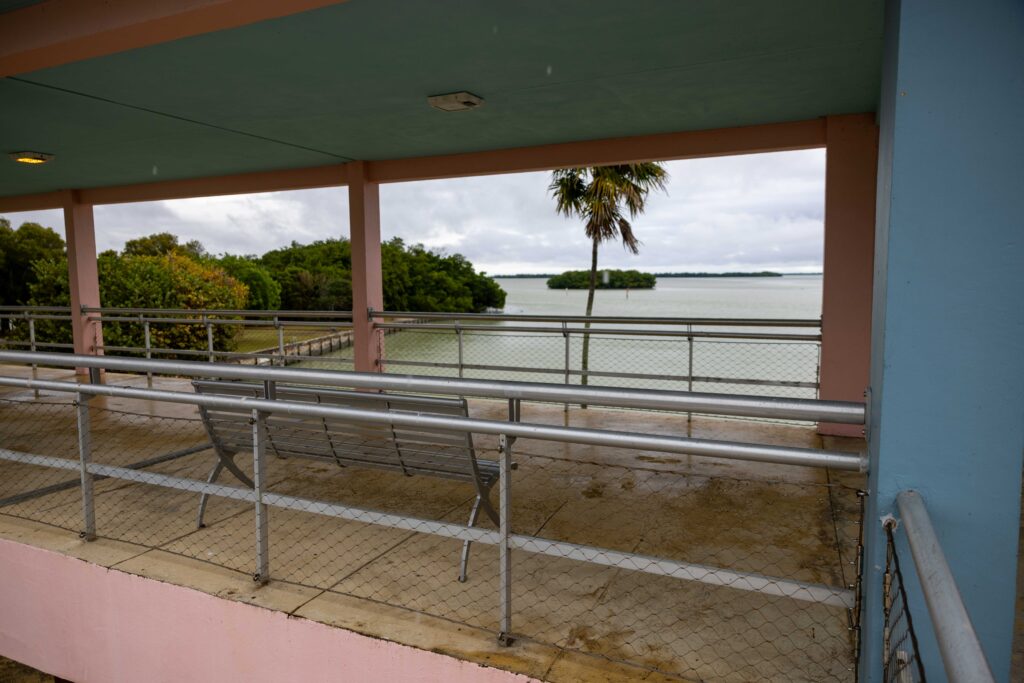
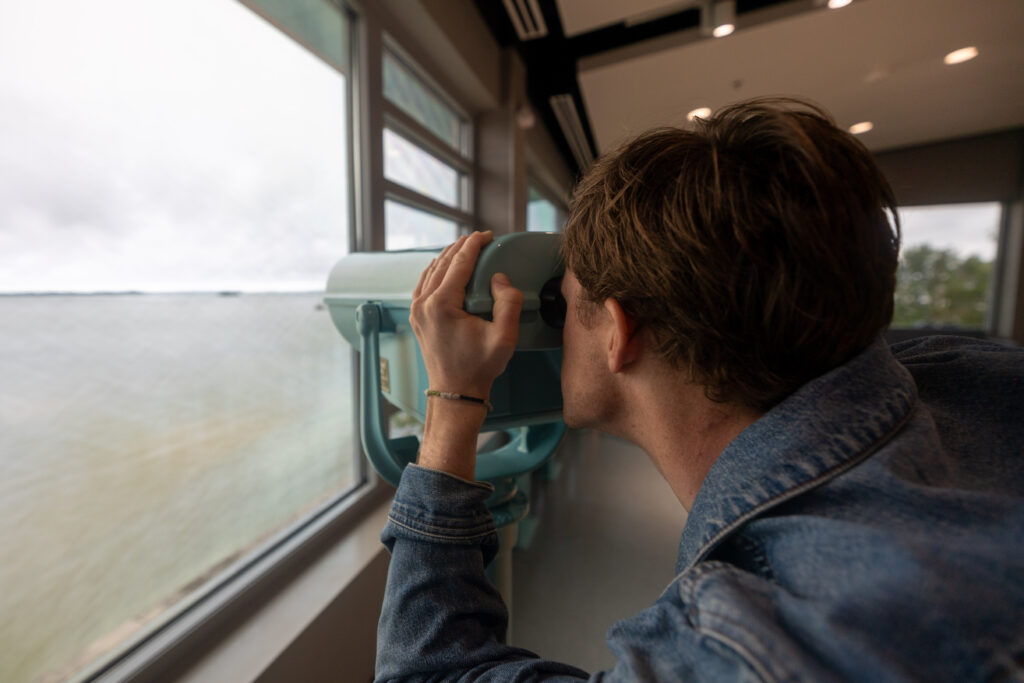
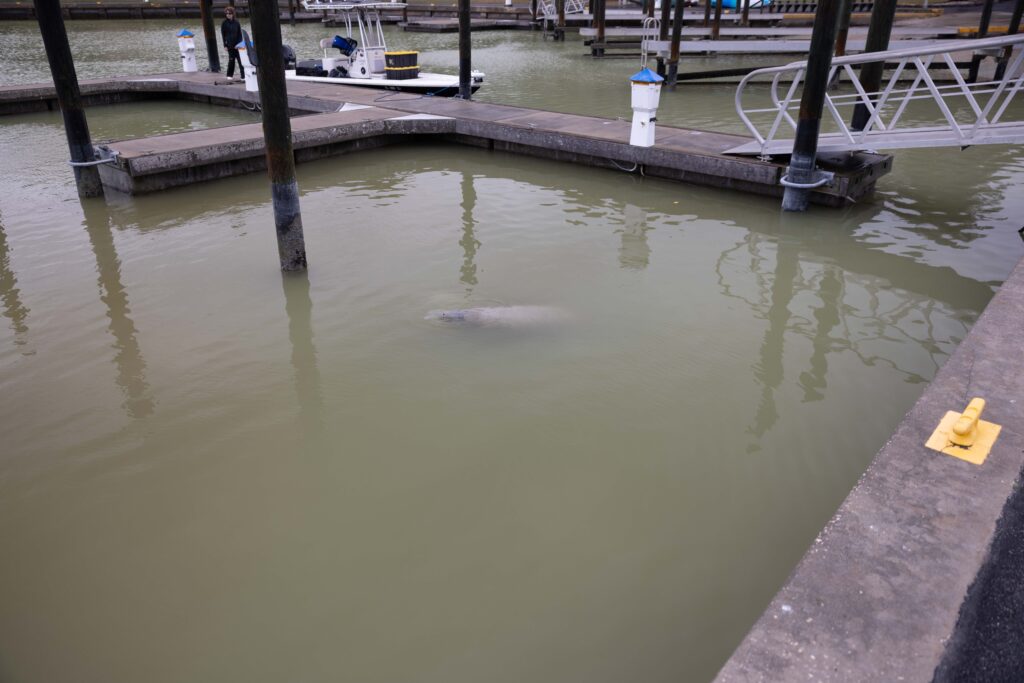
6. Go Camping at Flamingo Campground
Flamingo Campground is one of the most popular spots for camping in Everglades National Park, and where we stayed in our RV. It’s the southernmost campground in the U.S. and offers great facilities adjacent to Florida Bay. Unlike Long Pine Key, Flamingo Campground is open year-round and is about twice the size, making it less competitive to get a spot.
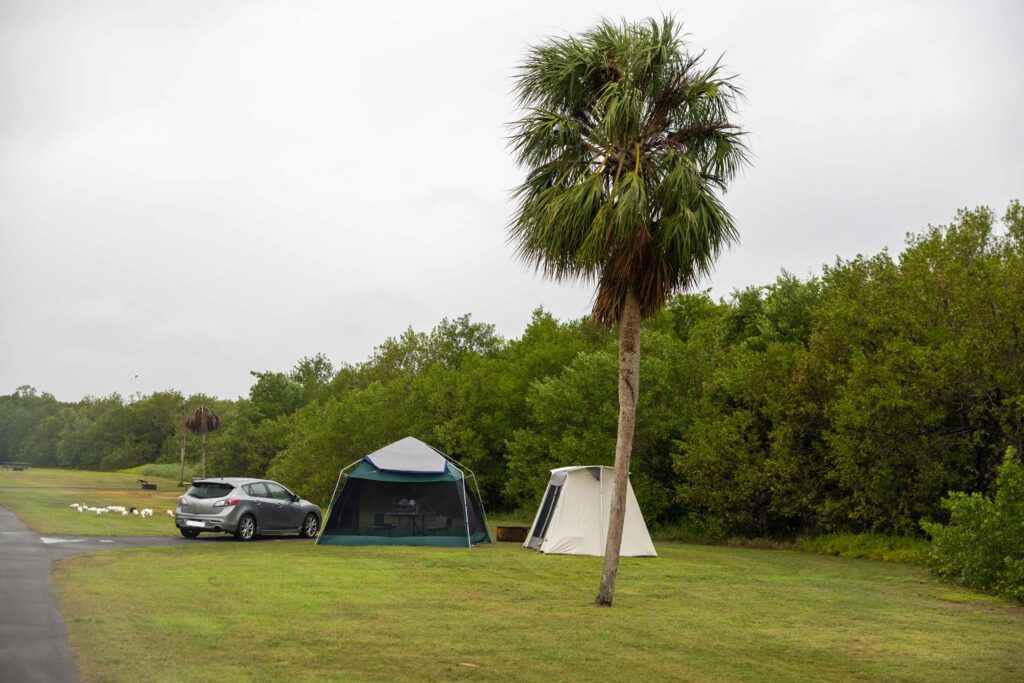
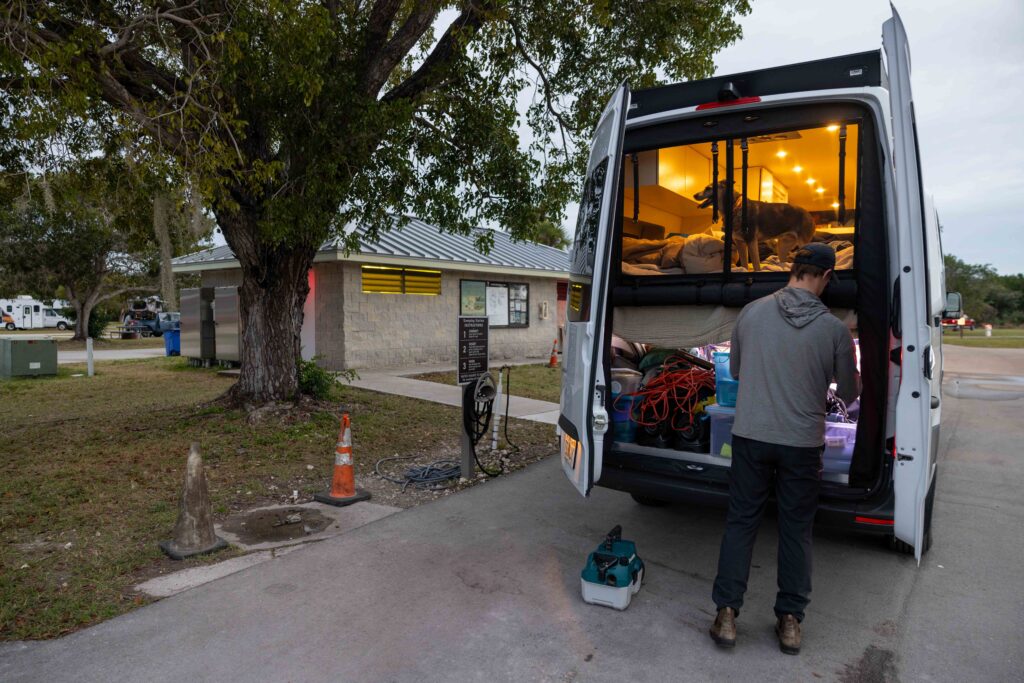
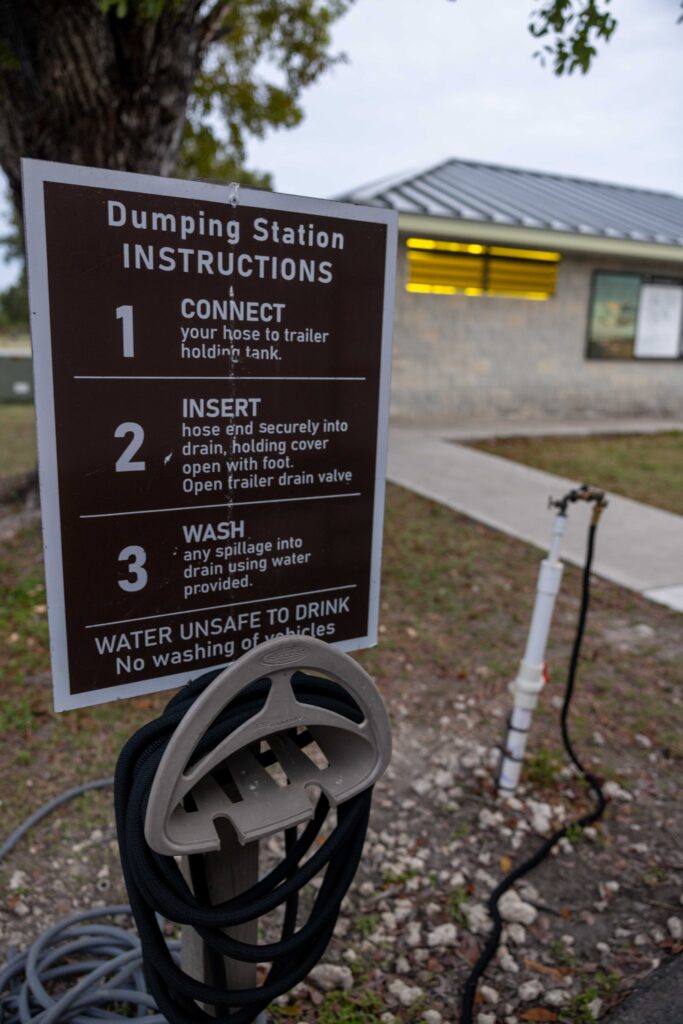
One of the downsides to this campground is the fact that it’s a 1-hour drive away from Homestead, so if you camp here try to come with a full tank of gas and enough provisions for your stay. Call 1-855-708-2207 or Reserve Here to secure your spot.
⛺ Check out our recent article, How to Camp in the Everglades: RV + Tent-Camping Guide,
for more information about scoring a campground!
7. Go on a Ranger-Led Tour in Flamingo
Per usual, we recommend checking out Flamingo’s Ranger Led programs either at Guy Bradley Visitor Center, or in advance online. On our last visit, we went on an amazing night hike with Ranger Kenzie to the West Loop Trail and loved it! She expertly guided us around the terrain, explained what wildlife we were hearing, and described the stars and constellations that we could see above us! The Park Rangers always point out new things that we otherwise would not have seen or known about, making their tours one of our go-to activities in National Parks.
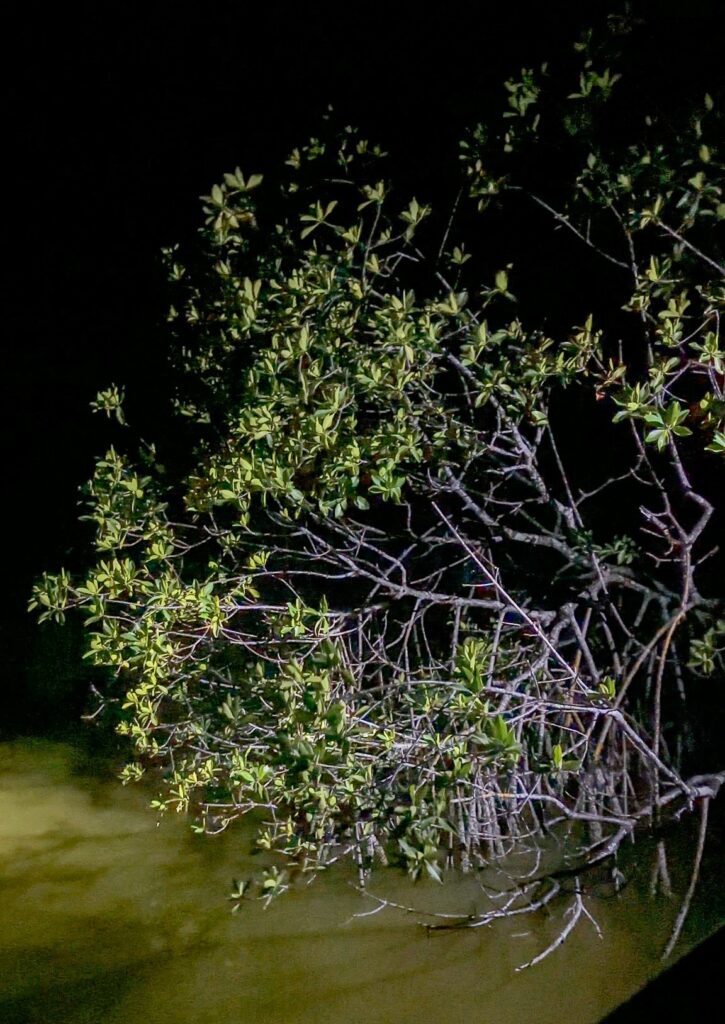
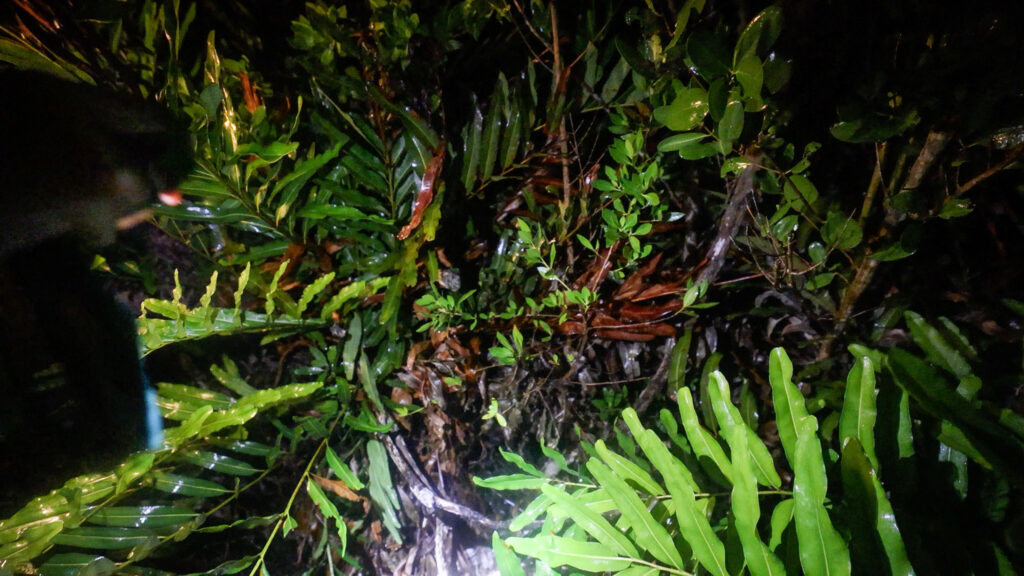
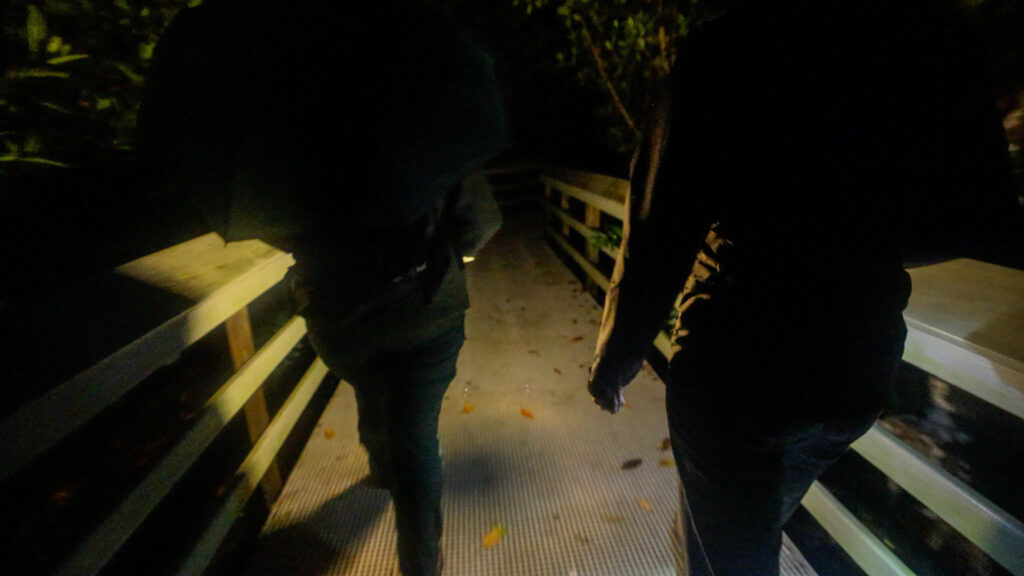
🦈 Shark Valley
Shark Valley, located along the northern edge of Everglades National Park, is an area teeming with all kinds of wildlife, from alligators to wading birds. As it’s roughly an hour’s drive from the Homestead entrance, we recommend exploring it on a separate day from Royal Palm and Flamingo. Here are the best things to do in Shark Valley!
1. Visit the Shark Valley Visitor Center
Stop by the Shark Valley Visitor Center to get your bearings. This small but informative center offers exhibits on the Everglades’ ecosystem, a park film, and a helpful staff to answer any questions. You can also find restrooms, a gift shop, and a place to grab water before heading out.
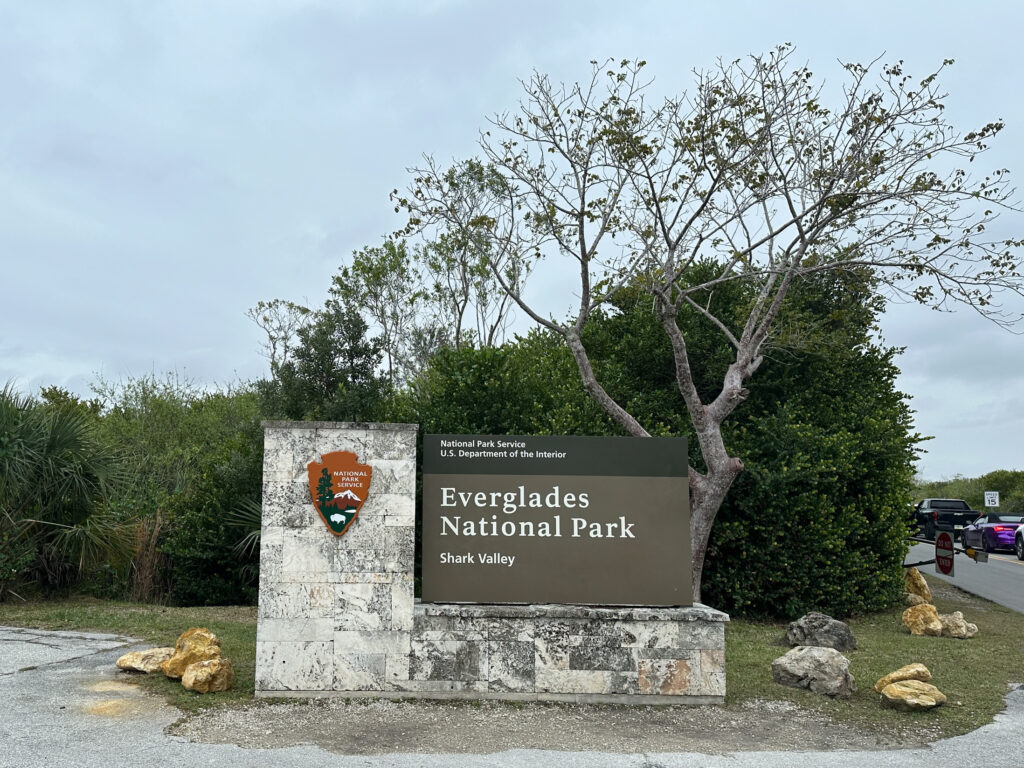
If you’re planning to bike or take the tram down the Shark Valley Trail, this is also where you’ll book your tickets. During the high season (dry season), this section of the park can be booked early. We recommend getting there right when the park opens to guarantee a parking spot.
2. Bike, Walk, or Ride the Shark Valley Tram Road
Shark Valley’s 15-mile paved loop is the main draw of this region. There are three ways to travel it—by bike, by tram, or by hiking. Here’s a quick breakdown of each:
- Rent a bike – $9 an hour, takes about 3 hours out and back, bikes back by 4 pm
- Tram Tours – $33 for 2 hours, naturalist guide explains what you’re seeing as you go
- Walking – Free, takes 4-5 hours round trip
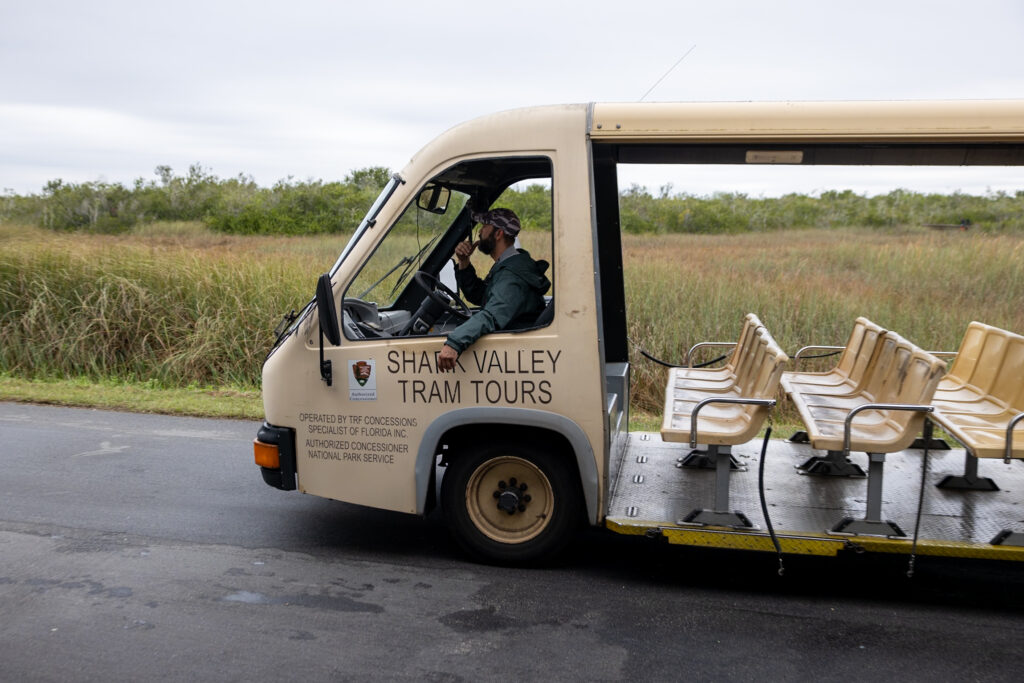
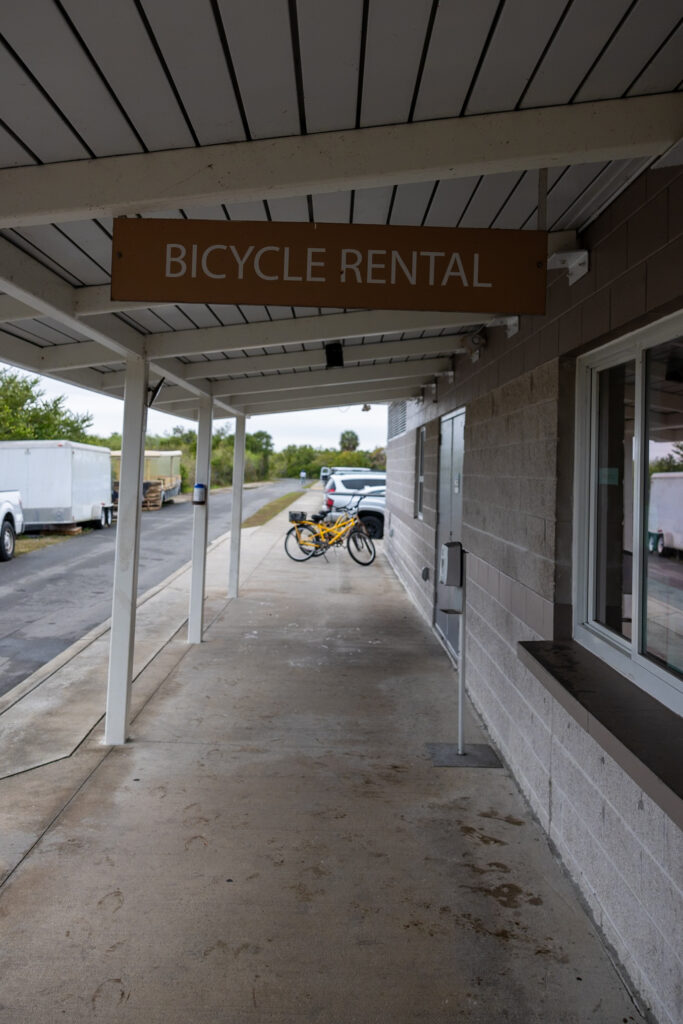
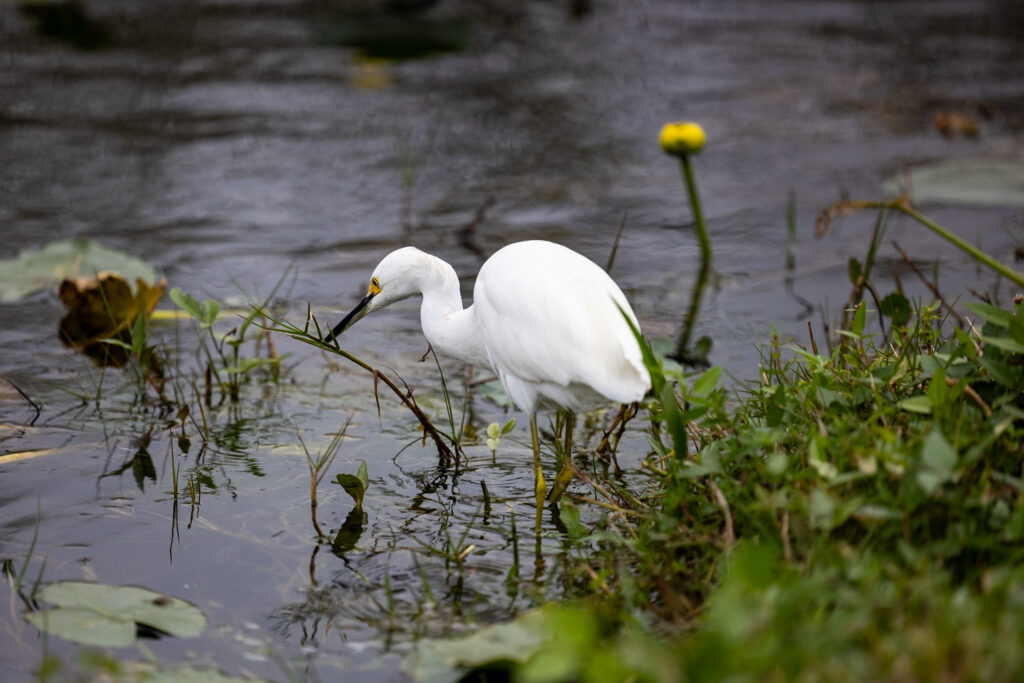
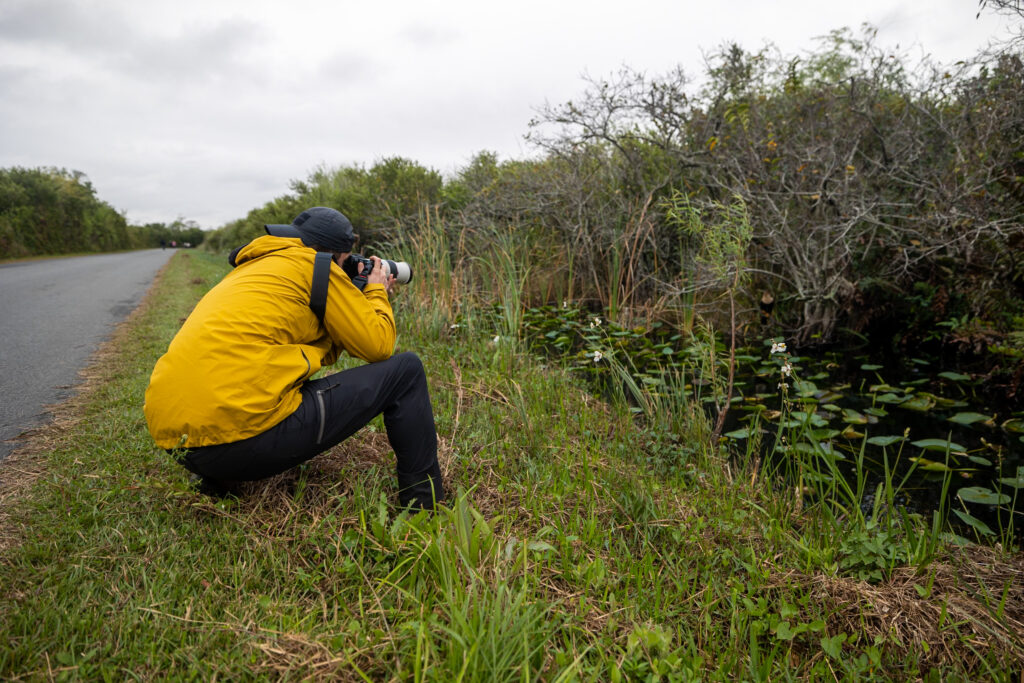
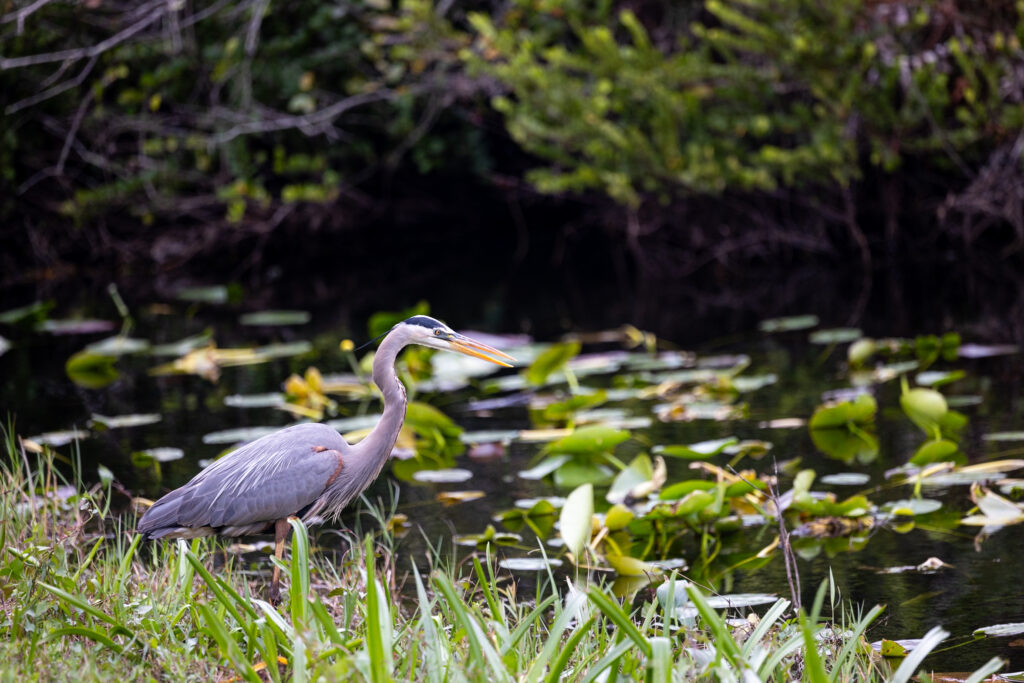
We were looking for a shorter hike, so we went on the Bobcat Boardwalk and the Otter Cave Hammock Trail, two quick hikes where we were still able to see tons of wildlife.
3. Climb the Observation Tower
The highlight of Shark Valley Tram Road is the Shark Valley Observation Tower, located at the loop’s halfway point. This 65-foot-high platform offers a rare elevated view of the Everglades’ vast, flat landscape, making it one of the best places to fully appreciate the “River of Grass.” From the top, you can see miles of sawgrass marshes, alligator-filled waterways, and wading birds in the distance.
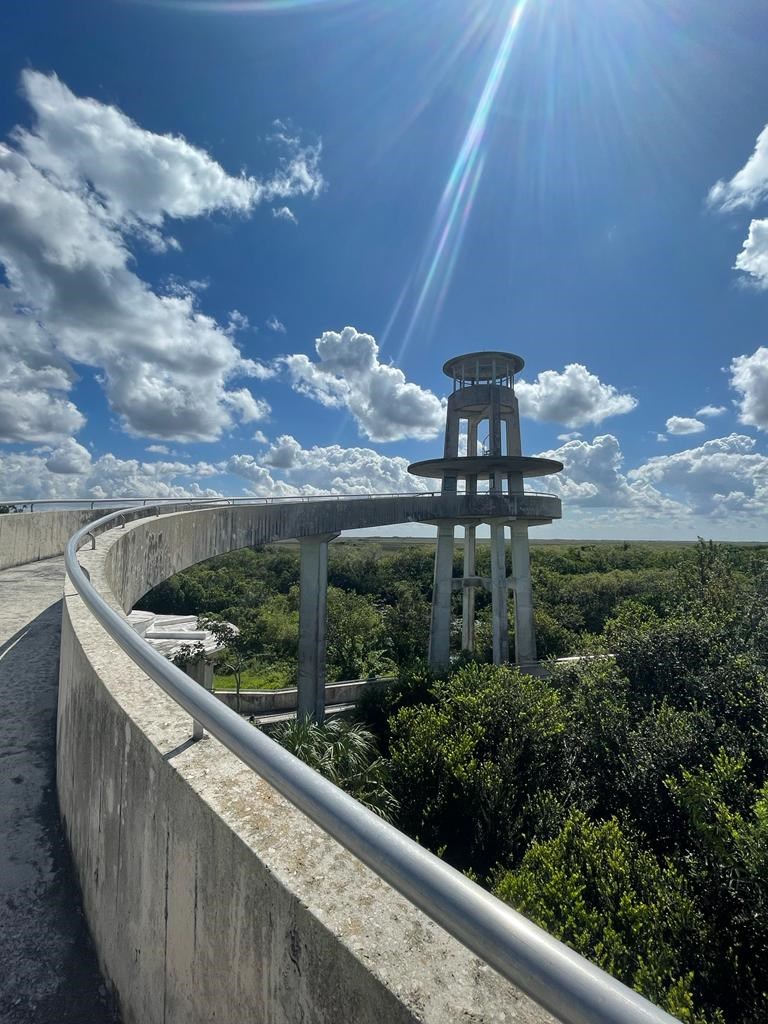
💡The observation tower is open from 9 am – 5 pm, so be sure to get here on time if you want to climb up!
4. Go on a Ranger-Led Wet Walk
We wanted to highlight this particular ranger-led tour as it was one of our favorite experiences in the park—and 100% free! Equipped with walking poles, we were guided through the marshlands, cypress domes, and knee-deep waters of the Everglades, giving us a firsthand look at its delicate ecosystem. The experience is messy but unforgettable, with plenty of opportunities to spot the limestone base, apple snail shells, and bladderwort (a carnivorous plant that traps aquadic insets and eats them for food) up close. For even more ranger-led programs in Shark Valley, check out Shark Valley’s Ranger Programming Page.
💡 Reservation Tip: Make sure to call 7 days before the date of the wet walk, when spots are released, to reserve your spot. This wet walk does tend to full up. Dates and phone number can be found here.
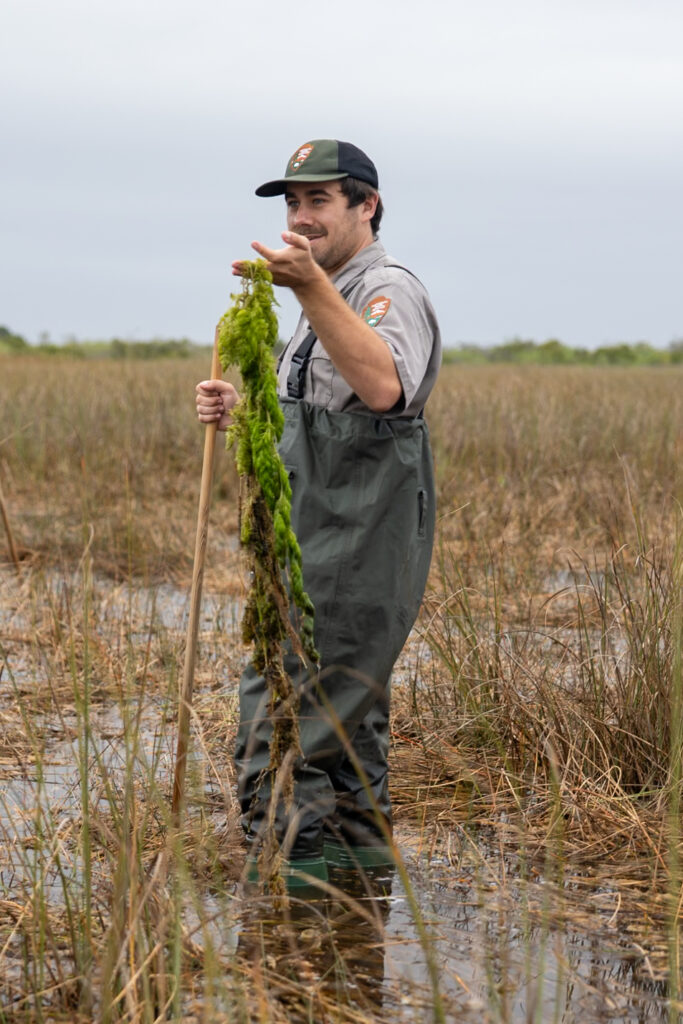
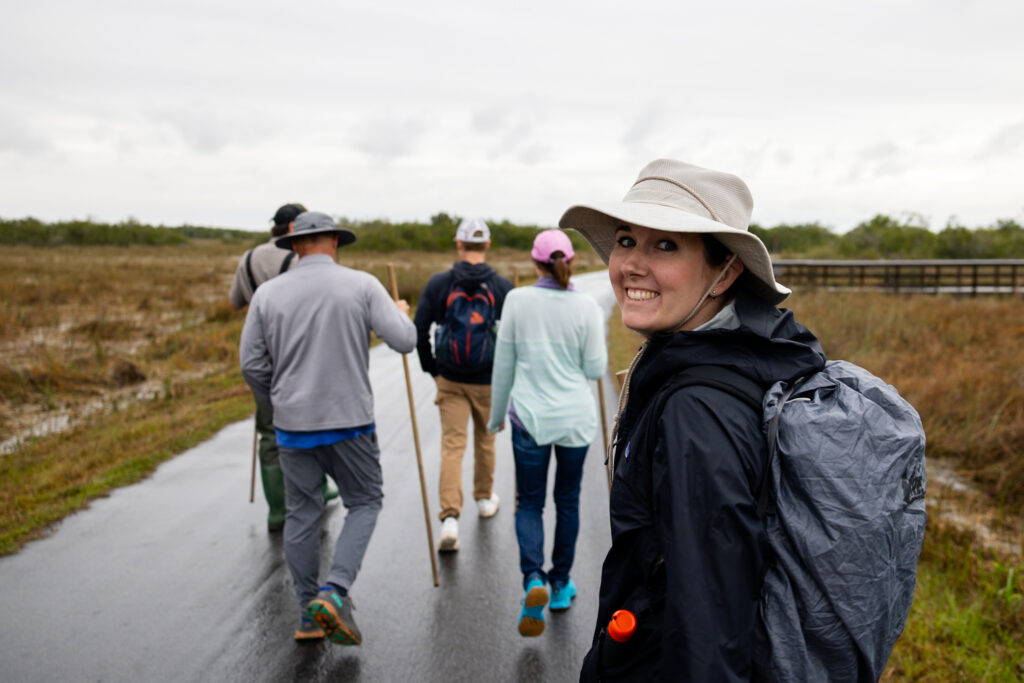
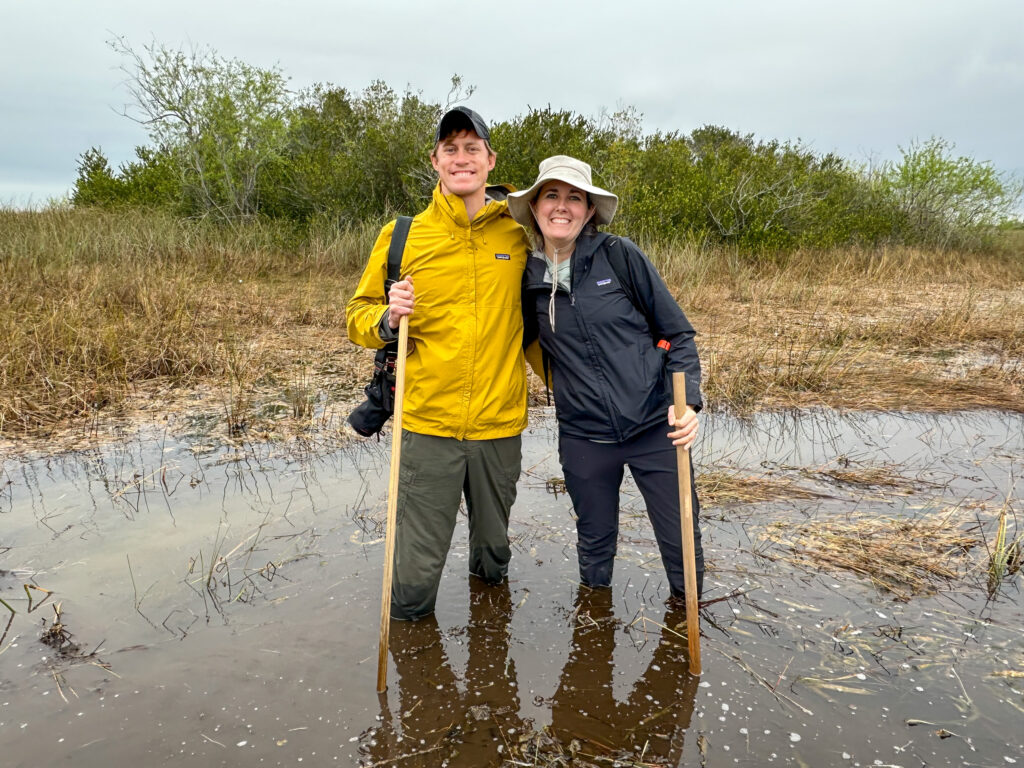
6. Visit the Nearby Big Cypress National Preserve
Just 20 minutes west of Shark Valley, Big Cypress National Preserve offers an incredible up-close look at the cypress dome! We started at the Oasis Visitor Center, where the boardwalk gave us some of our best alligator sightings.
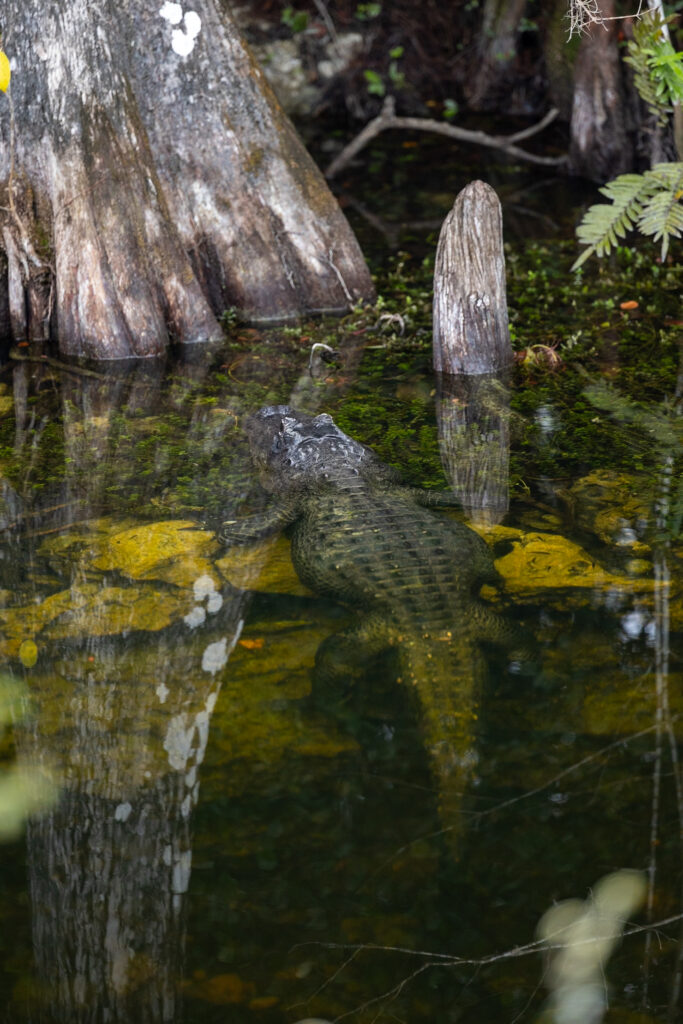
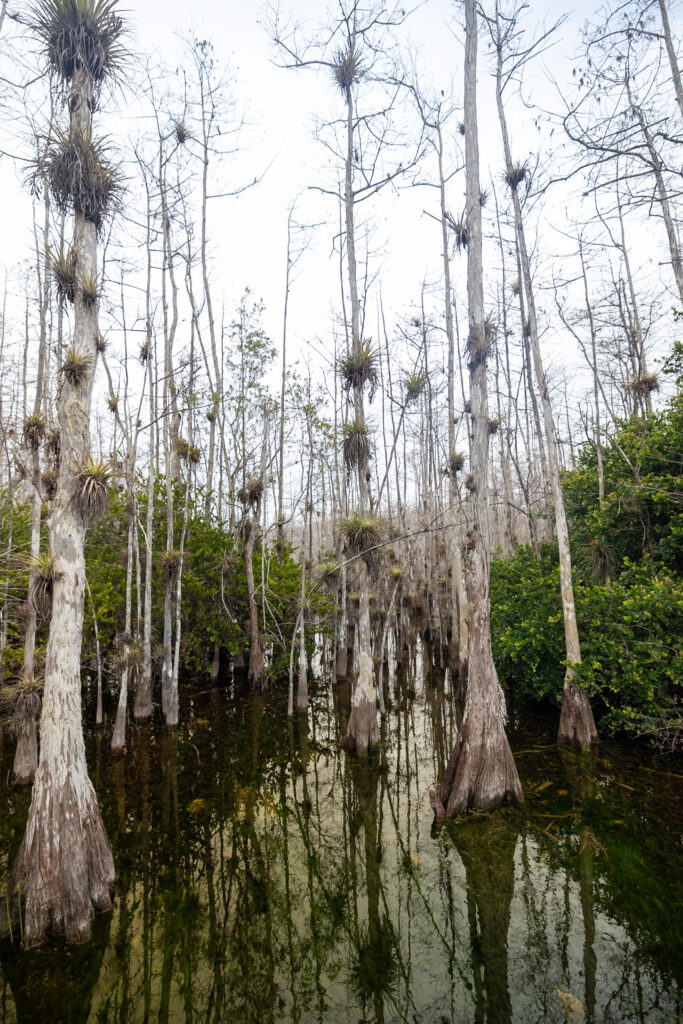
But the real highlight was driving the scenic Loop Road, a slower, quieter alternative to Route 41 that let us take our time spotting alligators, wading birds, and towering cypress trees. It took us over 2 hours to drive the loop since we kept stopping to photograph the amazing wildlife! If you’re up for a short hike, Kirby Storter Boardwalk and Gator Hook Trail offer even more chances to experience the beauty of this unique ecosystem.
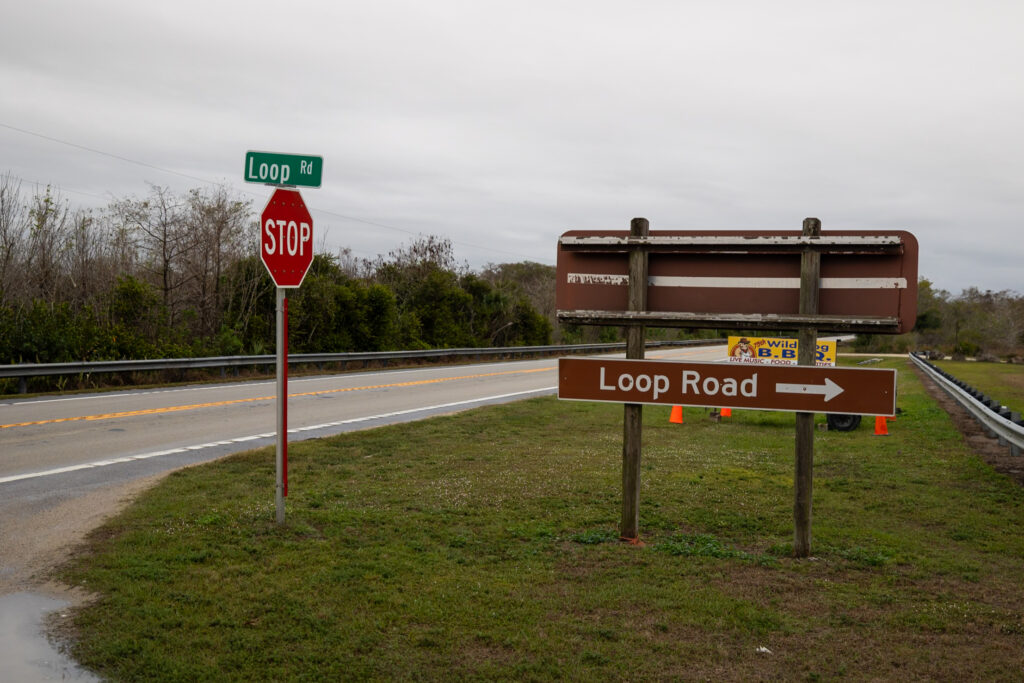
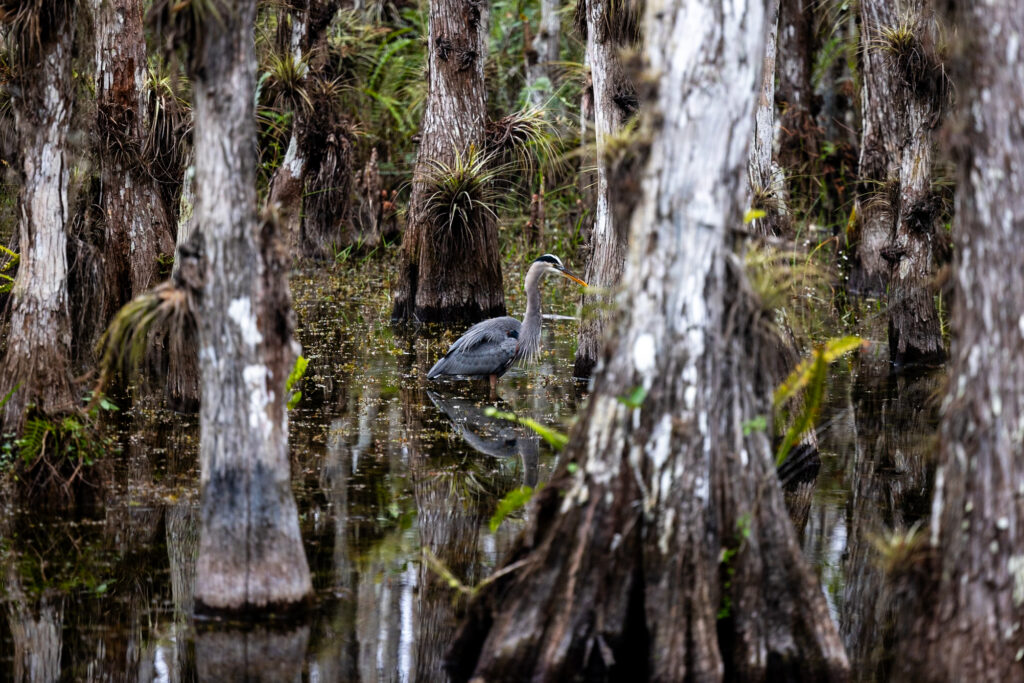
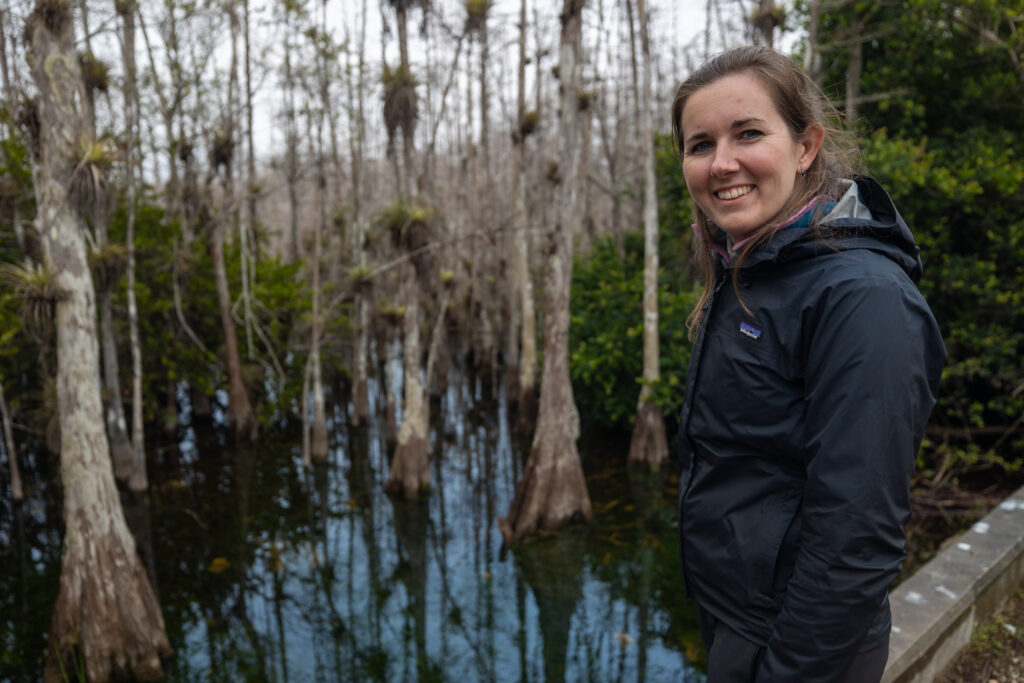
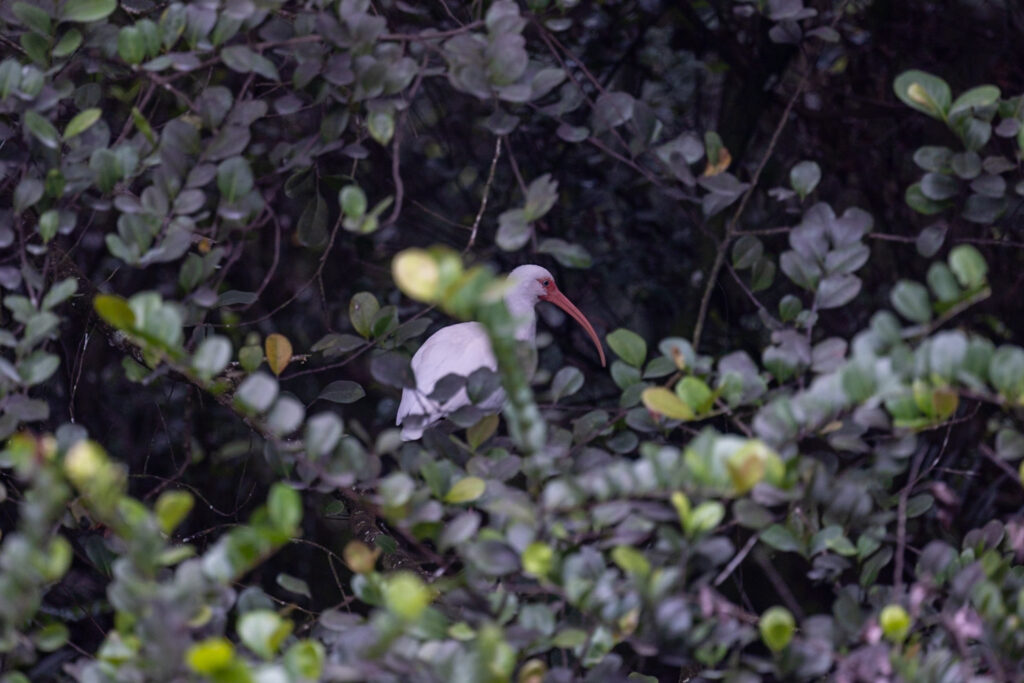
🌊 Gulf Coast Area + Western Everglades
⚠️ The Gulf Coast Area is currently under construction until Fall 2025, as the new Marjory Stoneman Douglas Visitor Center is being built. Thus, we didn’t visit this area of the park.
Located in Everglades City, the Gulf Coast area of the Everglades covers the western portion of the park. It’s the least visited portion of the Everglades, primarily used as a pushing-off point for paddling trips. On top of that, the new Visitor’s Center was being rebuilt when we visited, so we chose not to visit this section of the park. Nevertheless, we did go on an amazing kayak trip nearby and found some other things to do if you find yourself in the area!
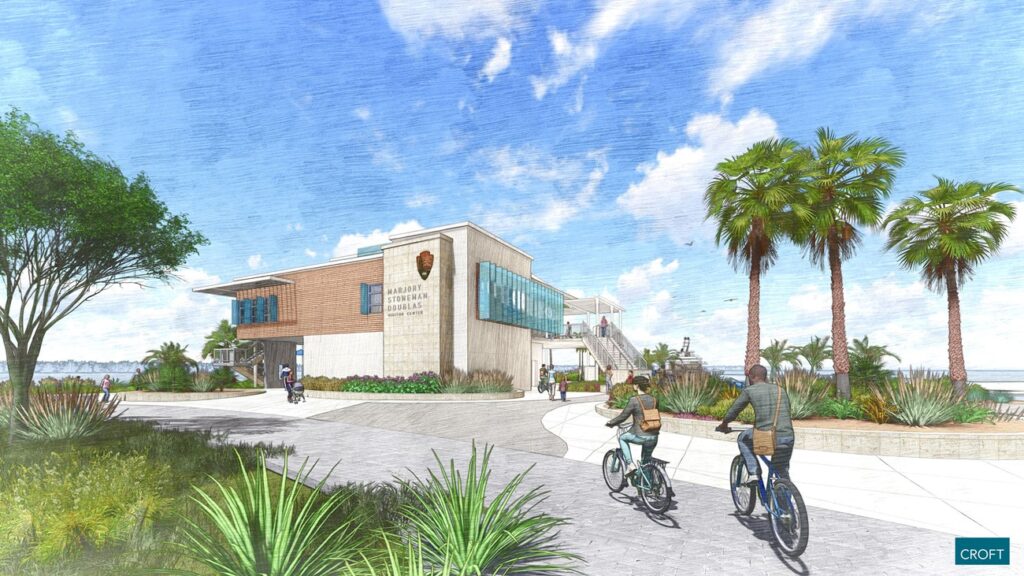
1. Visit Ten Thousand Islands + Neighboring Parks
We came across this 3-hour boat tour offered by Everglades National Park Adventures that pushes off from Everglades City. It’s a great way to explore Ten Thousand Islands if you don’t have your own boat! There are also several nearby state parks, including Fakahatchee Strand Preserve State Park (Florida’s largest state park), Collier-Seminole State Park, and Picayune Strand State Forest. Although these parks are not located inside Everglades National Park, they are still part of the greater ecosystem that makes up the Everglades. They’re a cheaper alternative to the National Park as admission is just $6/car.
2. Visit the Museum of the Everglades
In the heart of Everglades City is the free Museum of the Everglades that tells you the history and culture of the park and surrounding area. The museum itself is located in what used to be a laundry facility! Open from 9 am – 4 pm Tuesday through Saturday.
3. Sign up for a Ranger-Led Program
There isn’t too much on Gulf Coast’s Visitor Center’s page now, due to the renovations, but we’ll link it here just in case.
🗣️ Our 3 Favorite Everglades Tours
From airboat tours to ranger walks, there are a lot of tour options in the Everglades. We were able to try a handful of guided experiences during our long weekend, so here are the top 3 from the ones we tried:
1. Ranger-Led Wet Walk (Shark Valley)
Shark Valley’s Free Wet Walk is a tie for our favorite tour in the Everglades! Wading through the “River of Grass” with knowledgeable rangers made for an unforgettable, hands-on learning adventure where we got to see plants and snails up close. Reserve your spot a week in advance by calling the Shark Valley Visitor Center.
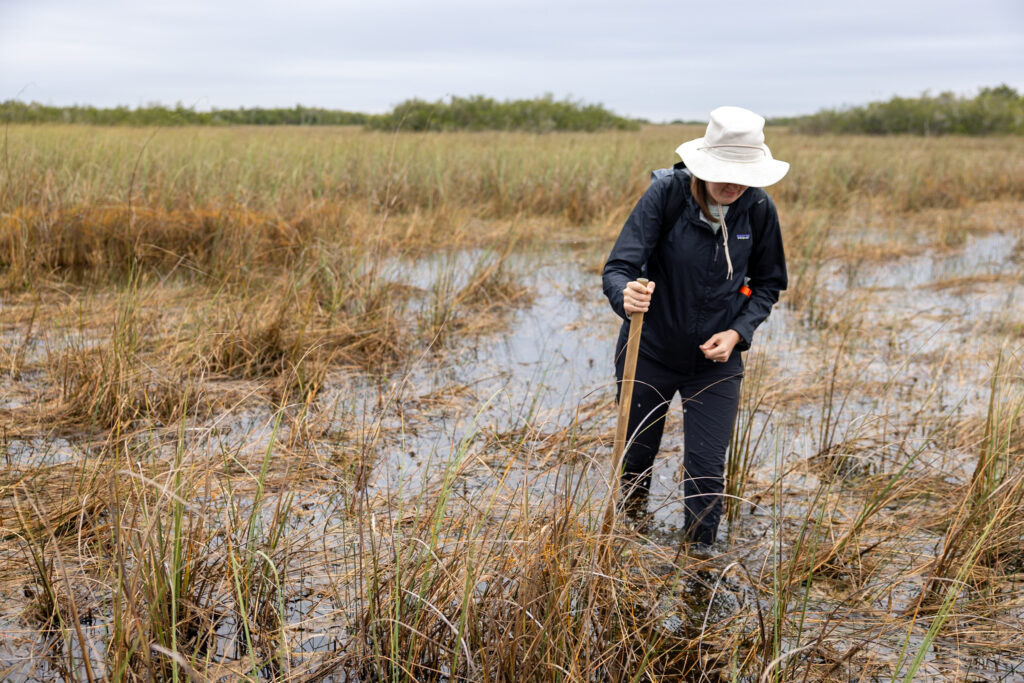
2. Jenny’s Eco Everglades Kayaking Tour
This woman-owned, small business was a real highlight of our time in the Western Everglades and the tie for our favorite tour. Jenny was professional, well-informed, and an excellent tour guide, guiding us through the mangroves with her. She provided us with a comprehensive look at the challenges that face the Everglades and what’s being done to help restore this delicate environment. We highly recommend her tour as she focuses on small groups only, which allows for a more intimate experience.
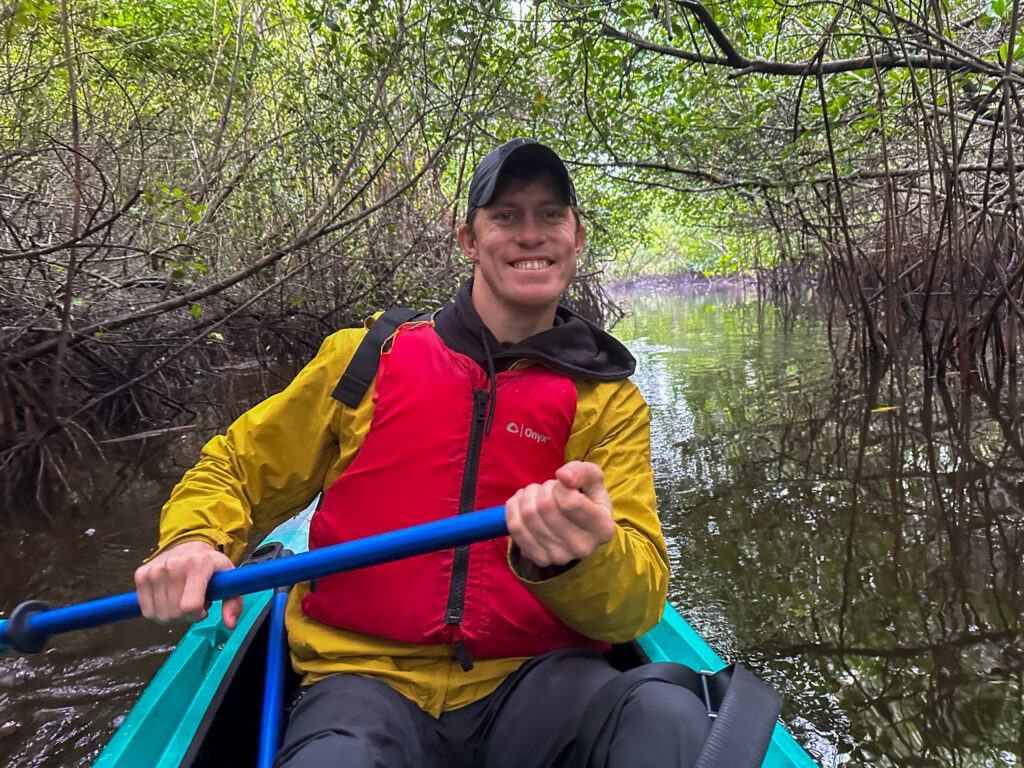
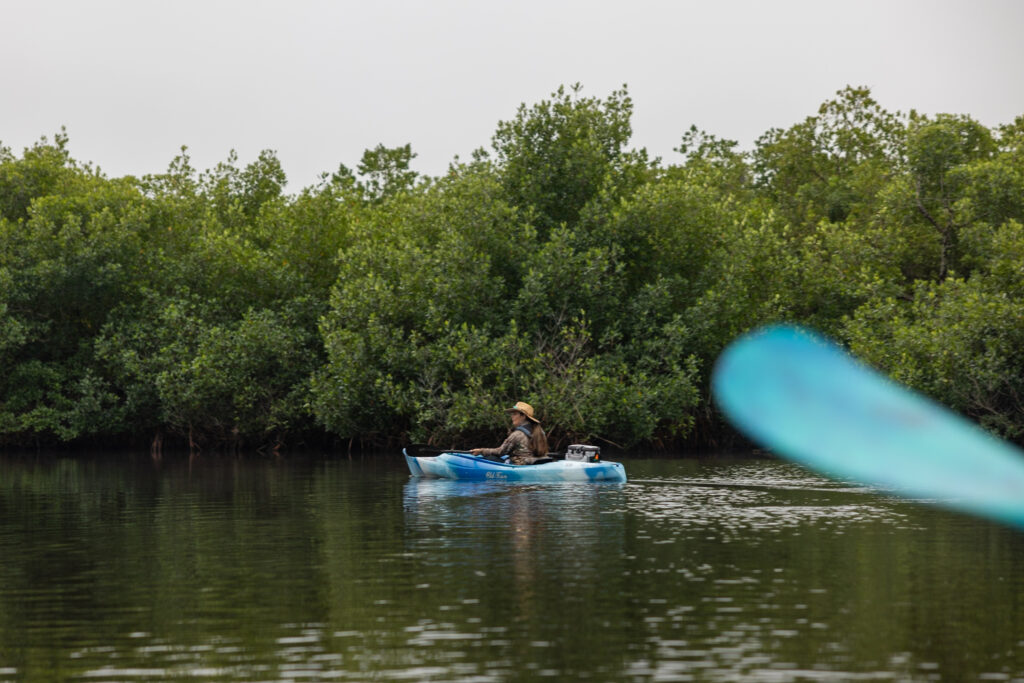
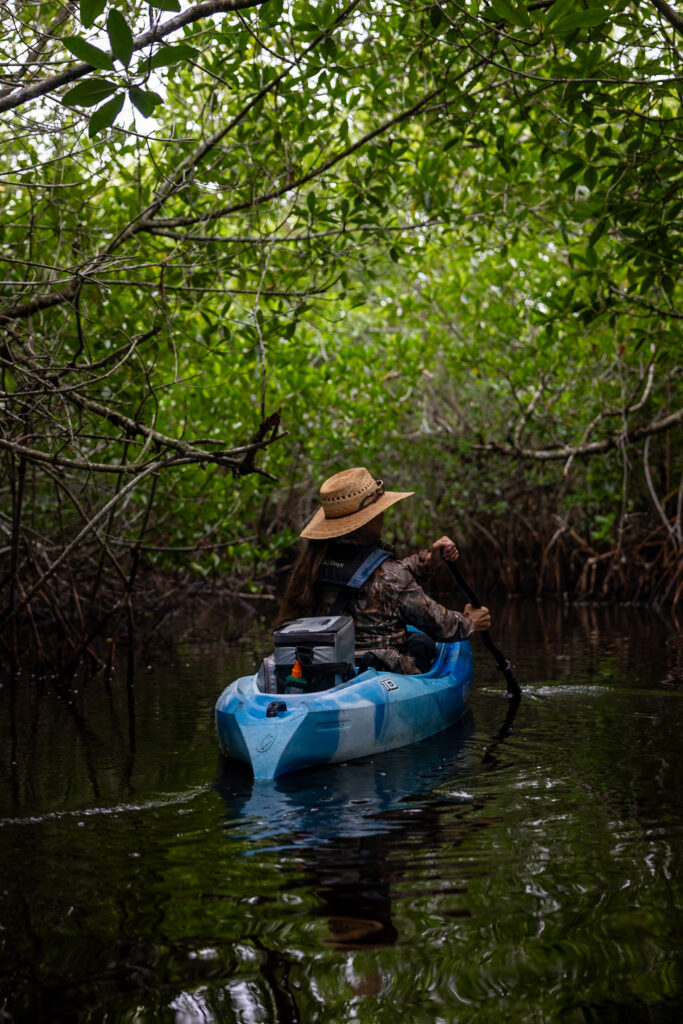
3. Ranger-Led Night Walk at West Lake Trail (near Flamingo)
What landed this night tour in our top 3 was our amazing hiking guide, Ranger Kenzie! Going on a guided night tour made us feel much less intimidated by the idea of hiking at night, and we could make out planets and constellations we wouldn’t have noticed without a ranger.
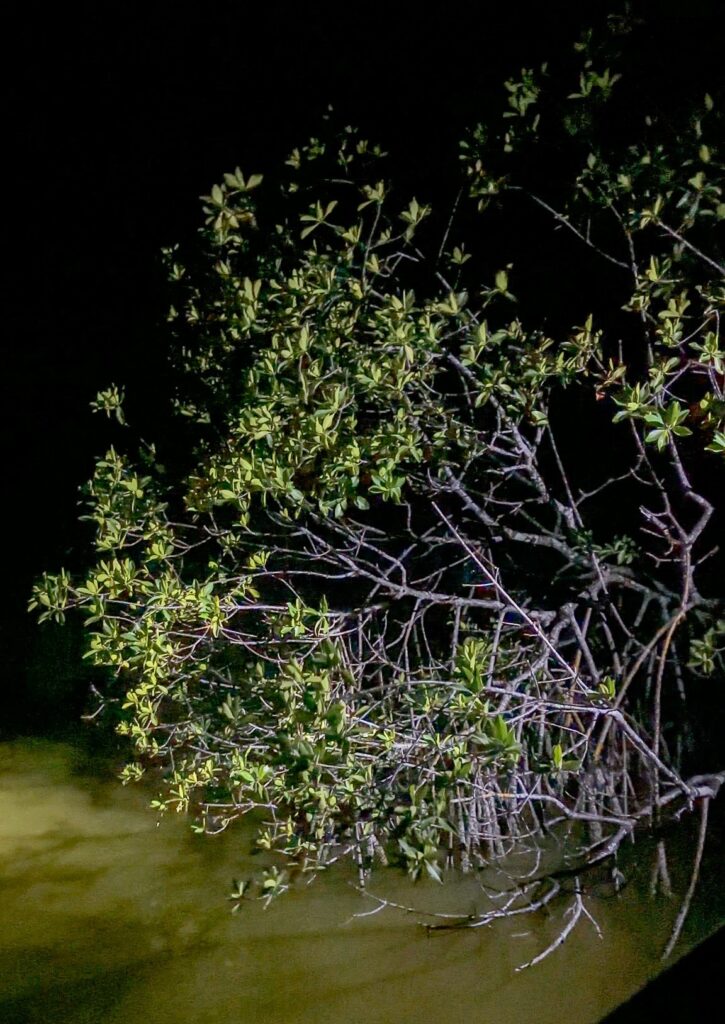
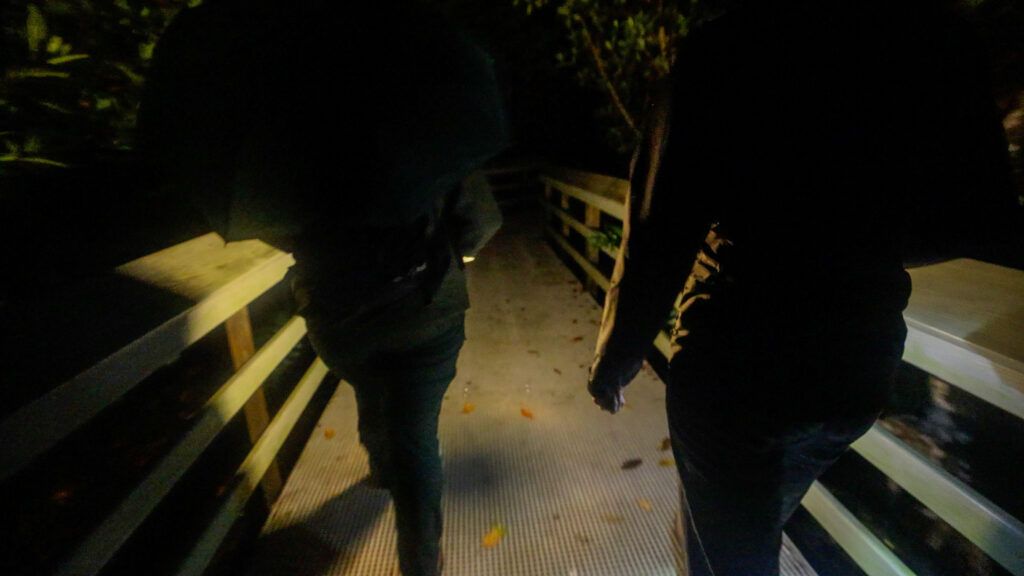
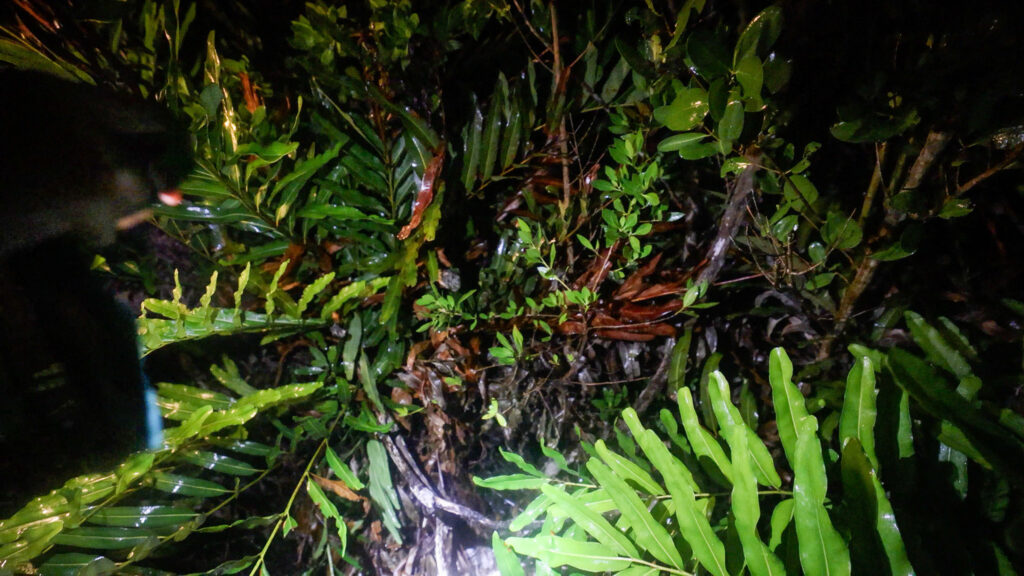
⏳ How Many Days in Everglades National Park?
How many days you should spend in the Everglades depends on what you’re interested in seeing, and the pace at which you prefer to visit. Here’s a breakdown of what you can fit in during a trip of 1 day, 2 days, etc.
- 1 day – Visit one or two sections, take a ranger-led tour, and explore a few short trails. This is a great option for someone who wants to see the highlights!
- 2 days – See Royal Palm, Flamingo, and Shark Valley without feeling rushed. You can see quite a bit during this time, specifically all of the shorter, boardwalk trails, and getting out on the water in the Western Everglades or Flamingo.
- 3+ days – Enjoy a deeper dive into each section, fit in multiple tours, and explore at a relaxed pace. This is what we would recommend for anyone short on time, but still wants an in-depth experience.
- 1 week+ – Perfect for those wanting to explore all four areas, take several-day hikes or paddling trips, and visit nearby state parks. The best option for the visitor who’s looking for an in-depth experience and wants to experience it all at a slower pace.
🗓️ Checkout our article, How to See Everglades National Park in One Day: The Perfect Itinerary,
for inspiration on how to spend a day (or two) in the Everglades!
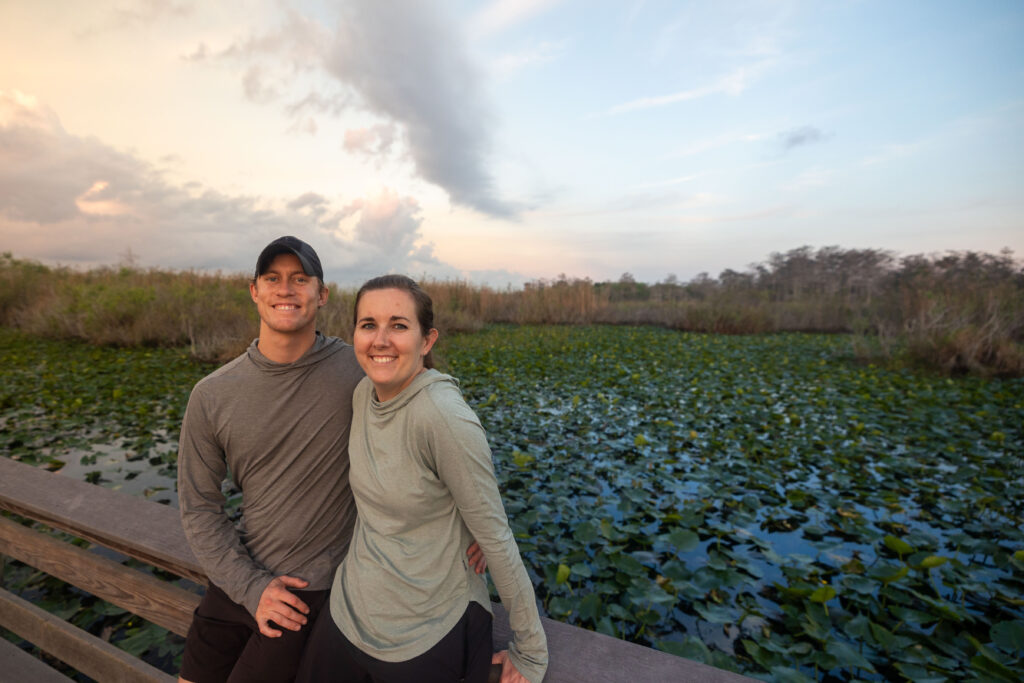
💰 How Much Does a Trip to The Everglades Cost?
Your Everglades budget largely depends on how you explore and where you spend the night. Some of the best ways we generally keep costs low is by:
- Preferencing free ranger-led activities over paid activities
- Camping instead of staying at hotels
- Buying groceries and gas outside of the park
- Preparing our food when possible
Everglades National Park Entrance Fees
That being said, one unavoidable cost is the entrance fee to the park. We invested $80 in the America the Beautiful Pass for the year, so we didn’t pay any extra for park entrance. Here are the other entrance fee options:
- $30 per car (valid for 7 days)
- $25 per motorcycle
- $15 per walker or bicyclist
How Much We Spent in the Everglades
We wanted to go on a private kayaking tour, which is what the majority of our budget went towards. Here’s a full cost breakdown from our 4-day trip.
| Business | Description | Cost |
| Recreation.gov | Flamingo Campground (2 nights) | $80.45 |
| Recreation.gov | Big Cypress Campground at Monument Lake (1 night) | $28.00 |
| Rob is Here Fruit Stand | 1 Guanabana smoothie | $11.99 |
| Jenny’s Eco Tours | Kayaking Tour (for 2) | $294.68 |
| Total: $415.12 |
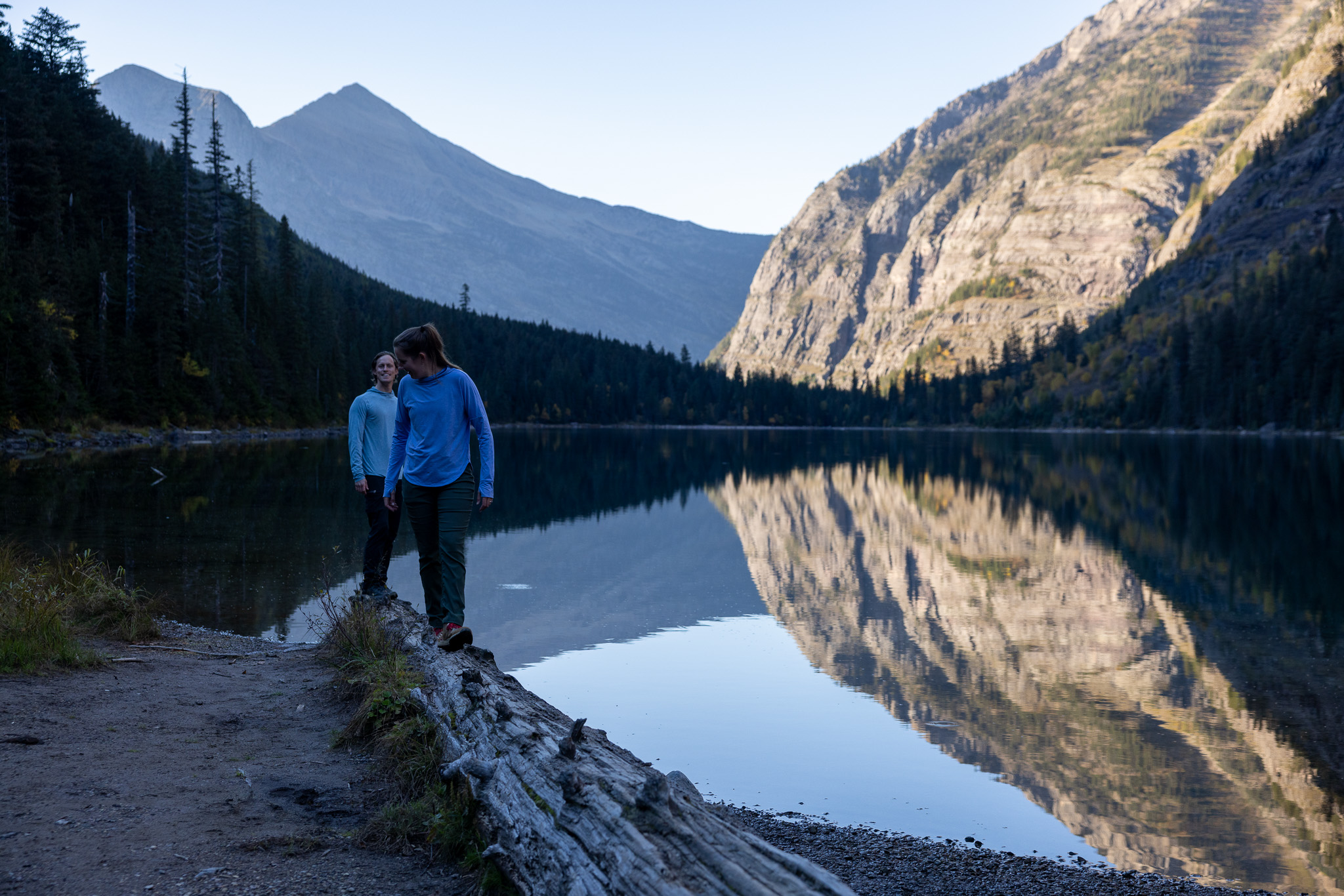
Discover your next adventure, search for National Park guides here at schoandjo.com/national-parks
🗓️ When to Visit Everglades National Park
There are two seasons in the Everglades—the wet season and the dry season. This affects the temperature, the amount of bugs, and how much wildlife you’re most likely to see. We visited in January during the dry season, and while the temperatures were comfortable, we did experience some rain, which made non-boardwalk trails a bit muddy. But despite that, it was still a fantastic time to explore the park! Here’s what you can expect from each season.
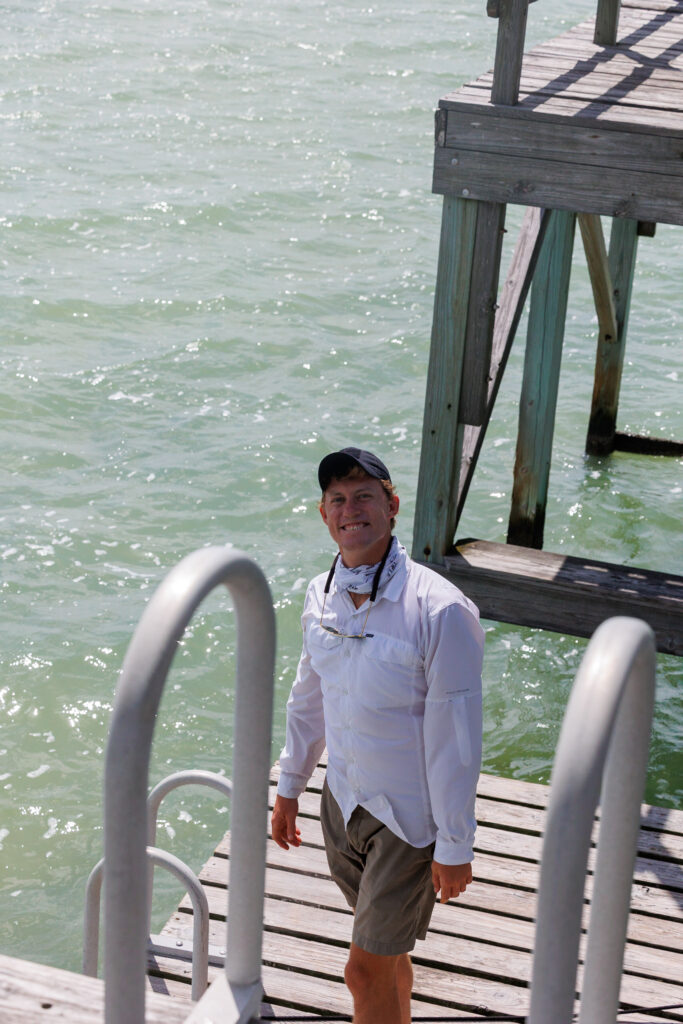
Dry Season (December – March)
This is the best time to visit if you want to avoid mosquitoes and enjoy lower temperatures. The dry season offers:
- Lower temperatures (average highs in the 70s–80s°F)
- Fewer bugs
- Better wildlife spotting opportunities (as animals gather near water sources)
- Less rain and fewer afternoon storms.
However, this period is also the most popular, meaning more visitors. If you’re planning to visit during the dry season, be sure to book your accommodations and activities in advance.
Wet Season (April – November)
The Wet Season isn’t the ideal time to visit the Everglades since the temperatures are so much hotter. In addition, many tours, ranger programs, and even Long Pine Key Campground close. As far as weather goes, you can expect:
- High humidity (up to 90%)
- Frequent afternoon thunderstorms
- An insane amount of mosquitoes
- Higher Temperatures
The heat and rain can make outdoor activities uncomfortable, but for those who don’t mind the humidity, you’ll find fewer crowds and more availability.
🏕️ Where to Stay in Everglades National Park
If you’re planning to stay overnight in the Everglades, you have a few great options—whether you prefer camping under the stars, cozying up in your RV, or staying at a comfy hotel with all the amenities. Here’s a breakdown of each!
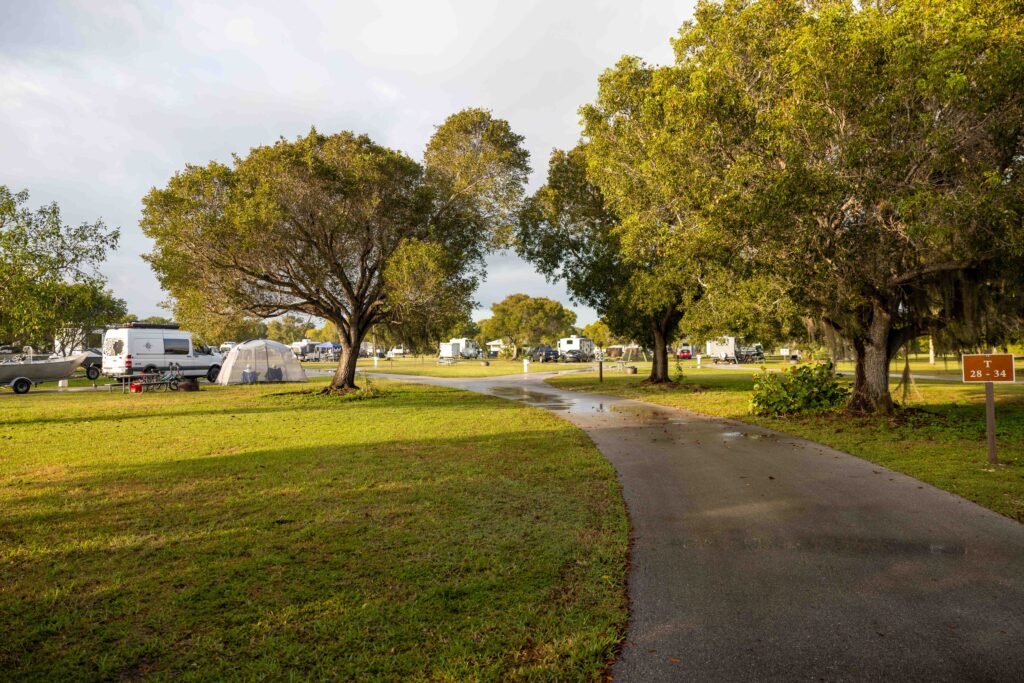
Camping in the Everglades
- Long Pine Key Campground (Open November–April) – Reserve in advance at this campground! It has about half the amount of spots that Flamingo, offers more privacy, and is close to the town of Homestead.
- Flamingo Campground (Open year-round) – Located about an hour from the main entrance, this campground offers both tent and RV sites, plus eco-tents for a bit more comfort. Reserve here if possible, although the campground itself doesn’t tend to fill up. They also have Flamingo Lodge if you prefer to stay in the Park but in accommodation similar to a hotel. The lodge is reasonably priced compared to hotels outside of the park.
- Backcountry Camping – For the adventurous, there are remote wilderness sites accessible by kayak, canoe, or hiking trails. You’ll need to apply for a backcountry camping permit to be able to reserve one of these spots. For more help planning your wilderness trip, look to NPS’s Wilderness Trip Planning Page.
- Big Cypress National Preserve — If you’re looking to save a bit of money, or be closer to Shark Valley, Big Cypress has several campgrounds at a lower cost than those inside the Everglades. We stayed at Monument Lake and loved the quiet setting and wildlife views.
⛺ For those interested in camping, check out our recent article—How to Camp in the Everglades: RV + Tent-Camping Guide
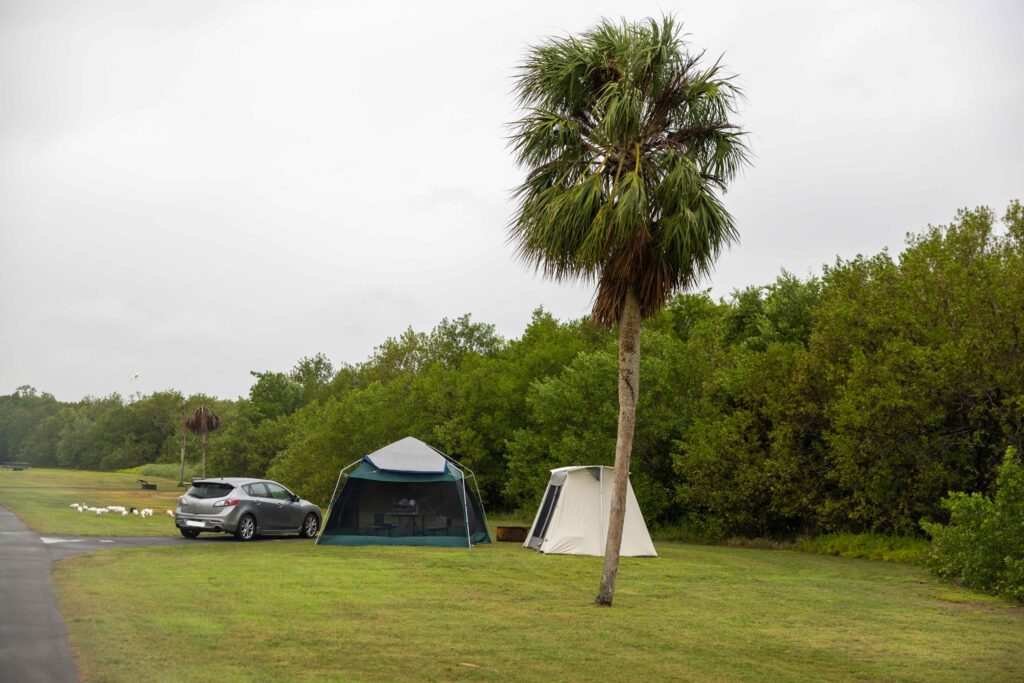
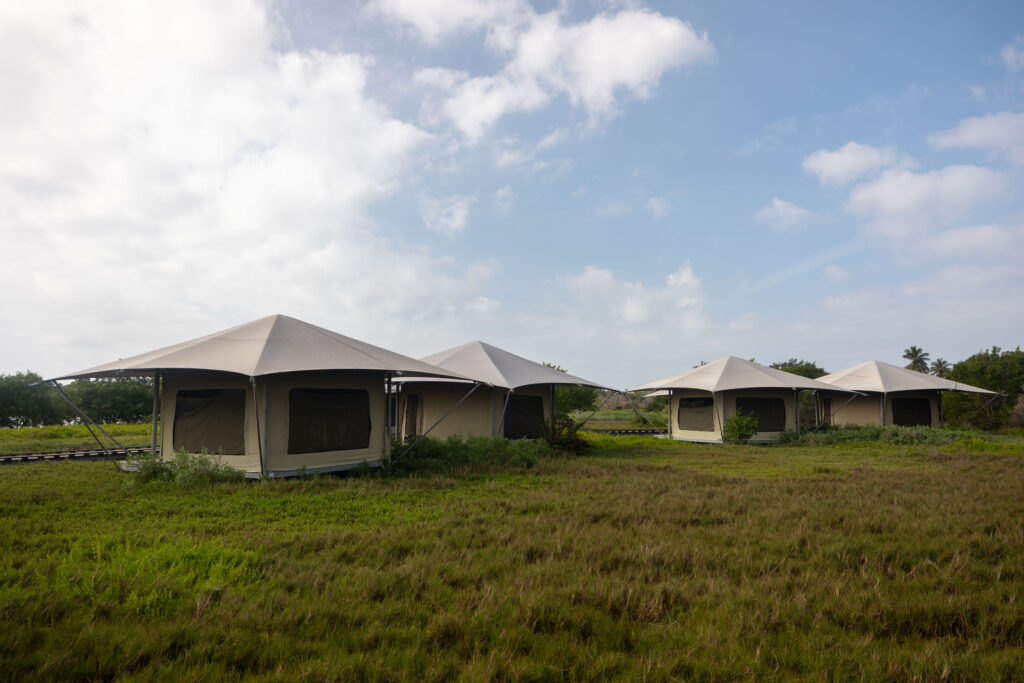
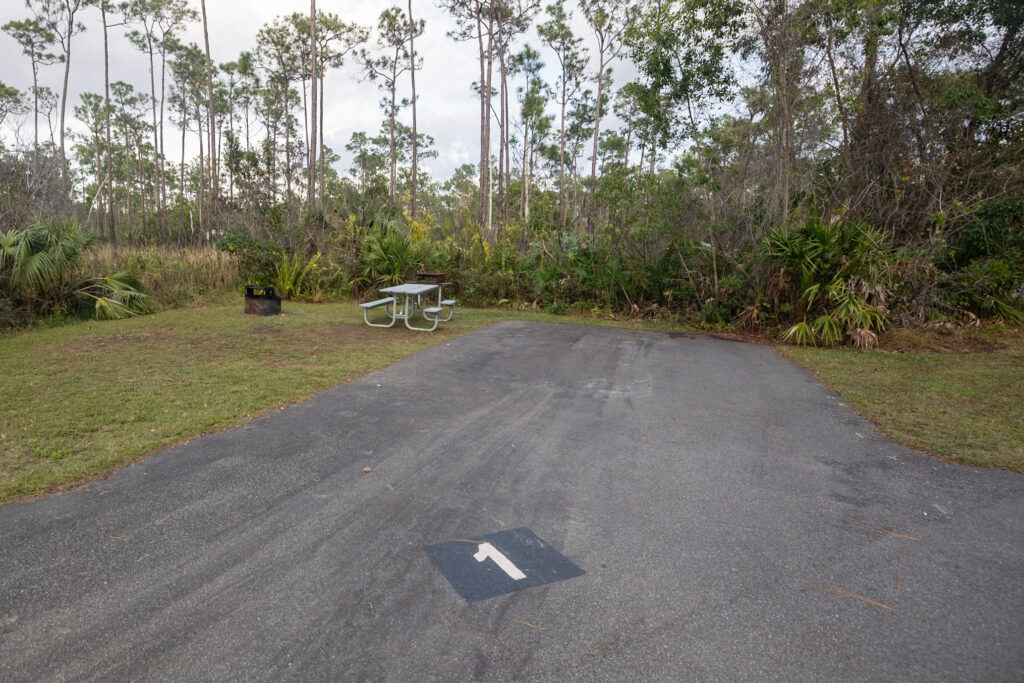
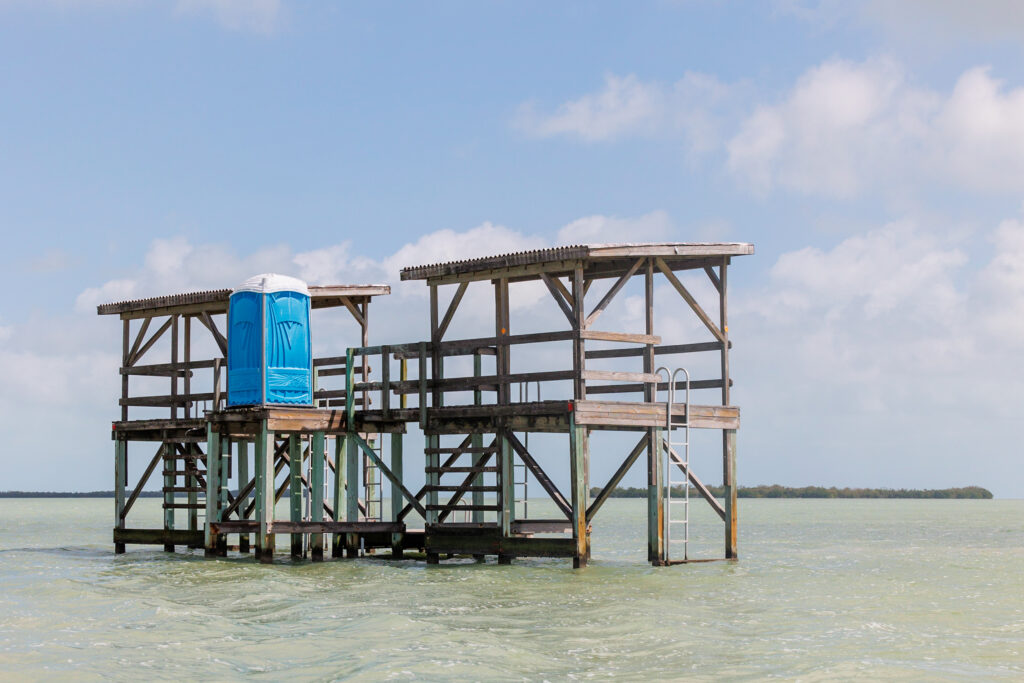
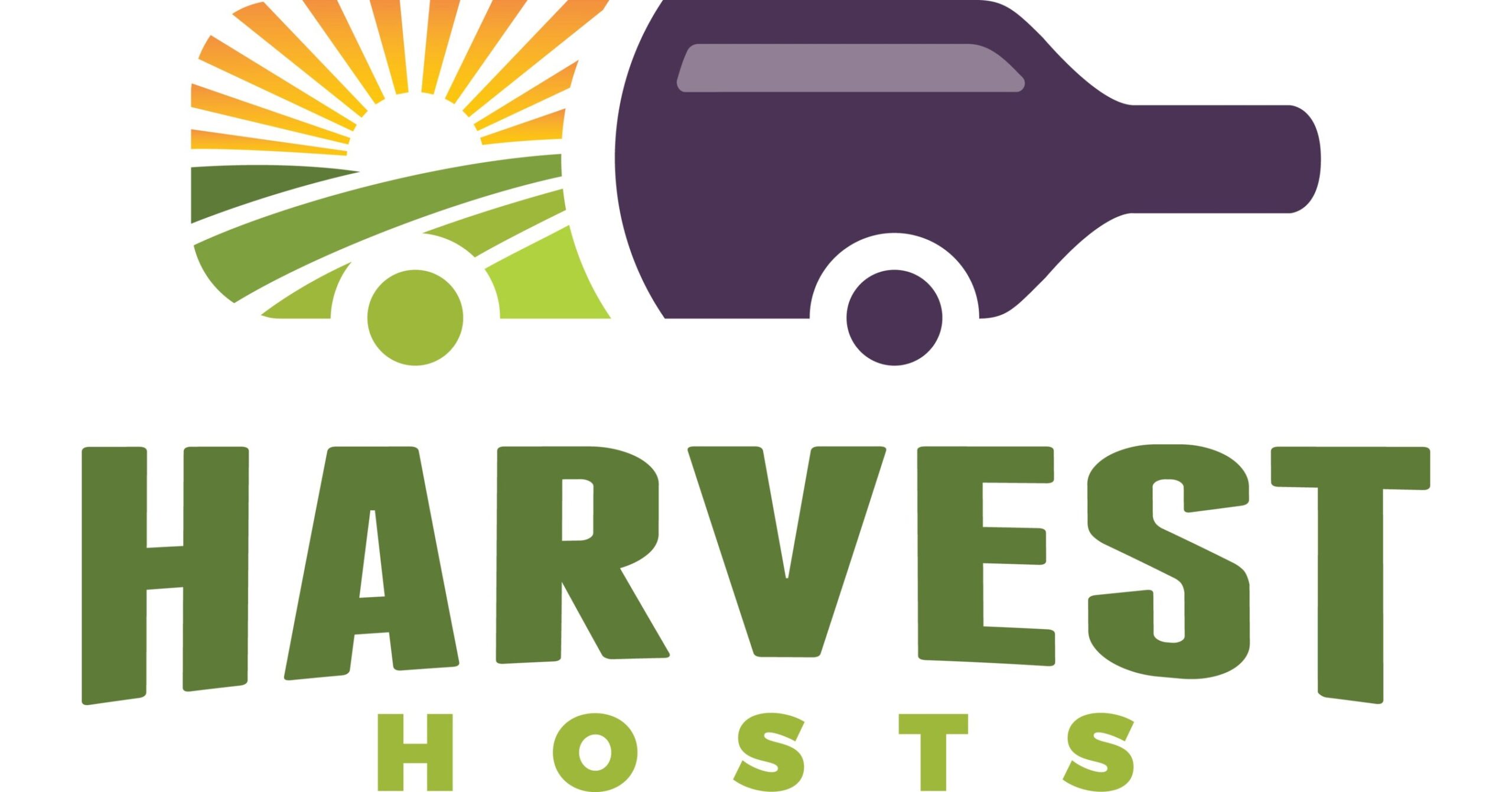
Try Harvests Hosts and receive a free month on us!
Members get unlimited overnight stays at thousands of small businesses, including farms, wineries, breweries & distilleries, and attractions, that invite RVers to park for safe and convenient stays.
Use code schoandjo20 at checkout for an extra discount!
Hotels Near the Everglades
If camping isn’t your thing, stay in Homestead (closest to the park’s main entrance) or Everglades City, which is perfect for exploring the western side of the park. There’s also the Lodge in Flamingo for a comfortable stay right within the park.
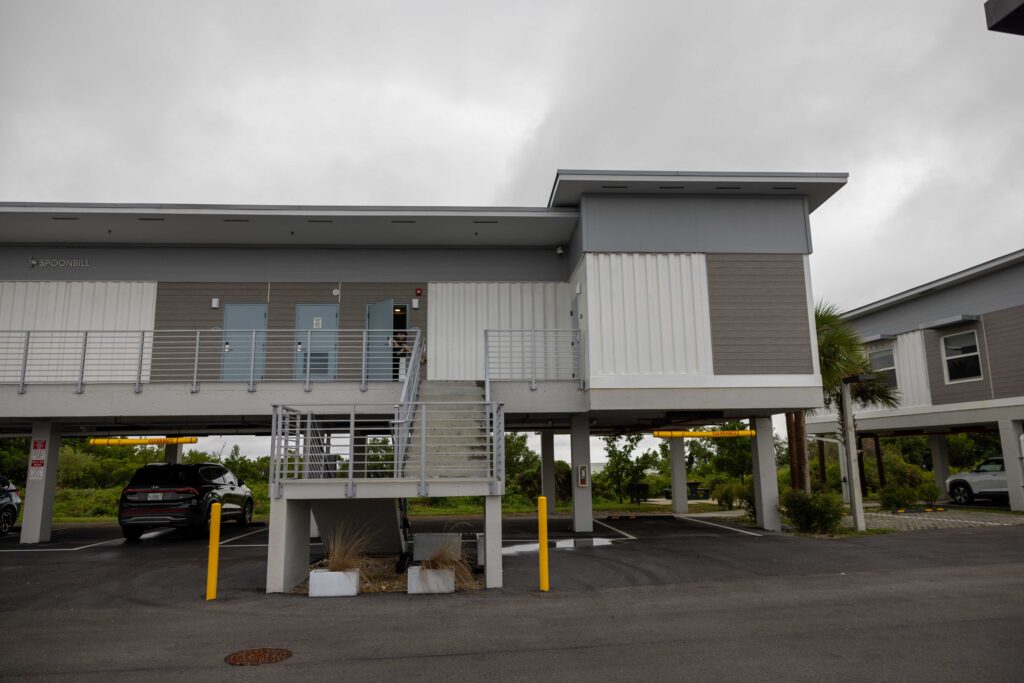
🚗 How to Reach the Everglades
The best way to explore the Everglades is by car. Driving gives you the freedom to visit different entrances, stop for wildlife sightings, and explore various areas in one day. Plus, driving through the Everglades is an adventure in itself!
- By Car – The park has multiple entrances, with the Homestead entrance (near Royal Palm and Flamingo) and Shark Valley entrance being the most popular.
- By Plane – The closest airports are Miami International Airport (MIA) (1-hour drive) and Fort Lauderdale-Hollywood International Airport (FLL) (1.5-hour drive). Car rentals are available at both.
- By Bus – While there are no direct public buses into the park, some tours from Miami and Fort Lauderdale offer day trips that include transportation.
- By Train – There are no direct train routes to the Everglades, but Amtrak serves Miami and Fort Lauderdale, where you can rent a car or join a tour.
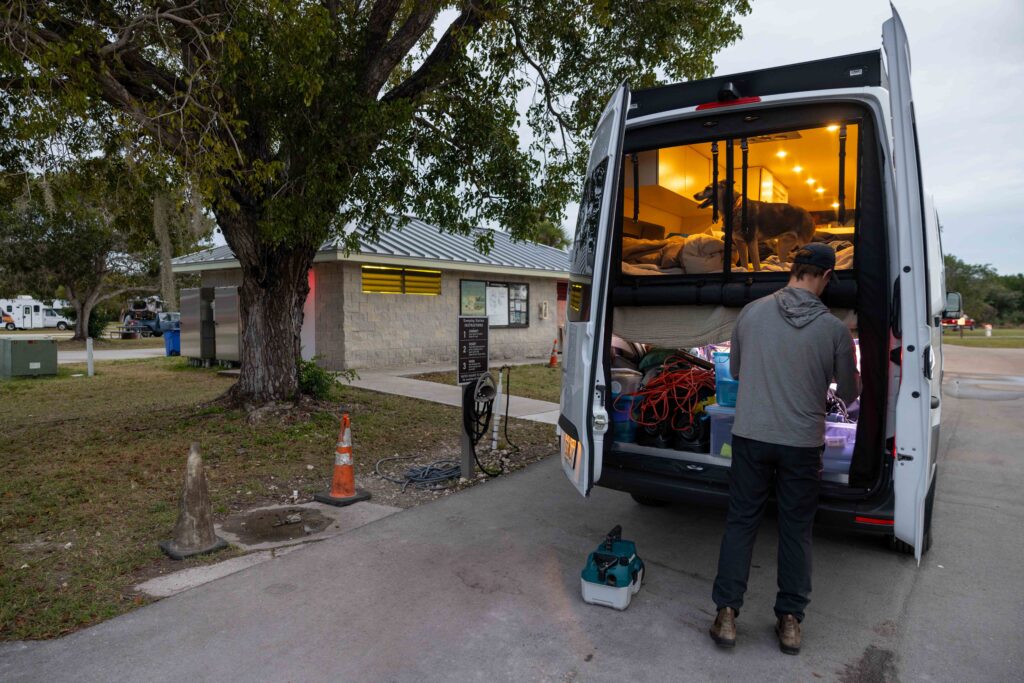
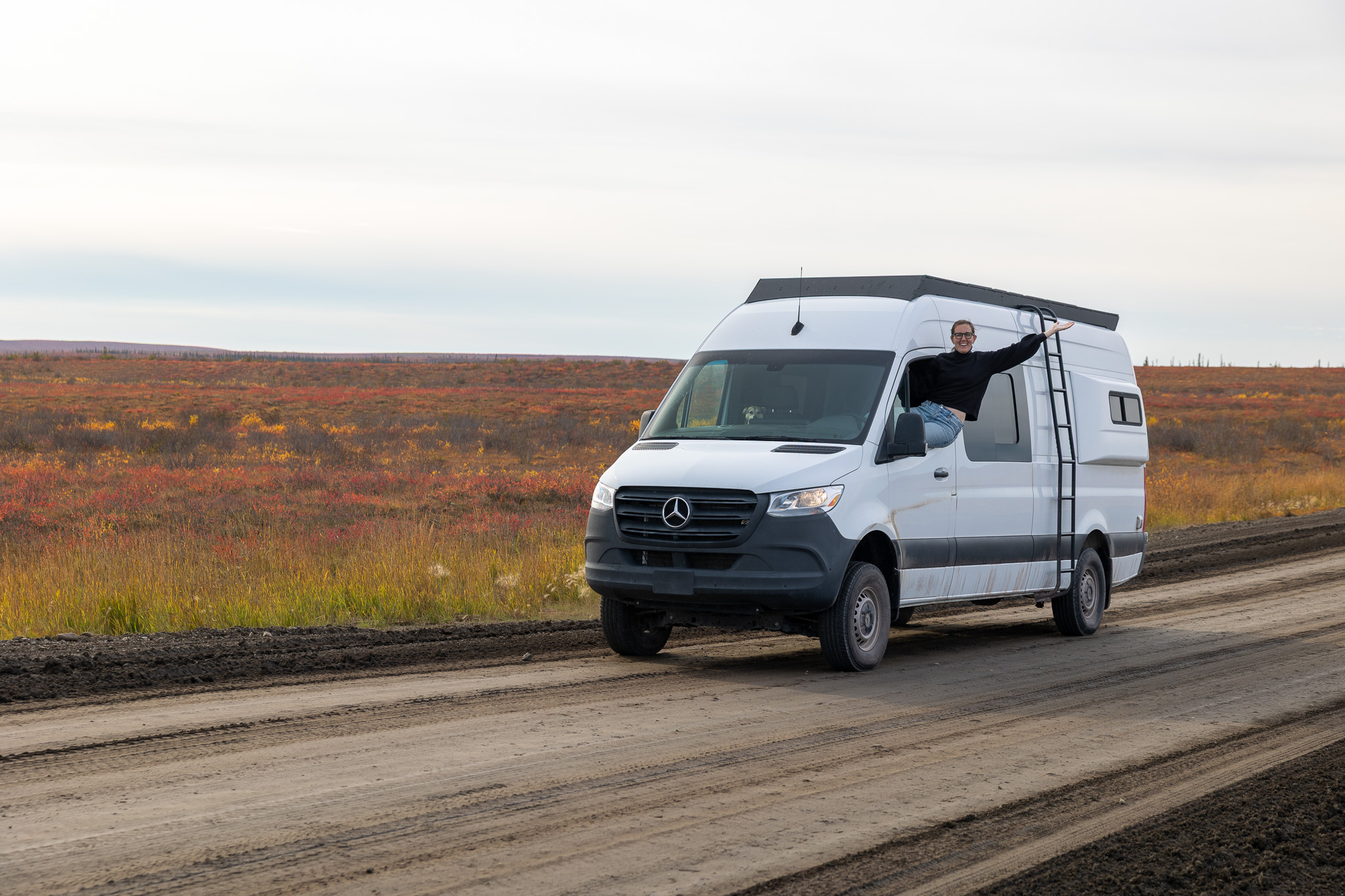
Discover your next adventure, start here at schoandjo.com/destinations
🧴Everglades Packing Essentials
- Map of the trails – We love using AllTrails+ to download maps ahead of time.
- Bug head net – You may look silly, but we think they’re worth it!
- Strong bug spray
- Water-resistant footwear – Elliot’s favorite trail runners and Jen’s favorite hiking boots.
- Lightweight long-sleeve shirt – Elliot’s favorite long-sleeve sun shirt and Jen’s favorite long-sleeve sun shirt. We both have these sunshirts and love them!
- Rainjacket – This is Elliot’s favorite rain jacket and Jen’s favorite rain jacket.
- Hiking shorts or pants – We recommend hiking pants since the mosquitos are relentless. Elliot’s favorite hiking pants and Jen’s favorite hiking pants. Don’t make the mistake of wearing yoga pants like Jen did one day. The mosquitos bite right through the yoga pants material!
- Sunscreen and Sunglasses
- Refillable water bottle – We love this water bottle featuring all of the US National Parks with stickers to check off your visit to the National Parks.
- Lightweight backpack – Elliot carries this backpack with the included rain cover, which was helpful in the rain, while Jen carries this backpack.
- Snacks or Packed Lunch – Our go-to hiking snacks include dried fruit, protein bars, or meat sticks.
- Wide-brimmed hat – As part of sun safety, we love pairing sunscreen with wide-brimmed hats.
- GPS – We carry the Garmin InReach Mini 2 with us on all trails for safety.
- First Aid Kit – It’s one of those items we hope to never have to use but always carry, just in case.
- Headlamp – A headlamp is especially useful when going on sunrise, sunset, or night hikes!
- Water-friendly clothes if you’re planning on kayaking.
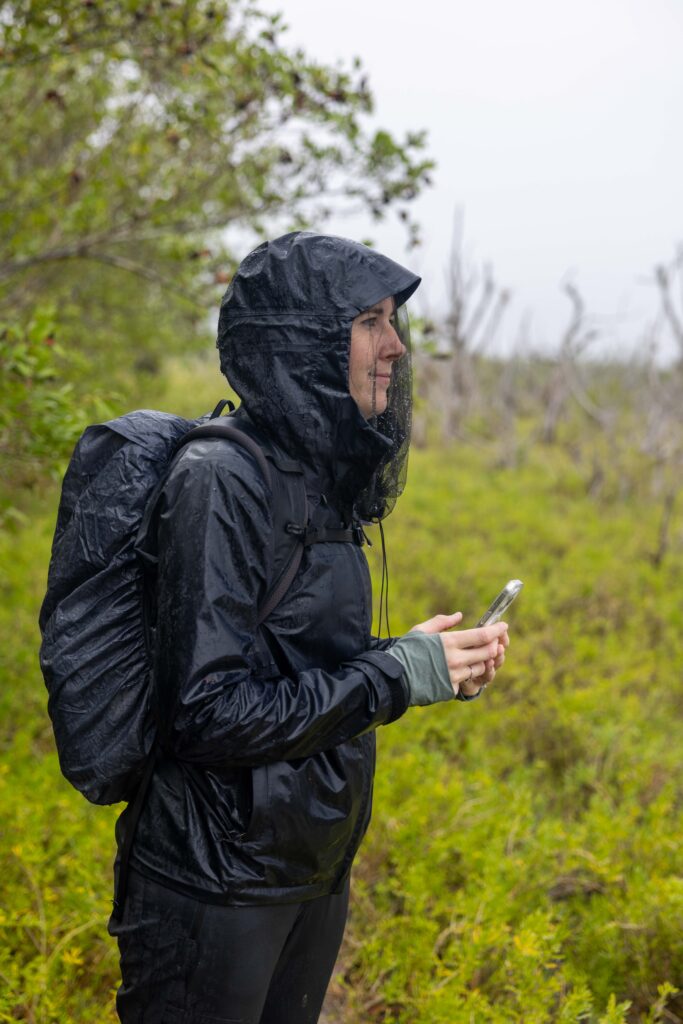
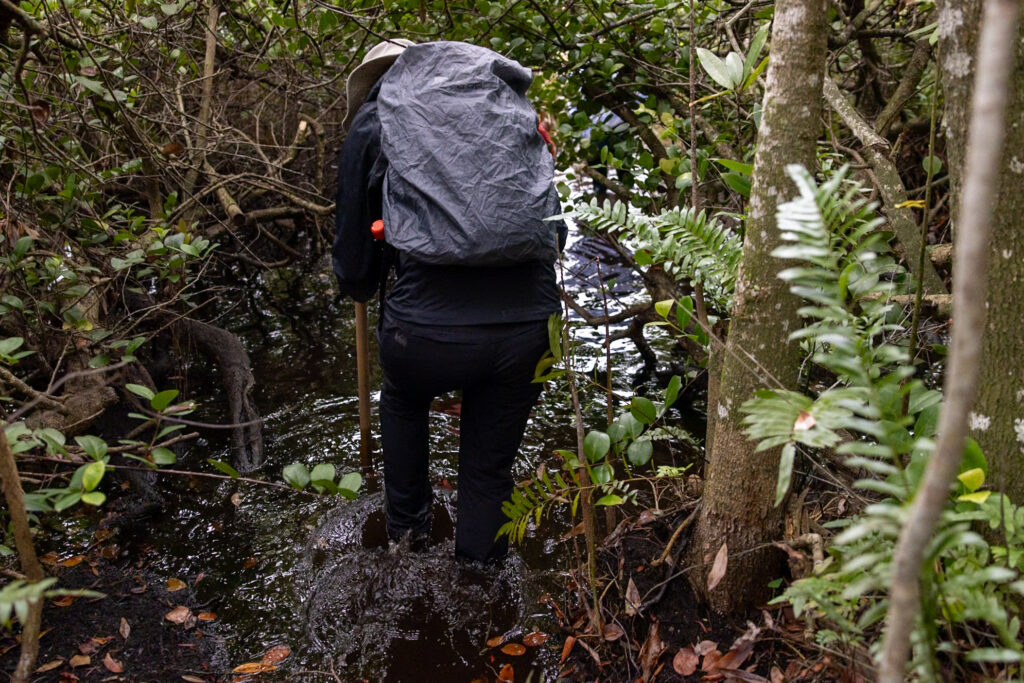
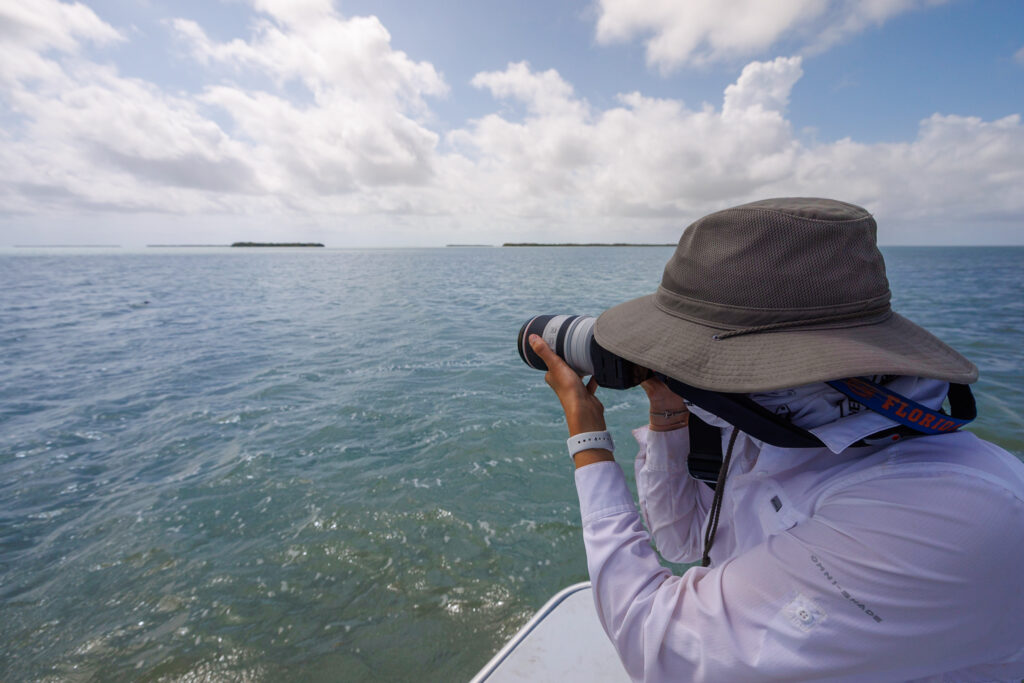
🪧 Learn More: How to Help the Everglades
The Everglades has gone through several environmental challenges since officially becoming a national park in 1947. These threats include sprawling suburban development, agricultural development, nutrient pollution, invasive species, and sea level rise. Here are a few ways you can help support the ecosystem of the Everglades as a visitor:
- Follow Leave No Trace – Stay on trails, pack out all trash, and respect wildlife.
- Support Conservation Efforts – Donate or volunteer with groups like the Everglades Foundation or National Park Foundation.
- Be a Responsible Visitor – Avoid feeding wildlife, use reef-safe sunscreen, and opt for eco-friendly tours.
- Donate to Preservation Organizations – There are several organizations that you can support as they continue to fight for these fragile ecosystems and keep them for generations to come. They include Captains for Clean Waters, Friends of the Everglades, and Everglades Coalition.
If you’re interested in reading more about conservation and restoration efforts in the Everglades, here are two websites where you can learn more:
- Everglades’ Comprehensive Everglades Restoration Plan (CERP)
- Everglades National Park’s Participation in the NPS Climate Friendly Parks Program
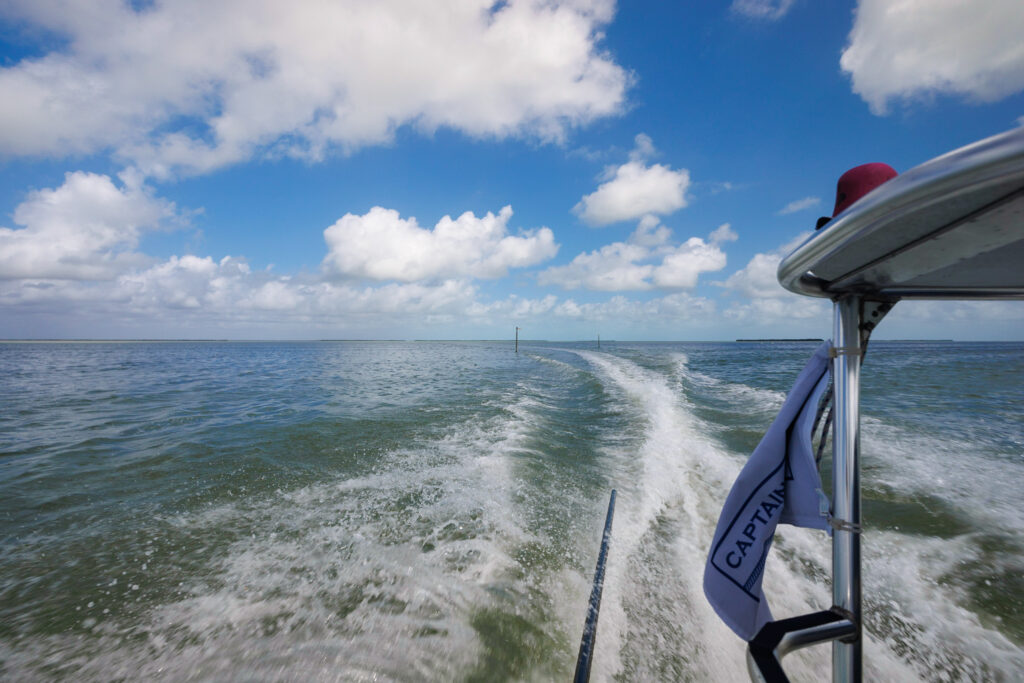
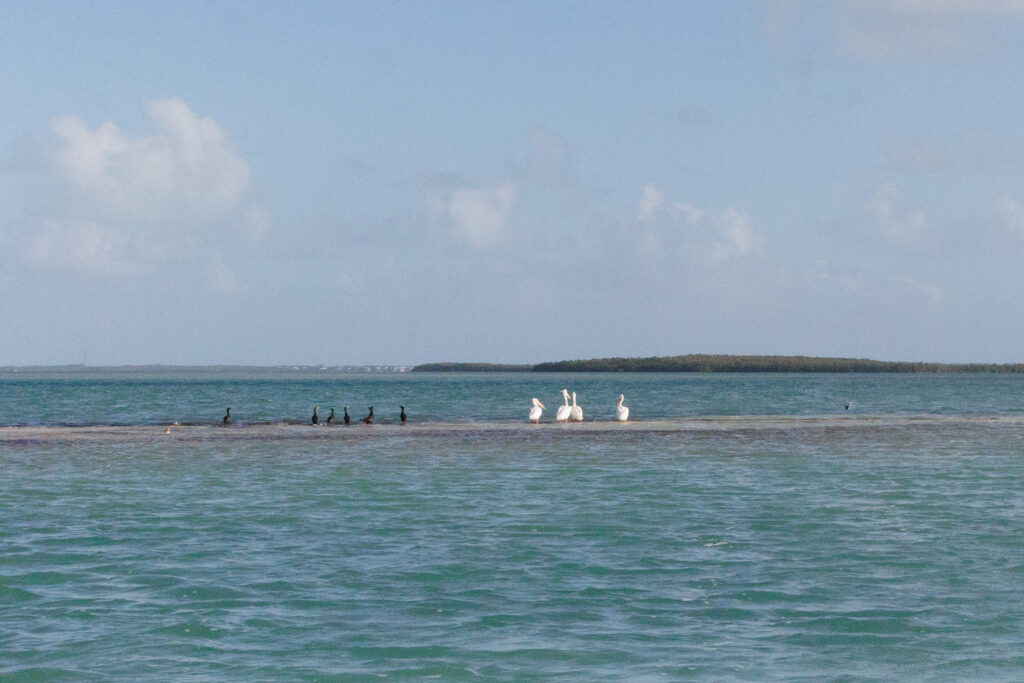

📰 Related Articles
- Our 9 Favorite Hikes in Everglades National Park
- The 5 Visitor Centers of the Everglades: Decide Which is Right For You
- How to Camp in the Everglades: RV + Tent-Camping Guide
- How to See Everglades National Park in One Day: The Perfect Itinerary
🎥 Watch on YouTube
🔎 Ready to Explore Everglades National Park?
Pin this guide with the best things to do in the Everglades to help plan your trip!
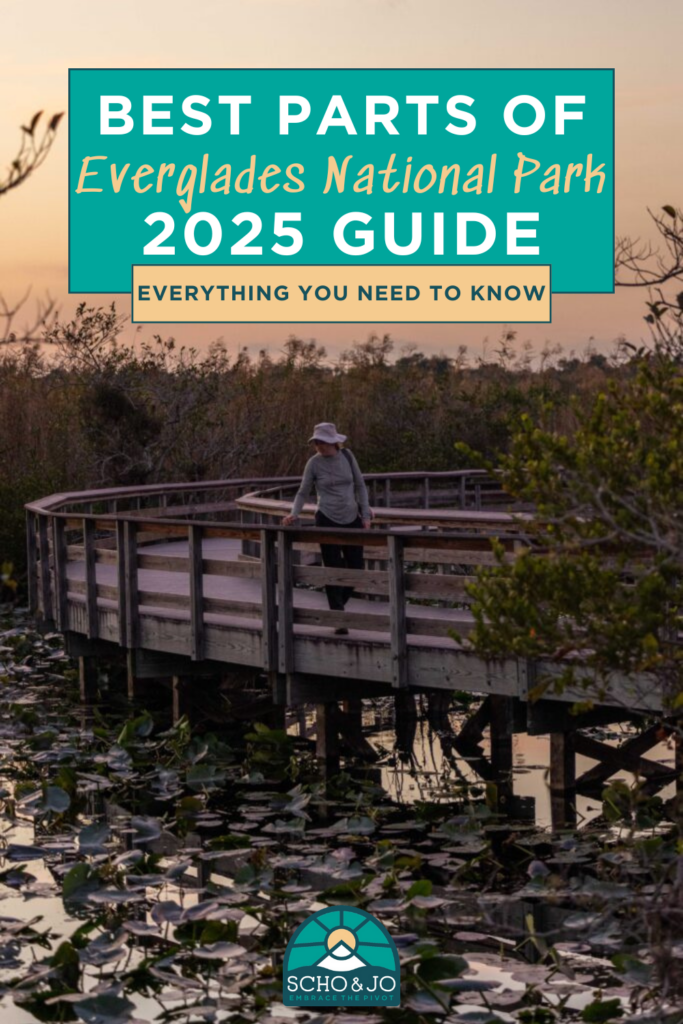
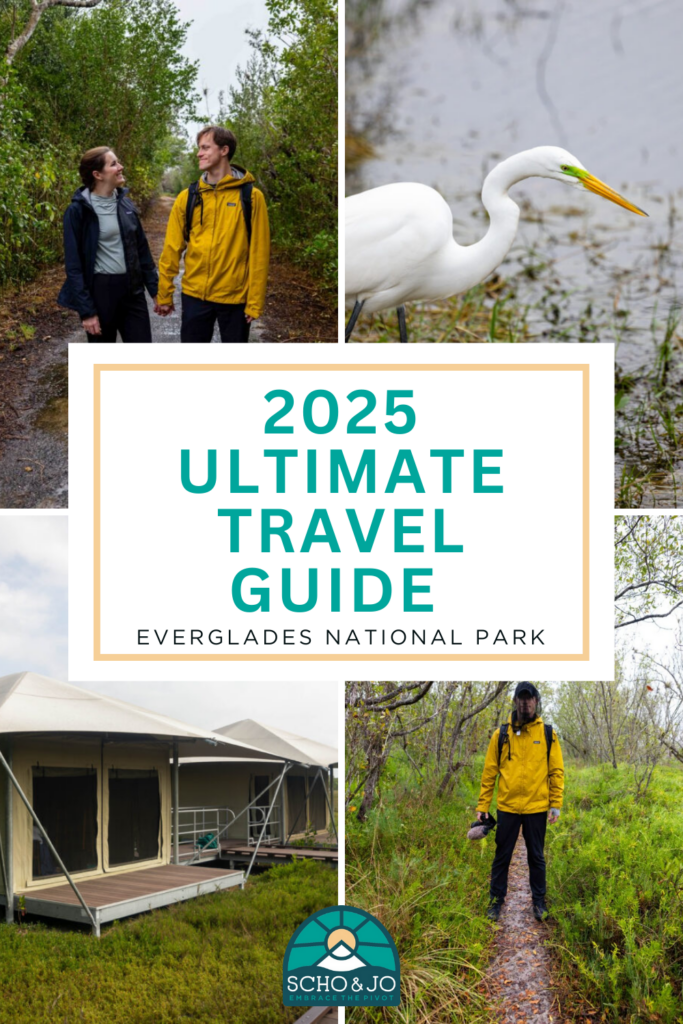
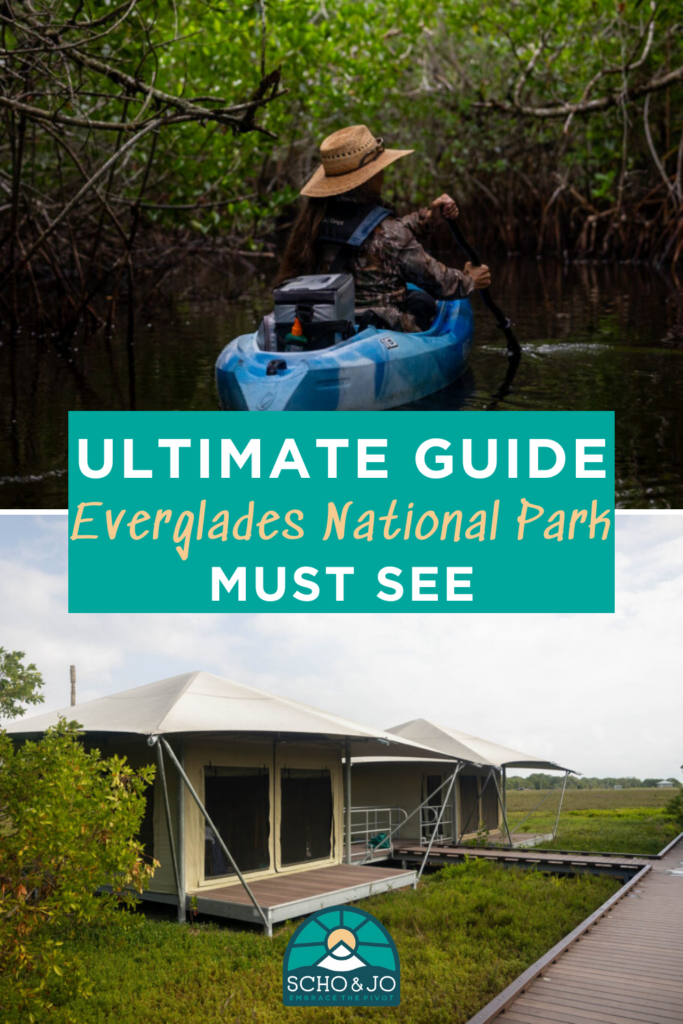

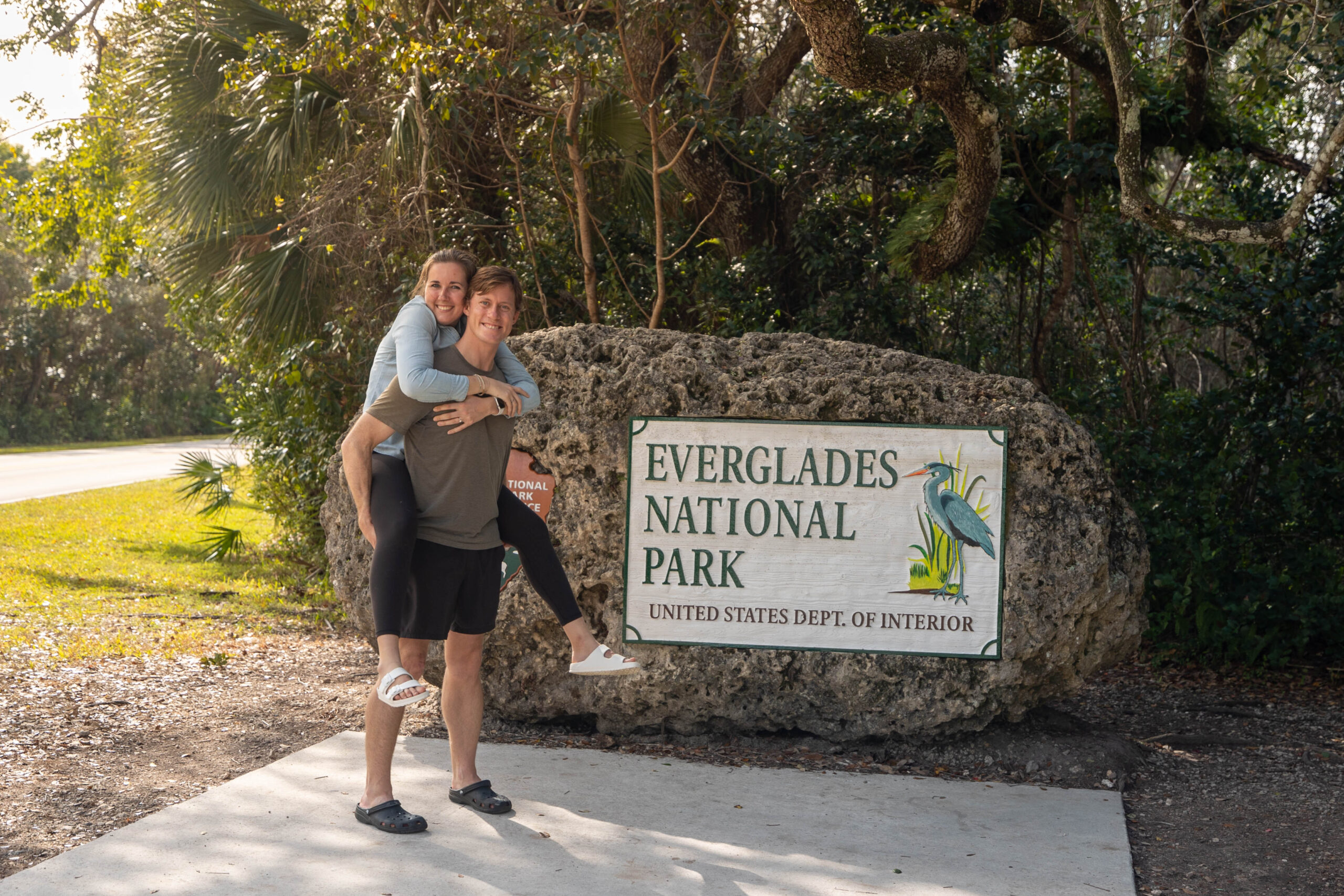
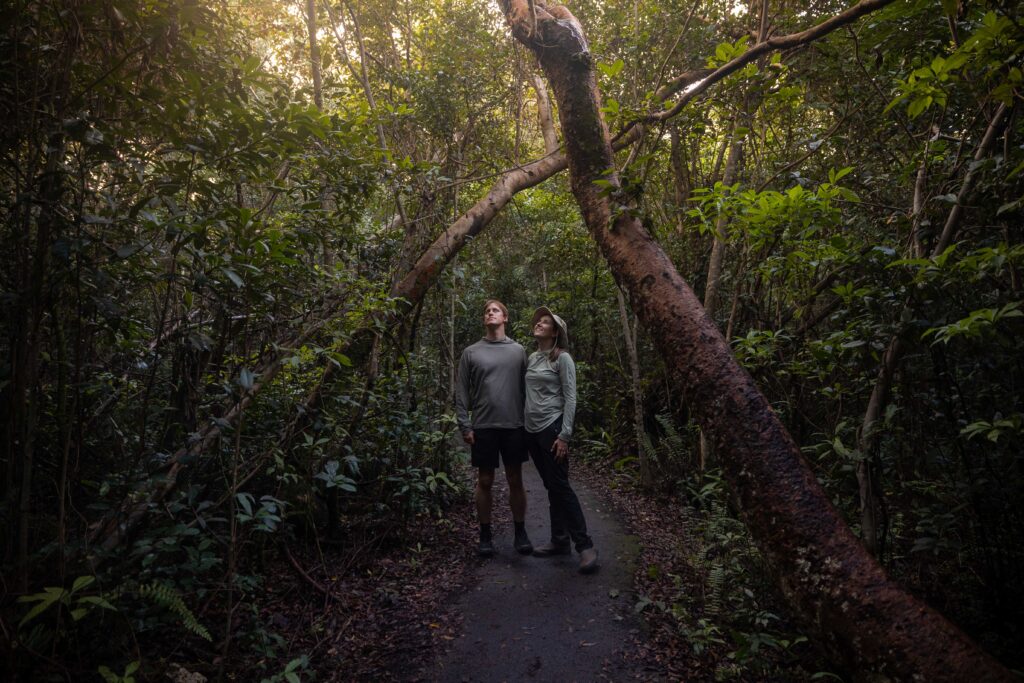
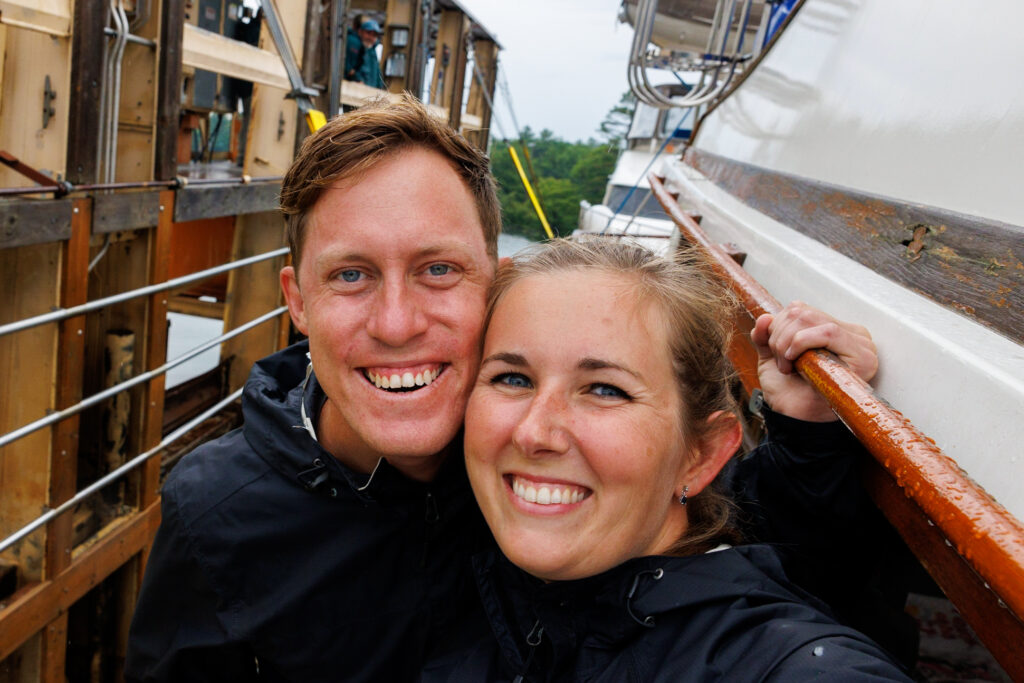

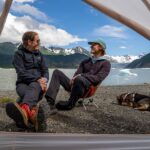
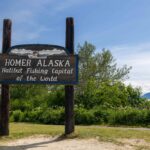

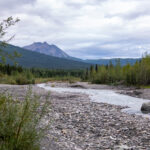
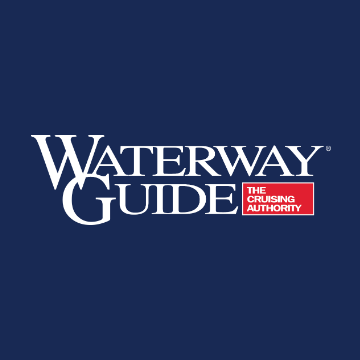
Leave a Reply